University Library

Guides to Sources on Russian History and Historiography
- Collections
- Slavic Reference Service
- Research Resources
- Visiting Scholars
- Events and News
All of the general bibliographic guides for Russia and those for the Slavic world in general will be important for historical research. If you have not consulted them, it is wise to examine them before looking at the guides for specific disciplines.
Guides for historical materials are varied in scope and focus. Many will include information on archives, particularly on guides to the historiographic literature. Others will contain lists of history periodicals and their indexes. Biographical and genealogical sources are frequently included in historical bibliographies, as are sources on heraldry and archives. Other sources for historical research include chronologies, historical atlases, dictionaries of terminology, and subject encyclopedias. Biographies of historians are also to be found in a variety of specialized resources many of which are listed in the section below on Russian historical biography . Emigre resources are treated in a separate section as are the materials for Russian literature . Both of these are areas of great importance for historians. Those seeking material specific to the fine arts will find them in the section on Russian arts .
This list will provide examples of all of these sources but will emphasize the bibliographic materials, as these are still basic to all historical research. Frequently, the other sources mentioned above can be identified using a good bibliographic source. The purpose of this section is not to list every historical resource available; the list is by no means comprehensive. Rather, the goal is to list sources that can act as finding aids for historical research and to make the scholar aware of the range of sources available. Frequently, older published sources will be included. This is because they contain the best annotations and clearest listings of historical resources. When possible, online sources are included. Those electronic resources that are included will act as “portals” to other resources on specific historical topics.
Bibliography of Bibliographies and Historiographical Bibliographies
Bibliografiia russkoi bibliografii po istorii sssr. annotirovannyi perechen bibliograficheskikh ukazateli izdannykh do 1917..
Moskva: Izd-vo. Vsesoiuznoi knizhnoi knizhnoi palaty, 1957. 197p. U of I Library Call Number: Russian Reference 016.947M85b
This is a superbly annotated guide to bibliographies on Russian history published up to 1917. This project was a joint effort of the State Historical Library (Moscow) and the Russian National Library (Petersburg ): State Historical Library (Moscow) compiled the section on the history of the SSSR; the Russian National Library (Petersburg) wrote the sections on general history. Along with historical bibliographies, this bibliography includes bibliographies of publications of societies and organizations, indices of historical journals, and lists of works by Russian historians. Individual entries for historians often include biographical materials as well as bibliography. The volume concludes with an author/title and a general name index. This guide is the best place to start a search for bibliographies on any historical subject before 1917.
Istoriia SSSR. Annotirovannyi perechen russkikh bibliografii izdannykh do 1965 g
Moskva: Izd-vo. ‘Kniga,’ 1966. 427p. U of I Library Call Number: International & Area Studies Russian Reference (Slavic) and Main Stacks 016.947M85B 1966
This is a continuation of the work listed above, compiled in a joint effort by the Russian State Library (Moscow) and the State Historical Library (Moscow) . Each item is described in detailed annotations. Materials included are monographs, articles in books and periodicals, and journal indexes, and are divided into four sections: I. General Works; II. Bibliographies on the history of the USSR up to 1861; III. History of the USSR from 1861-1917; IV History of the USSR during the socialist period and the construction of communism. The volume includes bibliographies of historiography, of memoir literature, of individuals, and of histories of various republics of the USSR (Ukraine, Central Asia, etc.) The lengthy section devoted to biobibliographical works perhaps deserves special attention as it lists bibliographies of works by Russian/Soviet historians and works about them. Since entries are well annotated, the scholar will have a clear picture of the scope of each work cited as can be seen in the entries below reproduced from p. 164 of the bibliography.
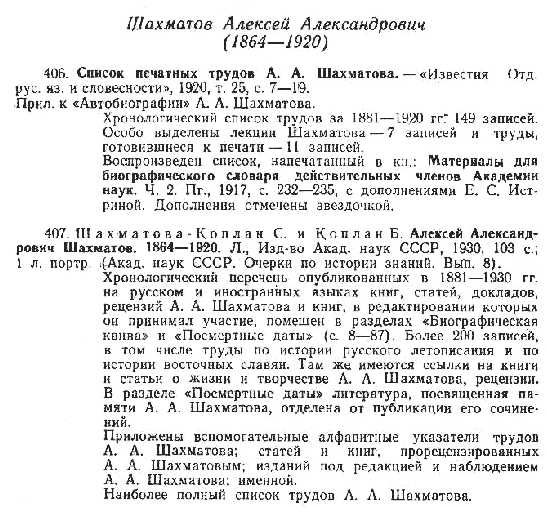
The work does not include bibliographies of dissertations or manuscript materials. The volume is by subject in general, but an index of authors and titles and a general name index make it easy to find specific bibliographies. This is an excellent place to begin historical research, particularly on the early Soviet period.
Guide to Russian Reference Books. Vol. II: History, Auxiliary Historical Sciences, Ethnography, and Geography.
Maichel, Karel. Edited by J.S.G. Simmons. Stanford: Hoover Institution, 1964. 297p. U of I Library Call Number: International & Area Studies Russian Reference (Slavic), History, Philosophy, & Newspaper, Main Stacks, and Oak Street Facility 016.9147 M24g V. 2
The purpose of this work is to bring together in one annotated volume all of the “substantial” bibliographic and reference tools relating to Russian history. Maichel compiled this list based on the major Slavic collections in the U.S., so that scholars would know that such sources exist outside of Russia. Sections include Russian history, World history, Auxiliary historical sciences, Ethnography and Geography. The editor has included works published through 1963.By and large Maichel has selected bibliographies for this volume, but biographical and terminological dictionaries, encyclopedias, gazetteers, chronologies, atlases, and handbooks can also be found here. Sources are, for the most part, in Russian, English, French and German. A cumulative author, title, and subject index rounds out the book.
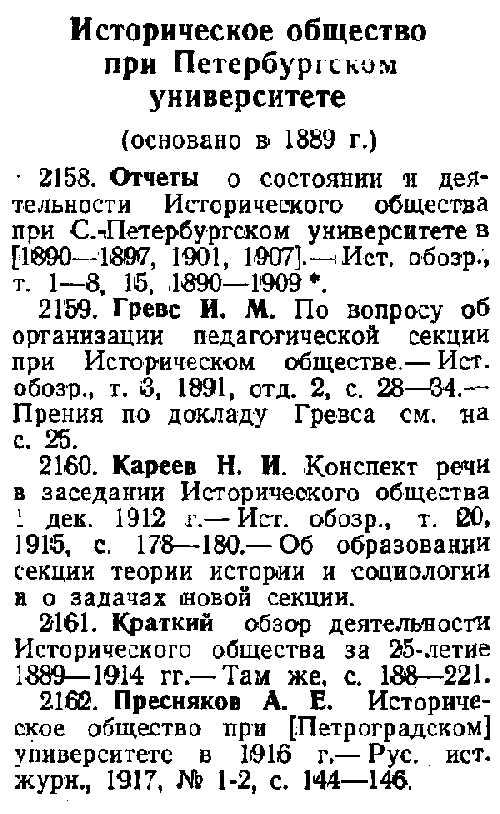
Istoriia istoricheskoi nauki v SSSR. Dooktiabrskii period. Bibliografiia.
Moskva: Nauka, 1965. 703p. U of I Library Call Number: Main Stacks and Oak Street Facility 016.947 M85IST
This bibliography covers the historiography of Russia up to 1917. Citations are to books, articles in journals, sborniki , newspapers, and dissertations published up to 1963. All kinds of historical study are included, although Church history is covered very selectively. The bibliography itself is divided into three parts: General works, Literature on the work of historical societies and groups, and Literature on individual historians.
Entries provide full bibliographic information but are not annotated. However, the compilers frequently supply information on the topic, society or individual that is the subject of the section. So, for example, in the section on the Russkoe arkheologichesko obshchestvo there is basic information on the founding of the society.
The bibliography covers historians who emigrated, but works published in emigration are not included. The compilers used numerous collections for their citations, including GPIB, the Lenin Library, and the Saltykov-Shchedrin Library. Other citations were taken from the massive bibliographies of Mezhov and Lambin . Entries are not annotated, but the contents for some sborniki and multi-volume works are listed. The work concludes with a cumulative name/title index.
Istoriia istoricheskoi nauki v SSSR. Sovetskii period. Oktiabr’ 1917-1967. Bibliografiia.
Moskva: Nauka, 1980.733 p. U of I Library Call Number: International & Area Studies Russian Reference (Slavic) 016.9470072 IS769
This is a continuation of the bibliography listed above, covering historiography from 1917 to 1967. It was compiled by GPIB in cooperation with the various institutes of history of the Academy of Sciences and regional affiliates. An enormous number of sources were consulted for the compilation of this bibliography, including the collections of the GPIB, the Lenin Library, and the Saltykov-Shchedrin Library, as well as bibliographic publications such as the INION historical bulletins. Most of the items cited are in Russian, but some citations are to works in languages of the other republics of the USSR.
The volume is divided into two parts. Part one covers general topics. Each chapter of the bibliography is devoted to some area of historiography, from the historiography of world history to the historiography of the history of feudal Russia. The second part is devoted to the activities of scholarly organizations and historical societies. Here can be found information on the publications and history of individual institutions.
An index of authors, editors, compilers, and titles of sborniki and periodicals provides easy access to individual works.
Bibliografiia bibliografii na sovremennom etape. Sbornik statei i bibliograficheskikh materialov.
Sankt-Peterburg, Rossiiskaia natsionalnaia biblioteka, 1995. 146 p. U of I Library Call Number: International & Area Studies Russian Reference (Slavic) 011.00947 B471
This book contains a series of bibliographical essays on the history of bibliography in Russia. The most useful section for historians is the chapter, “Novye ukazateli, issledovaniia i obzory bibliographicheskikh posobii i spravochnykh izdanii, opublikovanye v 1987-1993 gg.” Many of these bibliographies are historical in nature, and this publication currently serves to cover the most recent years of Russian bibliographies. While the volume has a brief table of contents, there are no indices.
Historical Bibliographies, Catalogs, and Guides to Research
General’nyi alfavitnyi katalog knig na russkom iazyke (1725-1998).
URL: http://nlr.ru/e-case3/sc2.php/web_gak
This scanned copy of the card catalog of the Russian National Library is an invaluable tool for anyone planning a trip to St. Petersburg or trying to verify a specific title. It does require a bit of patience. As with the scanned catalogs of the Jagiellonian University Library or the Czech National Library , access is by “main entry,” i.e. cards are filed by author or corporate author. There is no subject access. In order to search this catalog , the user will enter a term on the search screen. The result returned will be a list of possible entry points for the catalog, rather like the tabs on index cards. Selecting one of these will position the user in a range of cards. The user must select the cards, by number and essentially “browse” the cards. Below is a sample entry from the catalog.
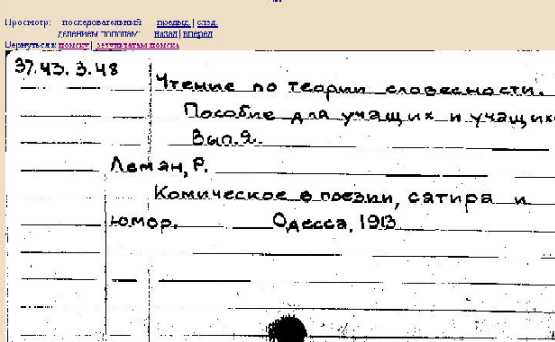
The catalog includes citations to periodicals, dissertations, and maps as well as monographic works. The precise holdings for periodicals are not included in this version of the catalog. However, the microfiche edition contains a supplement of periodical titles and holdings for the Russian National Library.
Russkaia kniga grazhdanskoi pechati XVIII v. v fondakh bibliotek RF (1708-1800)
URL: http://www.nlr.ru/rlin/ruslbr_v2.php?database=RLINXVIII
This catalog lists the holdings of eighteenth century Russian books in the libraries of the Russian Federation, specifically the State Historical Library (GPIB), the Russian National Library, the Russian State Library, the library of the Academy of Sciences (BAN) and the library at Moscow State University. The records are fully searchable. It is possible to search not only by title or name, but also by organization, years of publication, place of publication, country of publication and language. The latter seems somewhat peculiar given that this is a database of Russian language publications. This search allows you to identify those items that have been translated.
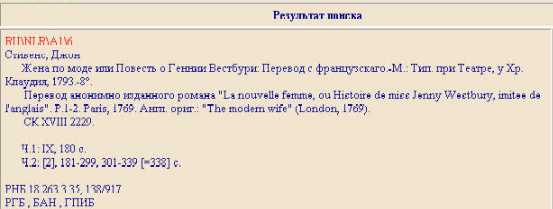
As can be seen from this example, holdings at several institutions are listed, as is full bibliographic information. This is a particularly valuable resource for those planning to travel to Russia.
Spravochniki po istorii dorevoliutsionnoi Rossii. Bibliograficheskii ukazatel’
Zaionchkovskii, P.A. . 2 nd ed. Moskva: Kniga, 1978. 640 p. U of I Library Call Number: Russian Reference 016.947 Sp76 1978
This excellent bibliography covers historical material on the history of Russia from the 15 th century to February 1917 and is an excellent source of information on government publications of all kinds: laws, censuses, ministry publications, statistical data, etc.. The first section covers general reference works such as encyclopedias, dictionaries, atlases, necrologies, and archival guides. The rest of the guide is divided into broad subject areas and then subdivided into specific topics that are outlined in the table of contents. The broad subject headings are Social and Economic Affairs, Political Affairs, Military Affairs, Sociopolitical Movements in the 19 th and 20 th c., Science and Education, and Regional Administrative Affairs. Most entries are annotated. Zaionchkovskii used the collections of several libraries, including GPIB , the Ermitazh library , and the catalog of the Tsentralnyi gosudarstvennyi arkhiv drevnikh aktov for material before the 18 th c. Works on archaeology and ethnography are not included, nor are works related to the history of literature, art, museum studies, or bibliography. However, publications with the activities and membership of societies devoted to these subjects are listed.
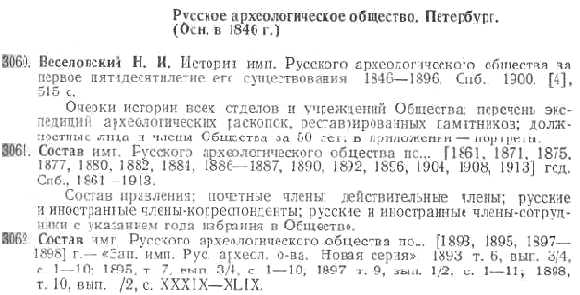
This entry gives a good idea of the kind of information one can expect to find in Zaionchkovskii. For those looking for information on the membership of a certain organization, academic institution, military unit or government agency, Zaionchkovskii will provide the most complete list of resources. The types of sources are quite different from those you will find on the same topic in a source like Istoriia SSSR.
A general index of subjects, governmental bodies, organizations, and institutions concludes the book and aids in locating materials on very specific topics.
Dorevoliutsionnye izdaniia po istorii SSSR v inostrannom fonde Gos. Publichnoi Biblioteki im. M. E. Saltykova-Shchedrina. Vyp. 1- .
St.Peterburg:Izdatel’stvo Rossiiskoi natsional’noi biblioteki, 1964- U of I Library Call Number: International & Area Studies Russian Reference (Slavic) 016.947 G699d v.3-5
Each volume of this bibliography focuses on a different topic or time period in Russian history, as viewed by Western historians. The first volume, published in 1964 is devoted to general works on Russian history up to the 18th century. The second volume was devoted to works on education in the early Russian empire. Volume three is a compilation of foreign works on the Russian nobility. Volume four focuses on the Napoleonic wars and volume five, published in 2001 is devoted to the reign of Alexander I. All titles included here were published before the revolution. All items cited are in the Russian National Library and provide a view of how the West viewed Russia. The most recent volumes are well indexed including an author and title index.
Istochniki po istorii naselennykh punktov dorevoliutsionnoi Rossii.
Vypusk 1. Pechatnye istochniki perioda Rossiiskoi Imperii (1721-1917 gg.) Sbornik bibliograficheskikh materialov. Sankt-Peterburg: Rossiiskaia Natsional’naia Biblioteka , 1996- U of I Library Call Number: International & Area Studies Russian Reference (Slavic) 016.30770947 IS7 V.1-
This is an unusual resource on the populated places of prerevolutionary Russia. The book contains four bibliographic essays. The first, entitled “ Pechatnye istochniki po istorii naselennykh punktov Rossiiskoi imperii (1721-1917 gg.), ” lists all the sources that will be described in detail in the succeeding essays. It is primarily a list of 139 sources that are used throughout the rest of the volume. Many of these titles were multivolume sets that until this publication were very difficult to use. The compilers of this volume have analyzed the contents of these sets and organized them in the context of their relation to each inhabited place in Russia in the 19th century. So, for example, the basic publication information on the set Gorodskoe poseleniia v Rossiiskoi Imperii is listed in the first essay under the title. In second essay there is a listing of every town that appears in that volume, with a volume and page reference to the entry.
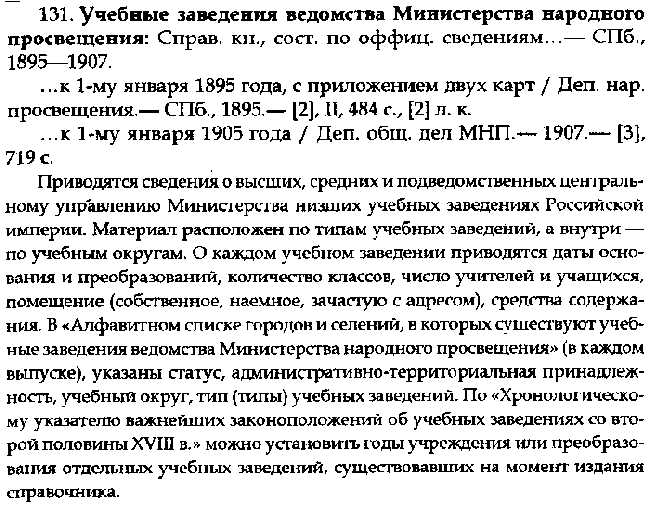
The second essay is entitled “ Alfavitnyi ukazatel naselennykh punktov, opisannykh v izdaniiakh: ‘Gorodskie poseleniia v Rossiiskoi imperii,’ ‘Voenno-statisticheskoe obozrenie Rossiiskoi imperii’ i ‘Materialy dlia geografii i statistiki Rossii, sobrannye ofitserami General’nogo shtaba. ‘” This is followed by “ Vidy gorodov i drugikh naselennykh punktov i izdanii ‘Zhivopisnaia Rossiia’. (Ukazatel illiustratsii). ” The volume closes with “ Kartograficheskie istochniki po istorii otdel’nykh mestnostei i naselennykh punktov Rossiiskoi imperii.”
As can be seen from the chapter titles, this is more than an index of a few titles on population or simply a bibliography of publications on that subject. This is a volume that can be used to locate regional maps or illustrations as well as statistical data. The first section includes a subject index for the main list of entries. Each section also includes an introduction by the compiler.
Svodnyi katalog Russkoi nelegal’noi i zapreshchennoi pechati XIX veka . V.1-9.
U of I Library Call Number: International & Area Studies Russian Reference 015.47 Sv512 V.1-9
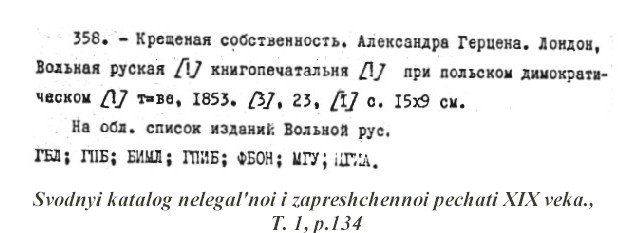
This unique bibliography provides a detailed record of all illegal publications of the 19th century. The first six volumes are arranged alphabetically by main entry, usually the author. Where no author is listed the works are listed by title. Volume seven is a chronological index. Volume eight includes an index of organizations, intellectual circles, illegal publishers and a name index. Each entry is very thorough providing complete citation information.One of the features of the citations is the inclusion of location information. Most citations also include reference to published references to the work. A list of all the references and a supplement to the other volumes make up the content of volume nine.
Ekaterina II: Annotirovannaia bibliografiia publikatsii.
Babich, I. V., Moskva: “Rossiiskaia politicheskaia entsiklopediia” (ROSSPEN), 2004. 928 pp. U of I Library Call Number: International & Area Studies Russian Reference (Slavic) 947.06 C28Wba
This extensive work lists the Russian publications of Catherine the Great issued through 1998. Each entry in annotated in detail and divided into several parts that indicate the chronological period of the publication, its content, supplementary materials.
Russkaia istoricheskaia bibliografiia: Ukazatel’ knig i statei po russkoi i vseobshchei istorii i vspomogatel’nym naukam za 1800-1854 .
Mezhov, V.I. St. Peterburg, 1892-93. 3 vols. vol. 1: xvi +373p., vol. 2: vii + 377 p. vol. 3: x +514 p. U of I Library Call Number: Russian Reference 016.947 M57ru 1974 HathiTrust full-text link: vol. 1 http://hdl.handle.net/2027/nyp.33433033574066 vol. 2 http://hdl.handle.net/2027/nyp.33433033574074 vol. 3 http://hdl.handle.net/2027/nyp.33433033574058
This bibliography contains references to books, book reviews, articles in journals, newspapers, gubernskiia vedomosti , sborniki , almanakhi, and kalendari on history and related subjects that were published in Russian from 1850-1854. The compilation was based on the collection of the Russian National Library , where Mezhov worked, and it was originally intended to be six volumes, but only three were published because of Mezhov’s death. The citations created for the final three volumes are on cards currently housed in Pushkinskii Dom, the Institut Russkoi Literatury of the Russkiia Akademiia Nauk in Petersburg. Unfortunately, there are no indexes, but the table of contents of each volume is extensive and arranged by subject. The section on biographical sources in the second volume is arranged by the name of the subject, not the author of the work.
Russkaia istoricheskaia bibliografiia. God 1855-1864 .
Lambin, P.P., and B. P. Lambin ., St. Petersburg: Imperatorskaia akademiia nauk, 1861-1864. 10 vols. U of I Library Call Number: International & Area Studies Russian Reference (Slavic) and Oak Street Facility 016.947 L17R. History, Philosophy, & Newspaper FILM 016.947 L17R HathiTrust full-text links: vols. 1-4 http://hdl.handle.net/2027/nyp.33433033567789 vols. 5-7 http://hdl.handle.net/2027/nyp.33433033567797 vols. 8-9 http://hdl.handle.net/2027/nyp.33433033567805
This annual bibliography provides very broad coverage of all historical works published in Russian for each year, including books, periodical publications, articles and reviews in books and newspapers, and maps. Each volume is divided into broad sections: Russian history, General history, and Articles in periodical publications. History here, and in Mezhov’s 10 volume work, is defined in its broadest sense to include the history of education, literature, religion and other topics. It often seems that the compiler included material judged to have historical significance, as well as those writings that would be called strictly historical in nature. The bibliographies were compiled on the basis of the collection of the library of the Russian Imperial Academy of Sciences in St. Petersburg. Each volume has a name index and a geographic/subject index. An index of periodical publications appears with the 1856 volume.
Russkaia istoricheskaia bibliografiia za 1865-1876.
Mezhov, V. I. S-Petersburg, Tip. Imp. Akademiia Nauk, 1882-1890. 8 vols. U of I Library Call Number: Russian Reference 016.947 M57R 1974 HathiTrust full text: vols. 1-2 http://hdl.handle.net/2027/uc1.b3452315 vols. 3-4 http://hdl.handle.net/2027/uc1.b3452316 vols. 5-6 http://hdl.handle.net/2027/uc1.b3452317 vols. 7-8 http://hdl.handle.net/2027/uc1.b3452318
This 8 volume compilation was created to continue the work of the Lambins . The bibliographical citations make up the first six volumes and cover books, book reviews, journal and newspaper articles on Russian and general history in Russian and Russian history in west European languages. Mezhov used the collection of what is now the Russian National Library as well as bibliographies of new books in Knizhnyi vestnik , Knizhnye novosti and the newspaper Pravitel’stvennyi vestnik . Brief annotations are given for some works, and multivolume works or sborniki are listed with their tables of contents. Volumes 1-5 cover Russian historical and auxiliary sciences such as geography, ethnography, statistics, and law. Volume 6 covers general world history in Russian. Volumes 7 and 8 are the indexes to the first six volumes: a mammoth combined index of authors and subjects, including both personal names and geographic names as subjects. A separate index of books and articles in foreign languages is included, as is an index to the tables of contents of all six volumes.
Obzor zapisok, dnevnikov, vospominanii, pisem i puteshestvii, otnosiashchikhsia k istorii Rossii i napechatanykh na russkom iazyke. Vyp. 1-5.
Mintslov, S. P. Novgorod: Guber. Tipografiia, 1911-1912. U of I Library Call Number: International & Area Studies Russian Reference (Slavic) 016.947 M66O HathiTrust full-text link: http://hdl.handle.net/2027/mdp.39015034585722
Mintslov’s annotated index of Russian and foreign sources published in Russia and abroad in books, journals and newspapers has a somewhat unusual arrangement. Items chronologically span the period of the eighteenth century through 1887 (articles) and 1907 (books). The sections cover three chronological periods: Ancient times to Paul I; The Time of Alexander I and Nicholas I; The time of Alexander II and Nicholas II. Each chronological section has an index of author and subject names. This was one of the first comprehensive compilations of memoir and travel literature. Entries often include reviews and literature about the authors. Thus, while the number of items listed in the bibliography is 4,791, it includes references to a far greater number of publications.
This bibliography was continued serially in 1915. The June, July and August 1915 issues of Russkaia Starina (IU call number: Main Stax 947.005 RUSK) include what was to be Mintslov’s final installment of the bibliography. These articles covered materials published after 1907.
Katalog: Russkie ofitsialnye i vedomstvennye izdaniia XIX – nachala XX. T.I-.
Sankt-Peterburg: Blits. 1995- U of I Library Call Number : International & Area Studies Russian Reference (Slavic) and Oak Street Facility 025.3434 K155 V.1-6
This is a catalog of the official and departmental publications held in the reference library of the Russian State Historical Archive . The catalog is organized by governmental body. Thus the first volume includes references to the publications of the Duma, the State Senate and the Holy Synod. Entries are brief, but provide full bibliographical information for each title. The next seven projected volumes will include the publications of government ministries. The remaining volumes will focus on “extra-ministerial” publications. This is a valuable new source for anyone doing research on Imperial Russia and planning research in the Russian Federation. The publications of specific bodies can be easily identified and tracked. This multi-volume bibliography is projected to be 10 volumes when complete. Already 5 of those volumes are available. Some of the later volumes may be the most interesting as they are to include the publications of all “extra-ministerial, social, scientific, cultural and popular institutions” (p.12). The only difficulty in using this set is that they do not have individual indexes.
Istoriia SSSR. Materialy dlia bibliografii inostrannoi bibliografii (1699-1991 gg.)
Mamontov, M. A. and V. V. Antonov. St. Peterburg: Rossiiskaia natsionalnaia biblioteka, 1997. 392 p. U of I Library Call Number: International & Area Studies Russian Reference (Slavic) and Oak Street Facility 016.947 M311i
Over 3,000 works are included in this source tracing the history of Russia as it was written in other courntries. It is a very thorough compilation of bibliographical materials listing some Western sources that date from the 18th century. As with many of its Russian counterparts, this guide includes indexes of journals and biographical materials on Western historians. It also includes references to some archival sources, such as Grimsted’s invaluable guides on the subject. The entries provide full bibliographic information, but rarely are annotated. Some include the contents of the publication.
While this is an excellent source to research Western studies on Russia, it does have some peculiar gaps. For example, The Modern Encyclopedia of Russian and Soviet History (MERSH) is not included here. On the other hand, one of the more useful inclusions in this source is the list of indexes of history periodicals. There are several indexes: a name index, heading index, and a series index. The volume includes two supplements. The first lists publications on the history of Russian property in America. The second lists publications on the history of the Bialystok area.
This guide also brings many of the earlier publications up to date. It lists in one source the published Western bibliographical resources on Russian history issued up to 1991. This fact alone makes this a valuable resource for the student of Russian history.
Istoriia SSSR. Ukazatel knig i statei, vyshedshikh v 1872-1917 gg.
Moskva: GPIB, 1957. U of I Library Call Number: International & Area Studies Russian Reference (Slavic) and Main Stacks Q. 016.947 M85IS
This volume was the first in a series of bibliographies planned to cover historical scholarship for the years prior to 1917 that were not covered by Mezhov and Lambin. It covers scholarship on historians and historiography written during the period 1872-1917. It is divided into two main sections: first, general works on historiography; then a larger section of literature on individual historians. The latter section is divided further into chronological periods. Historians are listed alphabetically within time periods.
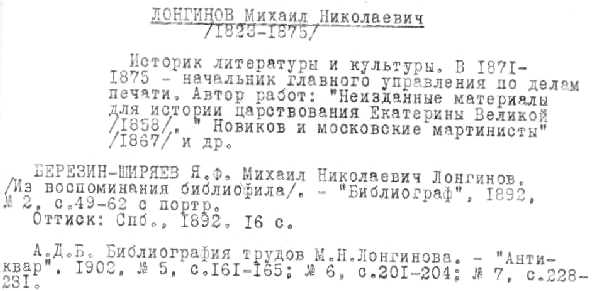
Some entries are annotated, and brief biographical information is given for many historians. This guide concludes with a useful chapter on biographical and biobibliographical dictionaries that lists the persons covered within each book. A general name index is provided as well.
Pervaia Mirovaia Voina. Ukazatel’ literatury 1914-1993 gg.
Moskva: Rossiiskaia Akademiia Nauk, 1994. U of I Library Call Number: International & Area Studies Russian Reference (Slavic) 016.940347 P435
This slim volume lists the holdings of the Social Sciences Library of the Academy of Sciences on World War I. The citations are arranged chronologically and include books and pamphlets on the topic. The volume has an author index. It is included here as it is one of the few bibliographies on the subject of World War I. Its arrangement provides the scholar with a view of the development of the study of this period both before and after the Revolution.
Historical Encyclopedias
There are numerous single-volume encyclopedias that are of interest to scholars. Many are highly specialized. New publications can best be identified by checking an online library catalog, or by searching such sources as ABSEES or the Russian National or State Library catalogs . There are several online sites of interest to those seeking historical information. One that combines the resources of historical encyclopedias and dictionaries is www.rubricon.com (see below).
General historical encyclopedias:
Otechestvennaia istoriia. istoriia rossii s drevneishikh vremen do 1917 goda..
Moskva: “Bol’shaia Rossiiskaia Entsiklopediia, 1994- . Tom 1- . U of I Library Call Number: Main Stacks 037.1 Ot2 v.1-3
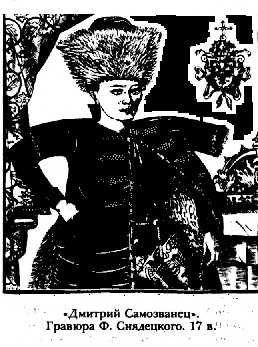
This new historical encyclopedia reflects the changes in the study of Russian history since the downfall of the Soviet government. Many emigre figures who would never have been included in a Soviet publication can be found here, discussed in detail. All of the entries are substantial, are signed and include bibliographies. (For an example from the encyclopedia, click on the picture of the Dmitrii “The Pretender” on the left). History is defined broadly here and there are entries on topics of interest to those researching the history of education, art, law and many other subjects. There are many illustrations in the volume.
The compilers note that they hav consulted archival materials and standard sources in the production of this source. Anyone seeking historical information on religion, economics, culture, diplomacy, military history or biography will find this a rich source.
Follow the link for an entry from Otechestvennaia istoriia.
Sovetskaia istoricheskaia entsiklopediia.
Moskva: Izdatel’stvo “Sovetskaia Entsiklopediia”, 1961-1976. U of I Library Call Number: Main Stacks and Oak Street Facility 903 So89 v.1-16
This encyclopedia covers historical topics on all areas of the world. It is, of course, told from the Soviet point of view. If the reader is aware of how this will affect the interpretation in the encyclopedia, it is still a valuable resource. There are numerous historical and ethnographic maps. All articles include a bibliography and are signed.
The articles are scholarly and intended for the serious student of history. The arrangement is standard alphabetical, with each volume adding a list of abbreviations and maps. It is a useful biographical source, again with the scholar always keeping in mind the restrictions imposed by censorship that affect the content and choice of entries.
Modern Encyclopedia of Russian and Soviet History.
Gulf Breeze, FL:Academic International Press. 19 U of I Library Call Number : International & Area Studies Russian Reference (Slavic) 947.003 M72 v.1-61, Supplement v.1-
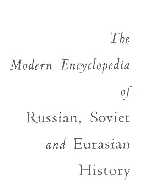
This encyclopedia is suited to a broad audience with its English language entries and extensive bibliographies. The volumes cover a wide range of historical topics from culture to government to the press. All articles are signed. This is an invaluable resource for the student, with information on thousands of topics. It is also a helpful tool for the scholar, providing basic information and bibliography on so many subjects. The volumes are arranged alphabetically. There are indexes of entries by authors and by time periods. It has many uses, not least of which is as a biographical source. The entries all include general information on the topic, placing it in historical context. All entries are signed. This gives the student the opportunity to pursue other materials by the author. is also an online index of each volume available at the publisher’s site . Supplementary volumes have begun to appear. The supplement has, so far, only reached the letter “A.”
Top of Page
Rubricon.ru
URL: www.rubricon.com
There are a number of sites on the world wide web that combine the resources of many encyclopedias, making several resources searchable at the same time. This site attempts to accomplish this for a number of encyclopedias and encyclopedic dictionaries. Among the sources that are searched are Dal’s Tol’kovyi Slovar’ , the Bol’shaia Sovetskaia Entsiklopediia, the Brokgauz and Efron encyclopedia, an historical dictionary Istoriia Otechestva , and the encyclopedias of Moscow and St. Petersburg. Clearly, this is a very useful source for ready reference. The searches will retrieve all articles in which the search term appears.
The one flaw in the material here is the lack of any illustrative materials in many of the sources. Tables and illustrations are completely absent from the Brokgauz Encyclopedia . The Illiustrirovannyi Slovar’ contained illustrations and there were maps and some charts for the Istoriia Otechestva . However, in general, there were very few graphic materials in this database. Nevertheless, the ability to search so many sources in one place, by entering one term is very useful.
Information on each of the sources is supplied at the site. If the user clicks on the name of the encyclopedia, supporting information on the source will appear.
Subject historical encyclopedias:
Putevoditel’ po nauchnym obshchestvam rossii..
Komarova, I. I. New York: Norman Ross Publishing, 2000. U of I Library Call Number: International & Area Studies Russian Reference (Slavic) Q.067 P982
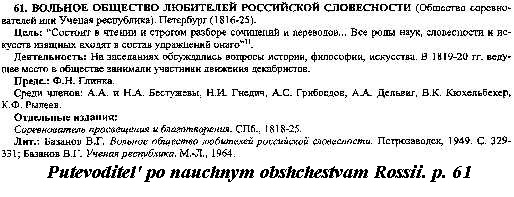
The brief citation above hardly does justice to this wonderful reference tool. This source lists some 530 societies of the prerevolutionary period. The guide is the result of twenty five years of research. It not only lists the societies and basic information about them, it serves as an index to the contents of their publications. Each entry includes the name of the society, its charge, activities, and publications, and cites literature about it. In those cases where the contents of the publications of a society are listed in a separate publication, the compiler has indicated where the contents can be found. So, for example, Komarova cites the Sbornik Istoriko-filologicheskogo obshchestva pri Kharkovskom universitete, and rather than listing the contents, she notes that they are listed in Sistematicheskii ukazatel’ k periodicheskim izdaniam istoriko-filologicheskogo obshchestva pri Kharkovskom universitete (1953).
The volume is arranged alphabetically by the name of each society. There are a number of useful indexes including a chronological index of societies, a geographical index, an index of names, and an alphabetical index of periodical publications. The compiler has included references to publications that did not survive the turbulent years of the Revolution using other indexes to identify this information. The disadvantage of not having examined the works de visu is outweighed by the historical importance of presenting a complete picture of the history of Russia’s learned societies.
An ethnohistorical dictionary of the Russian and Soviet empires.
Olsen, James, S. Westport, Connecticut: Greenwood Press, 1994. U of I Library Call Number: International & Area Studies Russian Reference (Slavic) 305.800947 Et38
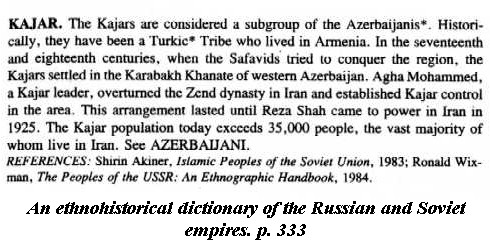
Politicheskie partii Rossii konets XIX – pervaia tret’ XX veka. entsiklopediia.
Moskva: “Rosspen,” 1996. U of I Library Call Number: International & Area Studies Russian Reference 324.24703 P759
This is an excellent source for anyone interested in the political movements in Russian in the late 19th and early 20th centuries. There are entries on political parties, their publications, and major figures in political movements. The entries are extensive with bibliographies and archival references. The volume includes eight supplements: a list of all political parties, the leaders of “Russkii narod”; the members of the “Soiuz” in 1917; members of the central committee of the “Partiia Progressistov”; members of the central committee of the “Konstitutsionno-demokraticheskaia Partiia”; members of the central committee of the “Partiia Sotsialistov-Revoliutsionerov” party; the governing body of the “Sotsial-Demokratia”party; and a list of all periodical publications of the political parties in Russia in 1917.
Entries are quite extensive providing a brief history of each of the parties, its development and liquidation. The biographical entries are also quite lengthy. The volume includes numerous photographs of major political figures of the period.
Grazhdanskaia voina i voennaia interventsiia v SSSR. Entsiklopediia.
Moskva: “Sovetskaia Entsiklopediia,” 1983. U of I Library Call Number: International & Area Studies Russian Reference (Slavic) 947.0841 G7952 1983
This source can serve as an introduction to the events of World War I in Russia. The articles are brief and do not include bibliographies. However, there are some useful features. For example, the entries on various divisions of the army end with a list of the commanding officers. The bibliographic sources listed at the end of the volume are also useful. The encyclopedia fully reflects a Soviet view of the war.
The Blackwell encyclopedia of the Russian Revolution.
Shukman, Harold. New York: Blackwell Ltd., 1988. U of I Library Call Number: International & Area Studies Russian Reference (Slavic) and Main Stacks 947.0841 B568
“The purpose of this Encyclopedia is to describe and analyze the events of 1917 in Russia, as well as their background and origin, and to show how they affected the political, economic, social and ethnic structures of the old empire and gave rise to the new order.”(p. vii). This reference source limits itself to just those structures and events that played a role in the Revolution. The arrangement is somewhat unusual. The compiler has arranged the entries in chronological order to limit the amount of duplication that would exist in a more traditionally ordered encyclopedia. The articles are listed in a detailed table of contents and the volume includes an equally detailed index. While most entries are intended to be self-contained, cross-referencing has been indicated with small capitals in the text. A special biographical section makes up the last 100 pages of the volume. Bibliographic references are in Russian and English.
Regional Encyclopedias
Sankt-peterburg, petrograd, leningrad: entsiklopedicheskii spravochnik..
Moskva: Nauchnoe izdatel’stvo “Bol’shaia Rossiiskaia Entsiklopediia”, 1992. U of I Library Call Number: International & Area Studies Russian Reference (Slavic) 947.453003 Sa 58
While this encyclopedia is directed at the general reader, it contains an enormous amount of historical and statistical data on one of Russia’s most important cities. Included in its pages are articles on many of the cities most important historical figures, publications, literary circles, archives, places and events. Most articles include bibliographies of the major works on a topic. There are numerous illustrations and maps, many quite specialized. It is possible to find a map of the the art and historical museums of the city and one of the armed camps of the Petrograd uprising of 1917. Basic architectural information is also readily available in this volume. The encyclopedia begins with a lengthy overview of the city’s history and natural environment, artistic and literary history and a separate bibliography on each topic.
Moskva: Entsiklopediia.
Shmidt, S. O. (ed.). Moskva:”Bol’shaia Rossiiskaia Entsiklopediia”, 1997. U of I Library Call Number: International & Area Studies Russian Reference (Slavic) 914.73103 M8532
Like Sankt-Peterburg, Petrograd, Leningrad , this volume is directed at a wide group of readers. It does contain a great deal of general information, but also an equal amount of more specialized detail about the city’s history and art. Beginning with a general essay on the city, the volume shares a similar structure with the Petersburg volume. However, it includes an index of topics covered in the volume and a list of scientific institutes in the city. Article are all signed and include basic bibliography. A very broad range of subjects are covered. Anyone seeking information on the history of a street, building or a biography of a major figure in the city’s history will find this volume valuable. Journals, newspapers, educational institutions, churches, historical events are all included here. Statistical data on the population of the city is available in the introductory essay.
Tri Veka Sankt-Peterburga Entsiklopediia v Trekh Tomakh. Os’mnadtsatoe Stoletie. Tom1, Kn.1-2.
Sankt-Peterburg: Filologicheskii fakul’tet Sankt-Peterburgskogo gosudarstvennogo universiteta, 2001.
Tri Veka Sankt-Peterburga Entsiklopediia v Trekh Tomakh. Deviatnadtsatyi Vek. Tom 2, Kn 1- .
U of I Library Call Number: International & Area Studies Russian Reference (Slavic) 914.721003 T73 V.1:1-2:6
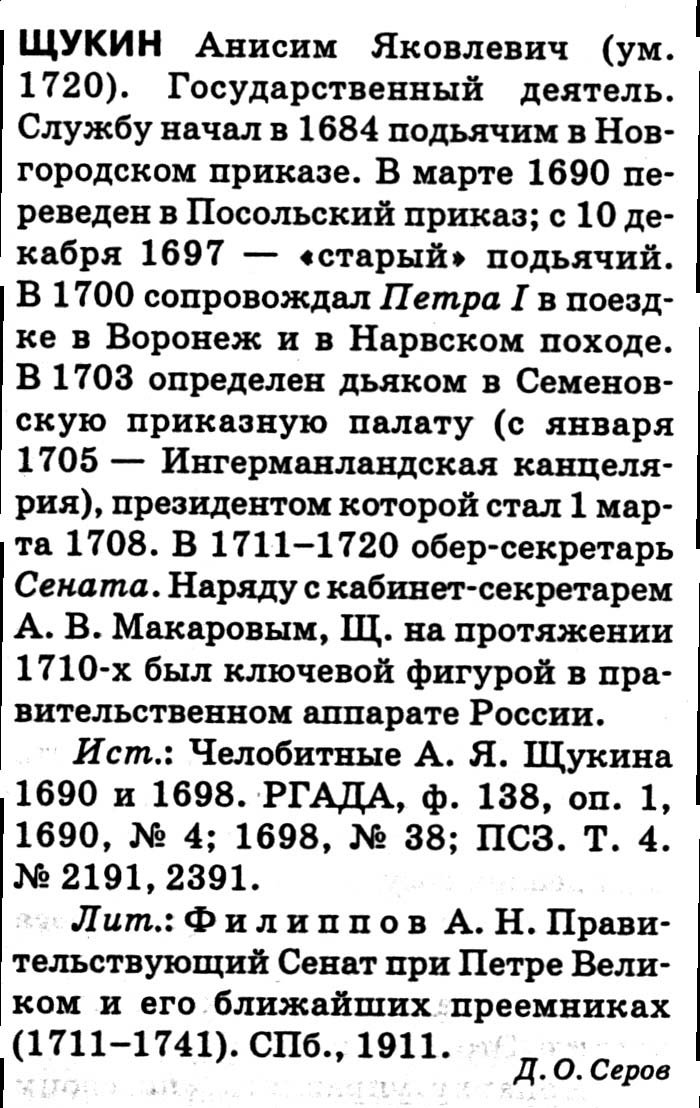
The editors of this source have set themselves the task of tracing the history of culture in one of Russia’s greatest cultural centers. The first two books cover the eighteenth century. More than 200 authors have contributed articles to these volumes on the scholarly institutions, libraries, and museums of St. Petersburg and its suburbs. The formal criteria for the articles included exact dates of birth and death for essays on individuals, dates given in old style for Russian figures. Articles were to include an essay, works, primary sources, and secondary literature on the subject. The inclusion of references to primary source material make this a valuable aid in identifying archival locations for materials. The entry shown at the left is taken from Volume I, Book II, p. 550 and is a very brief entry on an individual. Most of the entries are quite substantial. The entry does exemplify the type of biographical data that are supplied and the archival information available within the pages of this source. There are also entries in these volumes on all that was relevant to the history and development of the city: the stock market, typographers, cartography, classicism, etc.
The first volume includes some excellent color maps. The second volume has a section of color plates with excellent reproductions of early city plans that provide an interesting view of the city’s development through the century. There are many black and white illustrations throughout the volume. There is also s lengthy section of supplementary material with tables listing the city officials, a chronological hsitory of the Winter Palace from 1708-1730, a table on the icnography of the tsars, the hydrography of St. Petersburg, meteogology of St. Petersburg, to name but a few of the titles of the nineteen supplements. The first volume on the nineteenth century has only recently appeared and should be an invaluable resource for scholars interested in St.Peterburg’s history.
Volume II is devoted to the nineteenth century and is structured like Volume I. The entries have the same wealth of information and bibliographic detail as the previous volumes. Like the earlier volumes, a section of color reproductions of city maps and illustrations is included. Archival references are also included in many of the entries.
Ural’skaia istoricheskaia entsiklopediia.
Ekaterinburg: UrO RAN, 1998. U of I Library Call Number: International & Area Studies Russian Reference (Slavic) Q. 947.43003 Ur11
This volume like those on Petersburg and Moscow, provides a wealth of information for anyone interested in the Urals. It’s arrangement is somewhat different from the other volumes, as there is no overview of the region and no index. Nevertheless, for anyone with a specific question or name to investigate that relates to the region, this is a very useful source. All articles are signed and most have bibliographic information. Finding information in this source can be somewhat difficult as topics such as “Naselenie” do not have separate entries but are covered withing articles on specific areas, e.g. “Permskaia Oblast'” or “Ural’skaia Oblast.'” There are lengthy entries on art and archaeology. It is a source that requires some creativity on the part of the user due the fact that there is no index and little cross-referencing.
Historical Dictionaries and Chronologies:
There are many historical chronologies and a variety of single volume historical dictionaries. Many of the older sources can be identified in the guides listed above and will not be repeated here. The researcher will also find it useful to consult the Russian State and the Russian National Library Catalogs. In the latter a search in Russian for the the term “historical dictionary” brought up several references.
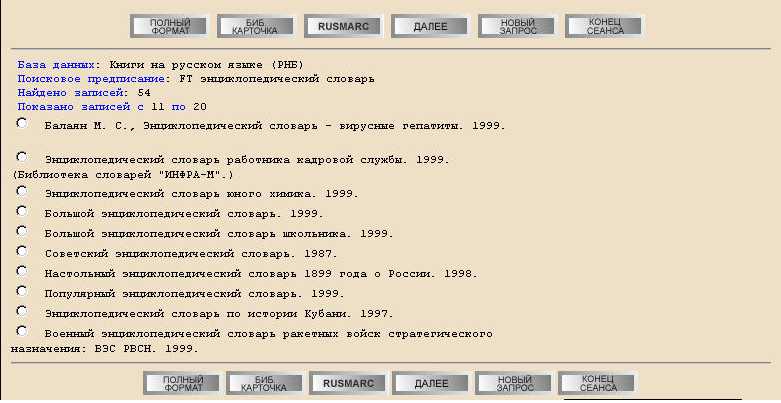
This is an efficient way to keep abreast of new sources that may be of interest for your research and often fills a gap in the printed resources.
Khronologiia rossiiskoi istorii. Entsiklopedicheskii spravochnik.
Moskva: “Mezhdunarodnye otnosheniia”, 1994. U of I Library Call Number : International & Area Studies Russian Reference (Slavic) 947.03 K528:R
A very detailed chronology of the events in Russian history, this volume includes a set of historical maps, numerous statistical charts and an index of names. The chronology covers the years from 944 to 1991. For the student beginning in Russian studies this is a very useful source. Events are organized into categories within time periods. So, for example, the benchmarks in foreign policy that marked the years of Brezhnev’s rule are grouped into one category. Each time period begins with page long essay summarizing the events and characteristics of that time. Each section concludes with a brief biographical note on the most influential person of the period.
Atlas istorii kul’tury Rossii. Konets XVII-nachalo XX vv.
Rogov, E. N. Moskva: “Krug,” 1993. U of I Library Call Number: International & Area Studies Russian Reference (Slavic) 947 R635a
This is an extremely unusual chronology. The compiler tries to show the events of Russian history in the context of world events using time lines and comparative charts. The volume is divided into sections by discipline. These sections begin with an overview of the development of that discipline in Russia. This discussion is followed by a standard chronology, which is summarized in a “map” as shown in the example below, taken from p.29.
This chart or map appears in the first section of the atlas which examines the evolution of the study of history in Russia. The time lines here compare a variety of events the compiler hoped would reveal the development of the discipline. The volume includes sections on philosophy, literature, fine arts, music, theater, biology, geography, astronomy, mathematics, physics, chemistry, and technology. Following each map is a list of important figures in the field with brief biographies for each. While the volume does not cover the obscure or less well known figures, it is an unusual approach to the compilation of historical chronology. The compiler has included a list of the sources consulted.
La vie culturelle de l’emigration Russe en France. Chronique (1920-1930).
Beyssac, Michele. Paris: Presses Universitaires de France, 1971. U of I Library Call Number: International & Area Studies Russian Reference (Slavic) 325.247 B46v

Drawing on the emigre press of Paris in the 1920s, Beyssac has compiled a sort of chronology of the intellectual and cultural life of the Russian emigre community in that city. The compiler consulted the major papers Vozrozhdenie and Poslednie Novosti in particular. From these he has drawn announcements of the activities of the cultural and intellectual societies concerning all their activities and presented this in a chronological arrangement. He has also provided access through a name and organization index. What emerges is a picture of the rich cultural life of the emigre community in Paris. It is a very valuable source in following the development of particular figures in the emigre community or in the study of the history of particular organizations.
Istoricheskaia nauka Rossiiskoi emigratsii 20-30-x gg. XX veka (Khronika).
Aleksandrov, S. A. Moskva: “Airo-XX”, 1998. U of I Library Call Number: International & Area Studies Russian Reference (Slavic) 016.947 Al27i
Like the French work by Beyssac this work follows the activities of the Russian emigre community. However, it does not limit its view to Paris but attempts to look at the emigre community in all of Europe. It does focus on a particular segment of Russian emigre society, those active in the study of history. The chronology lists the dates, authors, lecture titles or topics, place and the source of the information for thousands of events from 1921 to 1940. The compilers have drawn on the major emigre publications of the time: Posledne novosti; Rul’; Golos Rossii; Vozrozhdenie; Rossiia i Slavianstvo; Zapiski russkogo istoricheskogo obshchestva v Prage; Zapiski russkogo Nauchnogo Instituta v Belgrade; Sbornik russkogo istoricheskogo obshchestva v Prage.
Historical Dictionary of Russia.
Raymond, Boris and Duffy, Paul. London: Scarecrow Press, 1998. U of I Library Call Number : Main Stacks Reference 947.003 R214h
This volume is one in the series of European Historical Dictionaries. As with the other volumes there is a chronology of major events followed by an introduction that places Russian history in the context of European history in general. All entries in the volume are arranged alphabetically. Entries in the dictionary are brief and do not include any bibliography. However, there is an extensive bibliography at the end of the volume (approximately 40 pages long) which is organized by topic. There is a great deal of cross referencing within the entries. This volume could be extremely useful for the student beginning research in the field. This dictionary serves a different function than Pushkarev’s dictionary (see below) which focused on defining Russian language terms found in Russian historical sources. In this volume the compilers were attempting to gather all the major events and people for the beginning student and non-specialist.
Dictionary of Russian Historical Terms from the Eleventh Century to 1917.
Pushkarev, Sergei G. New Haven: Yale University Press, 1970.
U of I Library Call Number : International & Area Studies Russian Reference (Slavic) and Main Stacks 947.003 P97d
One of the most daunting problems for the student new to Russian history is the enormous number of specialized Russian historical terms. It is often difficult to find useful definitions for these terms in a standard Russian-English dictionary. Pushkarev’s dictionary solves this problem, supplying the student or scholar with a dictionary of those terms they are likely to encounter in historical studies. The dictionary includes civil, military and ecclesiastical ranks, political and judicial terms and economic and financial terms. Many of these terms have extensive descriptions with historical sketches elaborating their meaning. All terms are transliterated and the volume ends with a bibliography of all sources consulted. The above example gives an idea of the type of information in the briefer entries (p.184).
Rossiiskii istoriko-bytovoi slovar’.
Belovinskii, L. V. Moskva: “Rossiiskii Arkhiv,” 1999. U of I Library Call Number: International & Area Studies Russian Reference (Slavic) 947.003 B4188r
The Russian historico-civic dictionary includes some 4,000 words common in Russian society from the eighteenth to the beginning of the twentieth centuries. The dictionary contains many half-forgotten terms and many whose meaning have changed over the years. Unfortunately, the compiler has failed to provide any information on the source of his information. It is a source that would require some supporting information at the very least. Having said this, it does provide the experienced scholar with some leads on the meaning of obscure terminology. The example below is taken from the volume, p. 305.
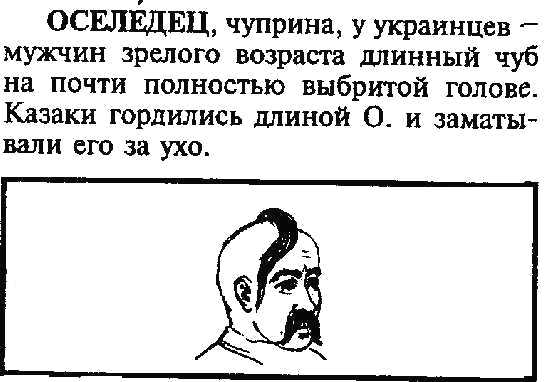
Subject Web Sites
Russian history home page by john slatter.
URL: http://www.dur.ac.uk/a.k.harrington/Russhist.HTML
This is a collection of e-texts in English. The range of material is very interesting, including everything from excerpts of a translation of the Domostroi to a translation of the Program of the Socialist Revolutionary Party.
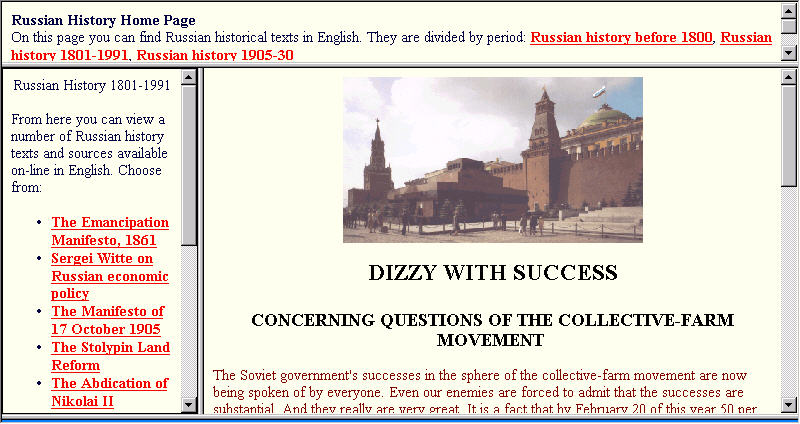
The beginning student of Russian history will find this a very useful site when seeking primary texts. Most have full attribution although there is no information on the source of the translation of the Domostroi . It is one of the sources that reminds the researcher how much electronic resources have changed in the last few years. Only a few years ago it would have been impossible to find retrospective materials of this kind available in full text on the internet.
Resursy WWW po istorii
URL: http://www.history.ru/hist.htm

Istoricheskie istochniki
URL: http://www.hist.msu.ru/ER/Etext/index.html
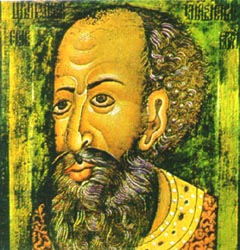
Rukopisnye Pamiatniki Drevnei Rusi
URL: http://www.lrc-lib.ru
This web site was created in collaboration with the Russian Language Institute of the Academy of Sciences. Its creators aimed at collecting the fullest possible online archive of old Russian manuscripts that are kept in museums and libraries both in Russia and abroad. The contents of the web site are separated into three parts: birch bark documents collection (located at the website http://gramoty.ru ), Russian chronicles, and Russian manuscripts. All the documents are available in full text versions either as PDF files or as GIF images.
Periodical Indexes
Indexes for historical periodicals are available in many formats. There are a number of online indexes such a Historical Abstracts that index major periodicals in the field. There are also digitization projects that have made a number of titles available. Project Muse and services like EBSCO are excellent resources for Western publications on Russia. For a general discussion, review the sources in the general Russian periodical section.
Ukazatel’ k russkim povremennym izdaniiam i sbornikam za 1703-1802 gg i k istoricheskomu rozyskaniiu o nikh .
Neustroev, A. N. St. Peterburg, 1898. xvi, 807 p. U of I Library Call Number: International & Area Studies Russian Reference (Slavic) 016.057 N39u 1963 HathiTrust full-text link: http://hdl.handle.net/2027/nyp.33433033580865
While this is not a historical bibliography or guide specifically, it is an important guide for research in 18 th century Russia because it indexes Russian periodical publications for this time period. Neustroev lists the periodicals indexed in the front of the volume, both chronologically and alphabetically. The second section is the index itself, which is arranged alphabetically by subject terms. Many articles are cross listed under multiple subjects; other subject terms have see also references. Citations are in abbreviated form: the abbreviations are given in the alphabetical listing of periodicals in the front of the book. Works both by and about persons are listed under the person’s name: for example, the entry for Catherine II lists both her works published in periodicals as well as works about her. This index is a part of the two volumes Neustroev issued that list the contents of the journals published in the 18th century. The entries for each title are extensive and will be very important for anyone researching this period.
Novaia literatura po sotsialnym i gumanitarnym naukam. Istoriia, arkheologiia, etnografiia. Bibliograficheskii ukazatel’.
Moskva: Institut nauchnoi informatsii po obshchestvennym naukam. Rossiiskaia Akademiia Nauk, 1947- . U of I Library Call Number: International & Area Studies Russian Reference Q.016.905 NO11(last 2 years) Main Stacks Q.016.905 NO11
This monthly publication is one of the best sources for current publications, articles and monographs on Russian history. If you are trying to keep up with current trends in Russian historiography, you will need to use this bibliography in its paper form or in one of its online versions. INION has made its records available through IntegrumWorld, which has the largest retrospective collection of INION databases, with records going back to the 1980s. Their is also a CD version being sold by INION with retrospective depth generally to the mid 1980s.
The bibliography, published monthly since 1947, includes a range of publications: monographs, collections of articles, dissertations, reviews, bibliographic works and deposited monographs. All are indexed in a detailed subject index in each issue. There is also an author index. Each issue is arranged by subject and includes a list of all indexed journals. Individual entries include full bibliographic information and often have short annotations on the publication. Bio-bibliographical entries on historians, archaeologists and ethnographers each have separate sections.
This is an excellent resource for anyone that is trying to keep up with currently published materials. The retrospective depth is excellent and it compliments Letopis’ zhurnal’nykh statei well as it serves as an index for titles not listed in that publication.
Biographical Resources
This section includes mostly biographical dictionaries or sets that are not covered in the Russian biographical archive . Those few that are both in the RBA and included here are of particular signifance and are noted as such. Resources for Russian biography are extremely rich and the Biographical Archive doesn’t even scratch the surface, so be sure to use this set as a starting point only.
Istoriki Rossii. Kto est’ kto v izuchenii otechestvennoi istorii: Biobibliograficheskii slovar’.
A.A. Chernobaev. Saratov: Izd. “Letopis,” 1997. 438 p. U of I Library Call Number: International & Area Studies Russian Reference 947.0072 C423i
With biographies of almost 800 contemporary Russian historians and archaeologists, this source presents its material very clearly. Each entry gives basic biographical data including educational and career history as well as a bibliography of works by the individual and, if they exist, about the individual. Each entry also contains the historian’s particular fields of interest. The entries are arranged alphabetically by surname. Follow the link for the entry on Boris Sergeevich Abalikhin .
Kto byl kto v Velikoi Otechestvennoi voine. Liudi. Sobytiia. Fakty. Kratkii spravochnik.
O.A. Rzheshevskii, ed. Moskva: Respublika, 1995. 415 p. U of I Library Call Number: International & Area Studies Russian Reference (Slavic) 940.53470922 K949
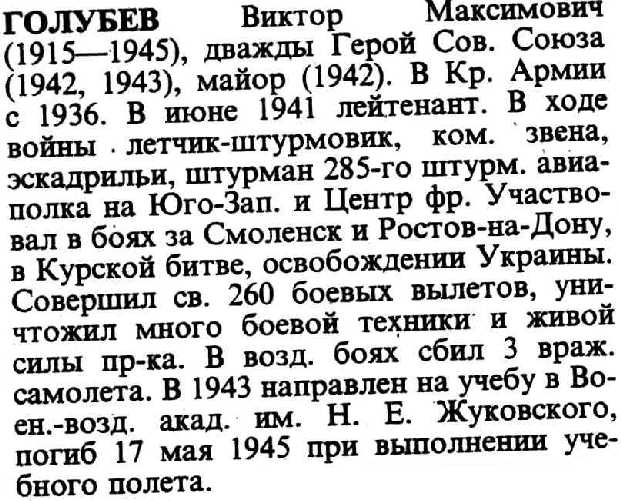
Kto rukovodil NKVD 1934-1941. Spravochnik.
N.V. Petrov, K.V. Skorkin. Moskva: Zven’ia, 1999. 502 p. U of I Library Call Number: International & Area Studies Russian Reference (Slavic) 363.2830947 P4494
A fascinating reference book to be sure. This dictionary contains biographies and photos of the upper echelon of employees of the notorious secret police organization, the NKVD, and its regional organs, which perpetrated actions of mass terror against the Soviet populace. Many of the employees included in this volume were themselves arrested and/or shot at some point. The beginning of the book provides a history of the NKVD, a chart of its various departments and a list of the leaders of those departments. The body of the book comprises the biographical dictionary with entries in alphabetical order by surname. Besides basic biographical information, the entries include career data with very specific dates for service in the various sections of the secret police organization, ranks, medals, dates of death, and if applicable, dates of arrest, execution and rehabilitation. See the entry on Solomon Arkad’evich Bak.
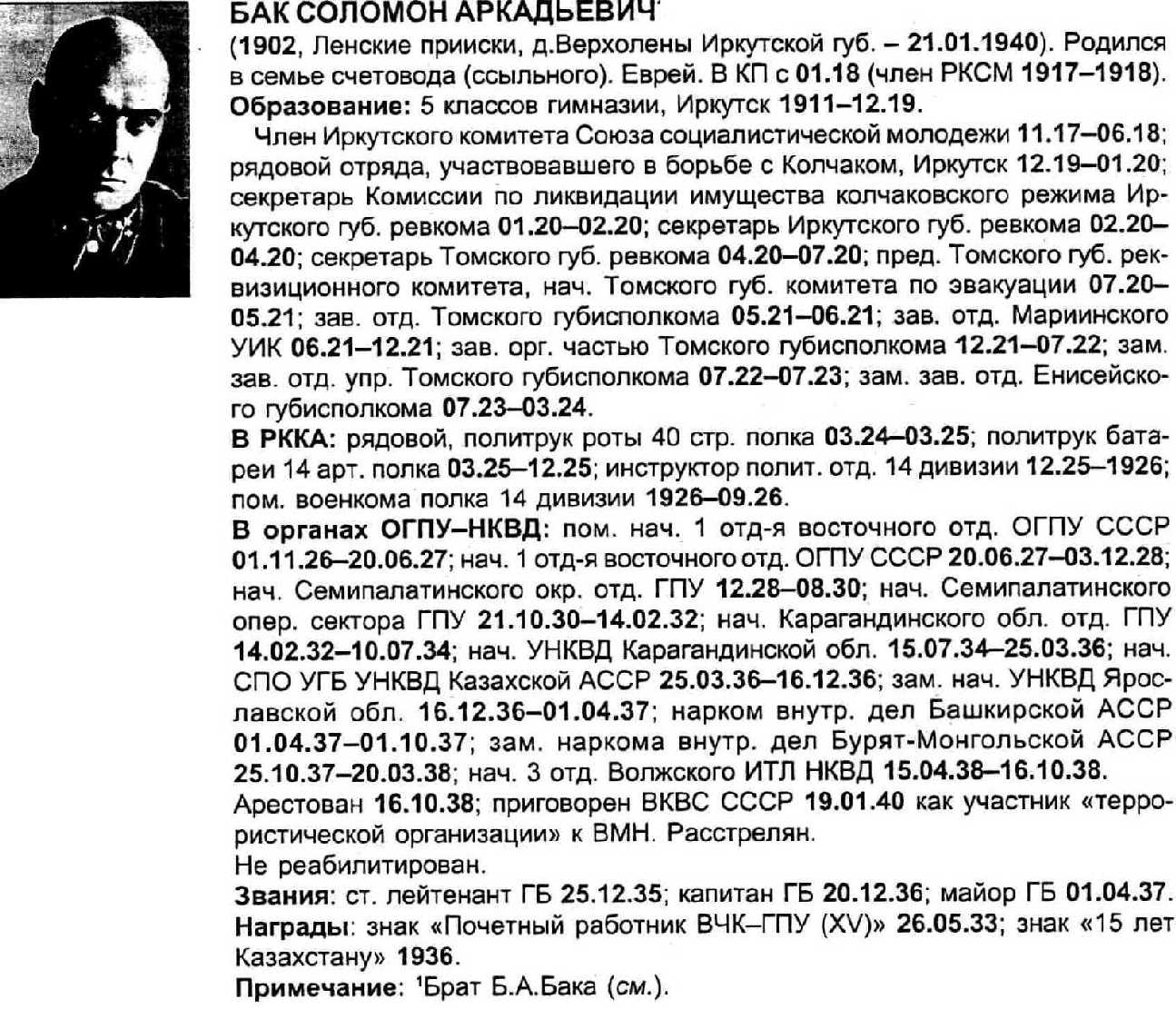
Russian America: A biographical dictionary.
Pierce, Richard A. Kingston, Ontario: Limestone Press, 1990. 555 p. U of I Library Call Number: International & Area Studies Russian Reference (Slavic) 979.8020922 P611r
This English-language dictionary contains short biographical entries for 675 individuals, Russians, Americans, Native Americans, and others, who were involved in the development of Alaska before 1867. The entries for very famous figures such as Catherine the Great give basic historical significance and then focus on that figure’s relevance for the development of Alaska. Traders, merchants, royalty, politicians, Aleuts, and sailors are only some of the kinds of people featured in this source. Some portraits are included, but unfortunately no bibliographical references. See the entry below for Osip Larionov.

Portrety istorikov. Vremia i sud’by.
Moskva-Ierusalim: Universitetskaia kniga, 2000. 2 vols. U of I Library Call Number: International & Area Studies Russian Reference (Slavic) 947.00922 P838 v.1-2
This two volume set has long articles on the life and work of Russian historians. Historians from the Russian Academy of Sciences and various Russian universities and institutes collaborated to produce the entries which typically are 10 pages in length with a portrait and bibliographical references for works by and about the historian. The first volume covers Russian historians who specialized in the study of Russian history and the second volume covers those who studied world history. There is an index of names to enhance access to the texts.
Istoriki i kraevedy Moskvy. Nekropol’. Biobibliograficheskii spravochnik.
Ivanova, L.V. Moskva: Mosgorarkhiv, 1996. 220 p. U of I Library Call Number: International & Area Studies Russian Reference (Slavic) 907.202 Is7
Scholars who specialized in the study of Moscow or “ moskvovedy ” are the subject of this biographical dictionary. The articles provide biographical sketches of 191 moskvovedy who lived from the eighteenth century to the end of the twentieth. Entries, usually one page in length, are arranged alphabetically by surname and include birth and death dates if known, educational information, career highlights and bibliographic references. Several indexes enhance the text: one for names and one for burial places of the 191 individuals. See the entry on the left for the church historian A.I. Pshenichnikov.
Istoriki-Slavisty SSSR. Biobibliograficheskii slovar’-spravochnik.
Moskva: Nauka, 1981. 203 p. U of I Library Call Number: International & Area Studies General Slavic Reference (Slavic) 016.94007202 Is7
This biographical dictionary contains brief articles about Soviet scholars who specialize in the post-1917 history of non-Russian Slavs. It also includes non-Soviet scholars who were active in the Soviet Union in the 1920’s through the 1940’s. Entries are arranged alphabetically by surname and contain brief educational and career data for each scholar as well as citations for the scholar’s major works. There are indexes of names and institutions. For scholars who specialize in pre-revolutionary Slavic history see Slavianovedenie v dorevoliutsionnoi Rossii. Biobibliograficheskii slovar’ . See the sample entry to the right on B. T. Gorianov.
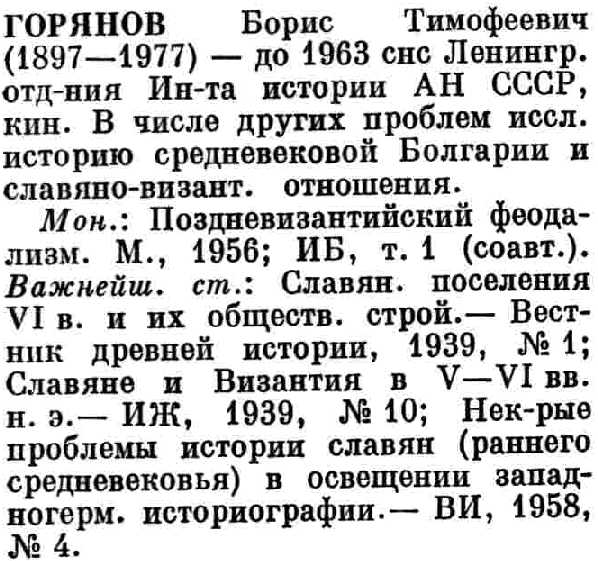
Istoricheskii slovar’ rossiiskikh masonov XXVIII-XX vekov.
Platonov, O.A. Moskva: ARINA, 1996. 126 p. U of I Library Call Number: International & Area Studies Russian Reference (Slavic) 016.36610947 P697i
Based on archival documents that were unavailable to researchers until 1991, this dictionary offers unique coverage of members of the secretive masonic organization. The book is divided into 3 parts: 18th century up to the reign of Nicholas II, the reign of Nicholas II up to World War II, and 1945-1996. Within each section the entries are arranged alphabetically by surname. Entries are brief with full name, career designation and information about the each individual’s masonic membership. Use the abbreviation keys to clarify the masonic terms and sources. See the entry to the left for engineer and Duma member, Nikolai Nekrasov.
Gosudarstvennye deiateli Rossiiskoi Imperii. Glavy vysshikh i tsentral’nykh uchrezhdenii 1802-1917. Biobibliograficheskii spravochnik.
Shilov, D.N. Sankt-Peterburg: Dmitrii Bulanin, 2001. 830 p. + 2nd ed. 2002. 936 p. U of I Library Call Number: International & Area Studies Russian Reference (Slavic) 947.0099 Sh62g + 947.0099 Sh62g2002
Based on materials located in 9 different Russian archives, this biographical dictionary has 281 entries for pre-revolutionary government officials. Entries are typically several pages in length and include biographical data, a section on a figure’s service career, a section for honors, a statement of the figure’s cultural and societal activity, a list of works by the person, and a bibliography of printed and archival materials. The bibliographical and archival references are extensive. The references are divided into several sections such as memoir sources, encyclopedic sources, genealogical materials, etc. Much of the material in this volume has never been published before. Appendices include a chronological listing of all the directors of the various ministries from 1802-1917, a genealogical index showing family relationships of the officials included, and a bibliography.
Biograficheskii spravochnik vysshikh chinov Dobrovol’cheskoi armii i Vooruzhennykh Sil Iuga Rossii. (Materialy k istorii Belogo dvizheniia).
Rutych, N. Moskva: Regnum-Rossiiskii arkhiv, 1997. 295 p. U of I Library Call Number: International & Area Studies Russian Reference (Slavic) 947.08410092 R939b
Compiled by a noted Russian emigre historian who used a variety of archival sources, this recent biographical dictionary aims to acquaint the user with Russian military officers who fought against the Bolsheviks during the Russian Civil War. Many of the men whose biographies are included in this source perished during the war or died in emigration. A typical entry includes full name, dates of birth and death, rank, as well as a brief biographical sketch which highlights the career and, in particular, the individual’s participation in the White movement. Often the place of death and burial is also provided. Some of the entries have bibliographical references. See the entry below for Vasilii Petrovich Petrov.
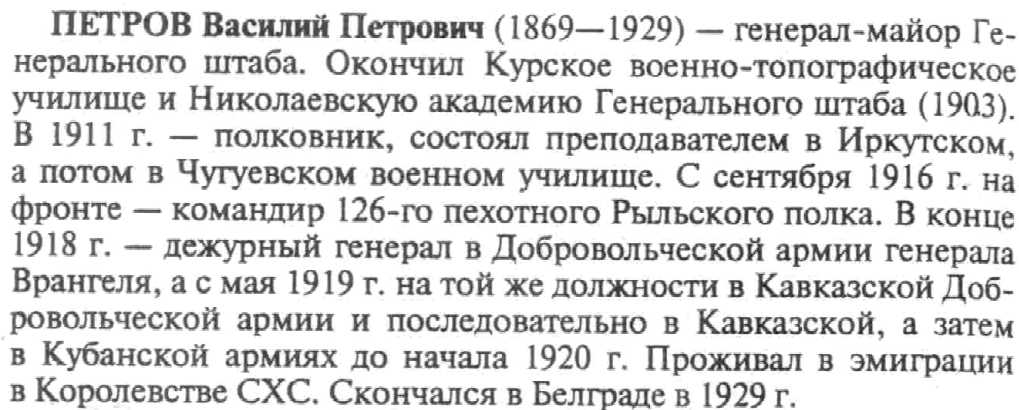
NdR, la Noblesse de Russie; éléments pour servir à la reconstitution des registres généalogiques de la noblesse, d’après les actes et documents disponibles complétés grâce au concours dévoué des nobles russes.
Ikonnikov, Nicolas F. Paris: Bibliothèque slave, 1957-1966. 2nd edition. 26 vols. U of I Library Call Number: Main Stacks 929.77 Ik7n 1957 v.1-26
Although this source is not that easy to use, it nevertheless offers a wealth of biographical and genealogical information about the Russian nobility from the earliest times to the twentieth century. The first twenty volumes present the families in alphabetical order with volume 21 as an index with additions and corrections. The next five volumes present additional families, but the entire alphabet is covered in each volume. On the title page of each volume are listed the families covered in that volume. At the beginning of some family sections Ikonnikov provides a brief overview of the family’s history. At the end of each family section is an index of first names for the family with numerical indications for the entries in which the names appear. The members of the families are listed chronologically with the earliest ancestors coming first. Each generation/filiation is designated by a Roman numeral with each person assigned an Arabic numeral. Different branches of the family are presented after the main branch and are indicated by capitol letters A, B, C, etc. Be prepared to read French for the descriptions of the family members and to recognize French transliteration of Russian names such as Pouchkine for Pushkin and Youri for Iurii. The entries usually give the dates of life for the person, any titles or military ranks, and sometimes more information if the person was a notable figure. Bibliographic sources for the information appears in abbreviated form in parentheses in each entry with the list of sources printed at the beginning of the first volume and in volume 21. Spouses who married into a particular family are listed below their spouse and indented a little. References to spouses’ families that also have warranted their own genealogies in Ikonnikov are indicated with the following notation: for a member of the Khroustchov family (NdR K ° C.13). NdR stands for Noblesse de Russie, K means in the volume with surnames beginning in K, family branch C, personal entry 13. See the entry below for the founding fathers of the Meshcherskii family. Note the column on the right that shows the father’s entry number.
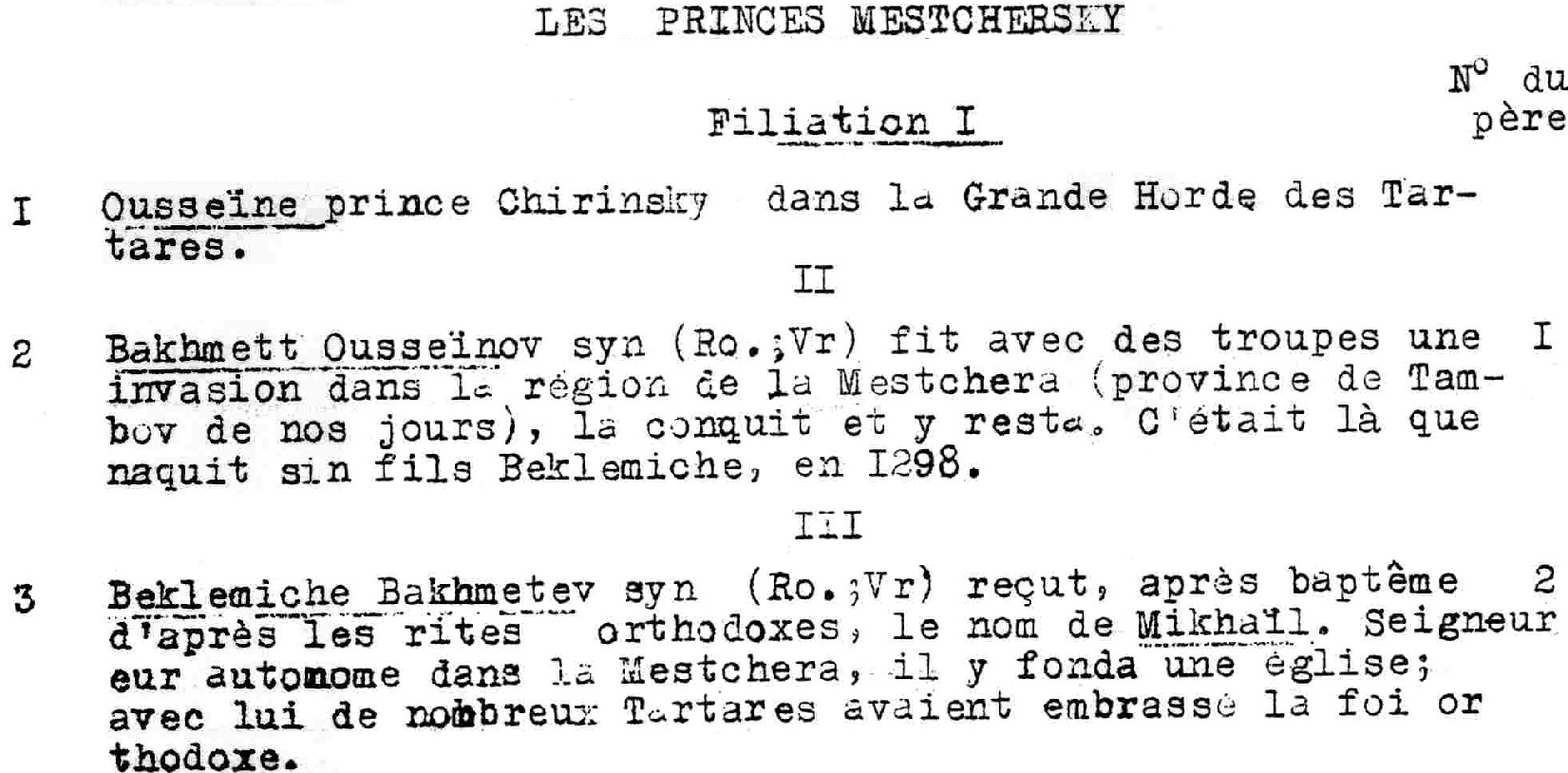
Why Study Russian History?
E. Thomas Ewing and Virginia Tech Students enrolled in HIST 3604: Russia to Peter the Great | Mar 13, 2017
Last fall, Virginia Tech students taking History 3604: Russia to Peter the Great engaged in a sustained discussion on “why study history?” In the class, we often took examples from current news or recent history and established connections to the historical period covered by the readings, lecture, and assignments (here’s a link to the syllabus ). Each week, a group of two or three students wrote a short statement explaining how the readings illustrated the value of studying history, which we then discussed in class. Finally, at the end of the semester, the entire class collaborated on this essay, which synthesizes those weekly contributions into a reflection on why studying the history of Russia to Peter the Great is intrinsically and instrumentally valuable.
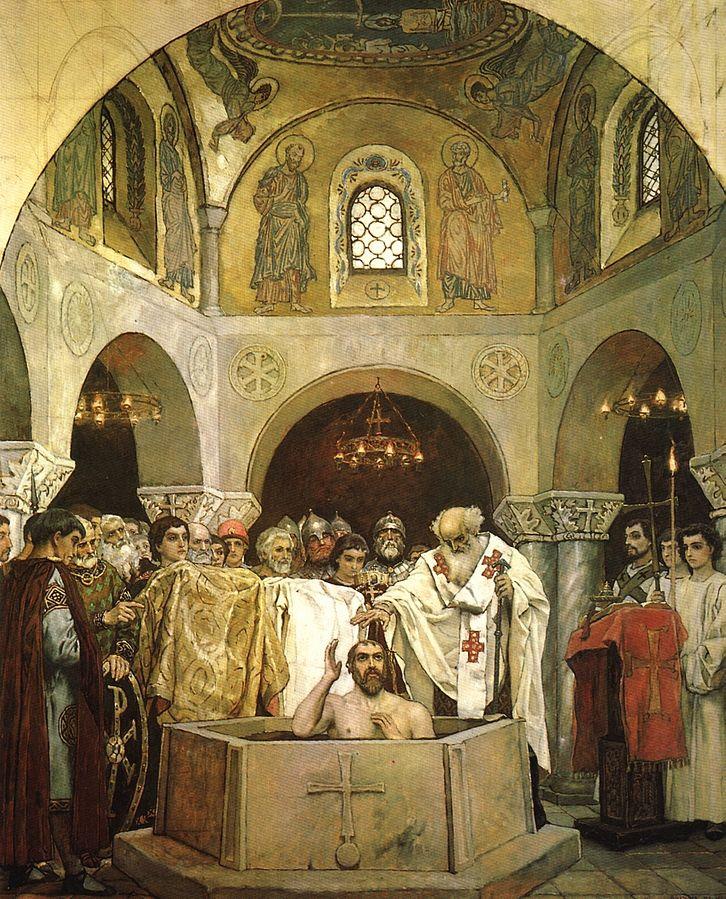
Illustration 1: Baptism of Russia, painted by Viktor Vasnetsov, 1890. Wikimedia Commons
Studying Russian history from its founding in the ninth century until the beginning of the era of Peter the Great in the late 17th century illustrates how this emerging nation-state navigated complex processes such as building a national political order, sustaining an evolving cultural identity, and legitimizing power through personality, rituals, and institutions. Studying these processes in a historical context—distant in terms of both time and location—provides insights into similar patterns in the more recent past, the present, and into the future, thus demonstrating why history matters.
This course on early Russian history, for example, helped students appreciate the complex relationships that exist between cultures that share the same geographical space. Russia was created in the ninth century when indigenous Slavic communities gradually integrated with the Scandinavian ruling elite. Since then, Russian history has been characterized by tensions between internal cohesion and external threats. This is most obvious during the 14th and the 15th centuries, when Mongol rule threatened the very existence of the Russian political system. At the same time, this era witnessed the consolidation of power by Moscow’s princes, political collaboration between church and state, and creation of a foundation for the steady expansion of boundaries under the Russian autocratic state of the 15th and 16th centuries.
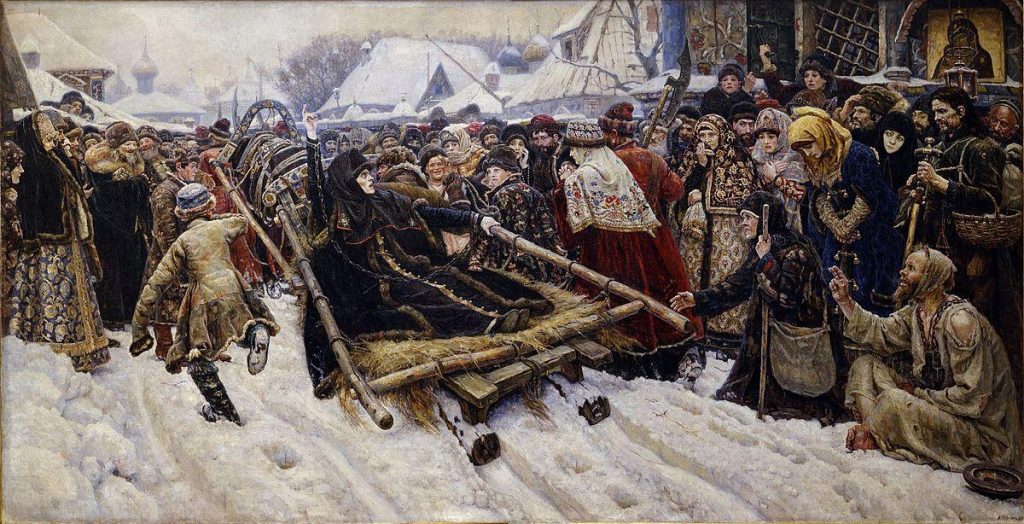
Illustration 2: Church Schism, painted by Vasilii Surokov, 1886. Wikimedia Commons
The course also allowed students to acquire insights into the formation of Russian national identity. Geographical location enabled, and indeed compelled, Russians to interact with neighboring states, peoples, and cultures on all sides in ways that shaped formal customs, influenced spiritual values, and guided cultural practices. Over the centuries, for example, the Orthodox Church contributed to a growing sense of cultural identity among the Russian population while also defining boundaries with adjoining cultures, peoples, and states. In the 17th century, the church’s role in fostering national unity during the Time of Troubles, when Russia was invaded by foreign armies, was followed by a schism that divided the nation, communities, and even families (illustration 2).
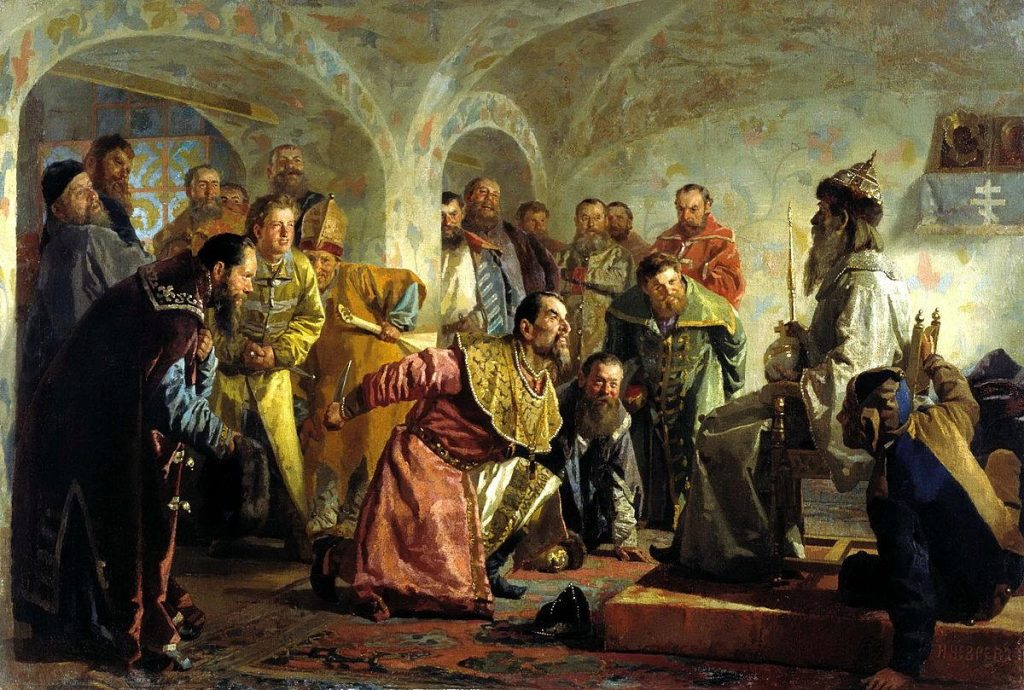
Illustration 3: Ivan IV and the oprichniki, by Nikolai Nevrev, painted in the 1870s. Wikimedia Commons
The evolving role of political leaders from the founding of the Russian state through the Mongol era and into the early modern period also provides evidence of the legitimization of power through personality, rituals, and institutions. The conversion of Russia to Christianity under Vladimir (ruled 980–1015) (illustration 1), the legal codes introduced by Iaroslav (ruled 1019–54), the military campaigns of Vladimir Monomak (ruled 1113–25), and the national reconciliation under Mikhail (ruled 1613–45) are examples of political leadership that undermine simplistic claims of immutable or inevitable autocracy in Russia. The reign of Ivan the Terrible—a central topic of this course—provides a clear example of how a nuanced approach to history matters. Ivan IV (ruled 1547–84) successfully expanded Russia’s borders, consolidated personal power, and strengthened the state (illustration 3). At the same time, his capricious actions, arbitrary methods, and personal ambitions caused numerous deaths, contributed to economic collapse, and put the survival of Russia in jeopardy. Exploring the actual exercise of power within changing contexts provided students with skills for examining the dynamics of political action and reaction in more recent contexts, including the most obvious current example, the presidency of Vladimir Putin. Throughout the semester, the class discussed how Putin’s use of political symbolism, his reliance on a network of loyalists, and his efforts to position Russia between Europe and Asia were connected to specific themes from earlier periods of Russian history.
Studying history is not just about collecting facts—instead, it is a process of acquiring, mastering, and analyzing layered and nuanced information on many subjects. The value of history thus lies in the ability to identify, process, and synthesize potentially overlooked details to explain a broader idea, culture, or event. Teaching history in reference to current examples is also a powerful reminder of how an unexpected historical turn can change perceptions. On September 6, when the topic was the role of warrior princes in the first centuries of Russian history, the class began with a discussion of several well-known images of Putin engaged in traditionally masculine activities such as hunting, fishing , and horseback riding . In the following class, September 8, this question of images of political strength was further illustrated with a widely circulated photograph of President Obama and President Putin engaged in what appeared to be a tense exchange at the G20 meeting in China. It was only three months later that we learned that this exchange was the moment when Obama confronted Putin with accusations about hacking the Democratic National Committee. For historians, even the most recent past is subject to revision, as new knowledge is disclosed in ways that change interpretations of historical events. This willingness to think critically and creatively about the past is the most valuable lesson that students can learn from repeatedly asking the question: why does history matter?
This post first appeared on AHA Today .
E Thomas Ewing is professor history and associate dean of graduate studies and research in the College of Liberal Arts and Human Sciences at Virginia Tech. This essay was co-authored by his students enrolled in HIST 3604: Russia to Peter the Great.
Tags: AHA Today Asia/Pacific Europe Global History
The American Historical Association welcomes comments in the discussion area below, at AHA Communities , and in letters to the editor . Please read our commenting and letters policy before submitting.
Please read our commenting and letters policy before submitting.

In This Section

Russian History & Culture
About this guide, library catalog search.
- Tsarist Russia
- Soviet Russia
- Post-Soviet Russia
- Religion in Russia
- Russian language and literature
- Russian ballet and music
Senior Lecturer, Archives and Special Collections

This guide provides a brief overview of Russian history and culture. In the timeline feature below, suggested research topics are bolded. On each subsequent page, relevant books from the CWU library catalog are also suggested, as are some external resources.
When you are ready to move on from this guide, even if you only stopped by briefly, please take the one-question poll at the bottom on the page on whether it was useful or interesting to you.
- Kievan Rus & Muscovy (c. 900-1689)
- Imperial Russia (1689-1917)
- Soviet Russia (1917-1991)
- Post-Soviet Russia (1991 - present)
800s: The Rus , traditionally a people of Scandinavian origin, establish a presence in parts of modern-day Russia, Belarus, and Ukraine.
Late 900s: Rise of Kievan Rus , a confederation of city-states headed by the grand prince of Kiev.
c. 980-1015: Reign of Prince (St.) Vladimir I. He introduces Christianity to the region.
1230s: The Mongols ( Tatars ) invade the region, subjugating the fragments of Kievan Rus. Kiev declines in importance, while Moscow, Tver, and other cities rise. The regional successor state to the Mongol empire is later known as the Golden Horde .
1313-41: The Golden Horde reaches the height of its power under Khan Öz Beg.
1395-96: The Turco-Mongol warlord Timur ( Tamerlane ) destroys the Golden Horde's principal cities of Sarai, Azov, and Kaffa. The Golden Horde's dominion over the Russian princes subsequently becomes nominal.
1462-1505: Reign of Ivan III the Great of Moscow. He annexes the rival city-states of Novgorod and Tver and other territories.
Late 1400s, early 1500s: The rise of centralized government is accompanied by the growth of serfdom (a declining institution in Western Europe) in law and practice, reducing previously free peasant populations to virtual slavery.
1547-84: Reign of Ivan IV the Terrible , the first Russian ruler to be crowned tsar . He expands Russia to the Caspian Sea and western Siberia. He also establishes the oprichnina , an aggregation of territory under his direct control. Ivan's tyrannical rule leaves Muscovite Russia in a state of chaos at the time of his death.
1606-13: The Time of Troubles , a period of civil strife and lawlessness during which various parties vie for power.
1613: Election and ascension of Michael, first tsar of the Romanov dynasty .
("Rurik Dynasty," "Russia," Encyclopedia Britannica )
1689-1725: Reign of Peter I the Great . He modernizes Russia in many regards, especially militarily, importing Western expertise and technology to do so. Serfdom is reinforced, however, and Peter marginalizes the Orthodox church, earning him the enmity of many Russians. St. Petersburg is built on the Gulf of Finland and becomes the new Russian capital. Expansion of Russian territory along the Baltic and Caspian Seas.
1700-21: Great Northern War between Sweden and an alliance of Russia, Poland-Saxony, and Denmark. Sweden is defeated; Russia becomes the dominant power in the Baltic region.
1756-62: Russia participates in the Seven Years' War on the side of France, Sweden, Austria, and Saxony; this alliance is opposed by Great Britain, Prussia, and Hanover.
1762-96: Reign of Catherine II the Great . Russia annexes the Crimea and expands eastward across the steppes , coming into contact with and subjugating a variety of peoples.
1772-95: Russia, Prussia, and Austria partition Poland among themselves, ending its independence.
1773-74: Large-scale peasant rebellion, led by Yemelyan Pugachov , suppressed.
1812: Napoleon's invasion of Russia fails disastrously.
1825: Decembrist revolt of liberal officers against Nicholas I suppressed.
1853-56: The Crimean War . Russia is defeated by Great Britain, France, and Turkey, but does not lose substantial territory.
1861: Alexander II abolishes serfdom, but the peasants are obliged to make onerous annual "redemption payments" to the government in return for lands granted them along with their freedom.
1862: Ivan Turgenev publishes Fathers and Sons .
1865-77: Leo Tolstoy's most famous works, War and Peace and Anna Karenina , published.
1866-80: Fyodor Dostoyevsky's most famous works, including Crime and Punishment and The Brothers Karamazov , published.
1867: Alexander II sells Alaska, then a Russian colony, to the United States.
1875-92: Pyotr Ilyich Tchaikovsky composes his most famous works, including Swan Lake and The Nutcracker .
1881: Alexander II is assassinated by the People's Will , a revolutionary organization. He is succeeded by the reactionary Alexander III . The assassination sparks a wave of anti-Jewish pogroms .
1894: Nicholas II becomes tsar.
1898: Foundation of the Social Democrat party, from which the Bolsheviks emerge as a radical faction.
1904-05: The Russo-Japanese War . The Russians suffer a disastrous defeat in the naval battle of Tsushima.
1905-06: Revolution forces Nicholas II to create a legislative assembly, the Duma .
1914-17: Russia fights in World War I as an ally of France and Great Britain.
March 1917: Food shortages in St. Petersburg and general dissatisfaction with Nicholas II's government lead to revolution. Army units assigned to suppress the uprising join it instead. The Petrograd Soviet of Workers' and Soldiers' Deputies and the Duma form the Provisional Government . Nicholas II abdicates, ending the monarchy.
("Russia," Encyclopedia Britannica )
November (October, Old Style) 1917: Led by V.I. Lenin and Leon Trotsky , the Bolsheviks overthrow the Provisional Government.
February 1918: The Red Army formed.
March 1918: The Bolsheviks conclude the Treaty of Brest-Litovsk with Germany, ending Russia's involvement in World War I.
1918-1920: Civil war between the communist Reds and monarchist/republican Whites . The Whites, though aided materially by Great Britain, the United States, and other Western powers, are defeated.
July 1918: Nicholas II and his immediate family are murdered by the Bolsheviks, as are many other Romanovs. The survivors of the dynasty flee the country.
1919: Poland regains its independence under the terms of the Treaty of Versailles .
1922: Foundation of the Union of Soviet Socialist Republics (USSR) .
1924: Lenin dies. Joseph Stalin eventually outmaneuvers Trotsky and other rivals to succeed him as leader of the party.
1932-33: Forced agricultural collectivization leads to millions of deaths by starvation, especially in Ukraine.
Late 1930s: Stalin purges the Communist Party, the Red Army, and other institutions of any perceived rivals or suspected foreign agents, at great cost to the country's leadership, culture, and individual freedoms. Of 2.3 million people who are party members in 1935, nearly half perish during this period. Millions of ordinary Soviet citizens are persecuted as well. The Gulag system of concentration camps for political prisoners becomes firmly established.
1939: Nazi-Soviet Nonaggression Pact signed. The Soviets invade eastern Poland, the Baltic countries, and Finland.
1940: The Soviets massacre the Polish officer corps in the Katyn forest. A Stalinist agent assassinates Trotsky in Mexico.
1941: The Germans betray the Nonaggression Pact, invading in June.
1943: Soviet victories at Stalingrad , Kursk , and elsewhere turn the tide of the war.
1945: Germany is defeated. The Soviet Union occupies and communizes East Germany, as well as most of Eastern Europe. In the course of the war, over 20 million Soviet citizens perish, more than half of them civilians.
1948-49: The Soviets blockade West Berlin in an attempt to starve its citizens into submission. The Western allies respond with the Berlin Airlift , supplying the city by air until the Soviets back down.
1949: The Soviets detonate an atomic bomb, becoming the second nuclear power.
1953: Stalin dies. After a power struggle, Nikita Khrushchev succeeds him.
1956: Khrushchev denounces Stalin's post-1934 leadership of the country, " de-Stalinizing " the Communist Party in Russia and abroad. Anti-Soviet revolution in Hungary suppressed.
1957: The Soviet Union launches the first artificial satellite, Sputnik 1 .
1958: Boris Pasternak wins the Nobel Prize for Literature for his works, especially Doctor Zhivago .
1961: Soviet cosmonaut Yury Gagarin becomes the first human being to orbit the Earth.
1962: Cuban Missile Crisis . Nuclear standoff with the United States resolved peacefully.
1964: Khrushchev removed from power. He is succeeded by Leonid Brezhnev .
1968: Prague Spring . Pro-democracy movement in Czechoslovakia crushed.
1970: Alexandr Solzhenitsyn wins the Nobel Prize for Literature.
1972: Brezhnev and US president Richard Nixon sign the Strategic Arms Limitation Treaty (SALT) in Moscow.
1979-89: Costly Soviet intervention in Afghanistan . The Soviets eventually withdraw.
1982: Brezhnev dies. He is succeeded by Yury Andropov , long-time head of the KGB .
1984: Andropov dies. He is succeeded by Konstantin Chernenko , who is already terminally ill.
1985: Chernenko dies. He is succeeded by Mikhail Gorbachev , who initiates the policies of glasnost (openness) and perestroika (restructuring of economic management).
1986: Reactor explosion at Chernobyl nuclear plant.
August 1991: Attempted coup of Gorbachev foiled by Boris Yeltsin .
December 1991: Gorbachev resigns, and the Soviet Union is dissolved. The former Soviet republics become independent countries. Yeltsin becomes the leader of the Russian Federation .
("Russia," "Union of Soviet Socialist Republics," Encyclopedia Britannica )
1993: Inflation rates reach 930 percent. Attempted coup of President Boris Yeltsin fails, leading him to create new powers for himself in the constitution.
1994: Russian troops invade Chechnya , a separatist state in the Caucasus region.
1996: Cease-fire in Chechnya.
2000: Vladimir Putin succeeds Yeltsin as president. Russian troops capture Grozny , capital of Chechnya.
2008: Dmitry Medvedev elected president. Putin appointed prime minister. Russia invades Georgia in support of two separatist states, South Ossetia and Abkhazia .
2012: Putin re-elected president. Russia joins the World Trade Organization (WTO) .
2014: Russia annexes the Crimean peninsula and lends support to pro-Russian separatists in eastern Ukraine.
("Russia," Encyclopedia Britannica ; "Russia," A Dictionary of Contemporary World History )
- Next: Resources >>
- Last Updated: Mar 7, 2024 1:22 PM
- URL: https://libguides.lib.cwu.edu/russia
Topic Modeling Russian History
- Open Access
- First Online: 16 December 2020
Cite this chapter
You have full access to this open access chapter

- Mila Oiva 4
7928 Accesses
1 Citations
1 Altmetric
Topic modeling is a highly useful method that can provide new ways to understand the past. In order to reach the full potential of the method, the researcher needs to understand the context, the specifics of the data, and how the algorithm works and know the research literature. This chapter demonstrates how topic modeling can be applied in the studies of Russian and East European history. It illustrates the choices a researcher will face and the needed steps for preparing a data set for topic modeling, and shows how the interpretation of topic modeling results works in practice. The chapter also addresses the question of the scattered nature of digitized collections of Russian history sources, and the associated challenges and opportunities in this context.
You have full access to this open access chapter, Download chapter PDF
Similar content being viewed by others
Economic history goes digital: topic modeling the journal of economic history.

Exploring the History of American Sociology Through Topic Modelling

Finding the structure of parliamentary motions in the Swedish Riksdag 1971–2015
- Topic modeling
- Computational linguistics
- Russian history
- East European history
1 Introduction
The power of history rests on its capability to interpret and contextualize past phenomena to explain continuities, differences, and specificities. To a large extent, this process depends on the work and abilities of the historian. With the introduction of computational analysis methods, historians can now use auxiliary means to enhance this process. Topic modeling is a highly useful computational analysis method used to understand and identify the content and patterns of text corpora. This method also allows for additional close reading. Based on complex calculations of word co-occurrences, the method summarizes the text by identifying the topics (i.e. the constellations of words that tend to come up in a discussion) (Mohr and Bogdanov 2013 , 547) that can be used to analyze, categorize, and compare text corpora. It can be used to studying the content of a large number of texts as well as a “microscope” that extracts patterns that are otherwise difficult to detect in a small number of texts.
One can view topic modeling as a machine that condenses the studied text into topics that consist of a collection of words connected in a statistically coherent way. For example, if researchers wanted to extract ten topics from past issues of Pravda newspaper over the course of a century, they would most likely get one topic consisting of the terms “the Party,” “meeting,” and “resolution”; another topic containing terms such as “team,” “gymnastics,” and “skiing”; and a third topic with terms such as “plan,” “development,” and “production.” If the researcher then extracted more detailed topics from the texts, they would come across terms related to topics such as “Stakhanovite,” de-Stalinization,” and “Perestroika.”
The “machine” of topic modeling is based on a statistical calculation that reveals patterns of co-occurring words in a text. Using probability distribution, topic modeling categorizes individual words in the studied text and analyzes which words are statistically used most often in connection with each other, and these words then form a topic (Brett 2012 ; Mohr and Bogdanov 2013 , 546; Nelson n.d. ). In this way, topic modeling allows for the consistent detection and examination of patterns in a large text without the need for sampling.
“Topic modeling” is the term commonly used in text mining to signify a large group of computational algorithms that aim to detect patterns in an unstructured collection of documents. Topic modeling algorithms often use unsupervised machine learning, which allows researchers to identify patterns in the text without prescribing in advance what should be looked for. However, this does not apply to all forms of topic modeling (Isoaho et al. 2019 ; Boumans and Trilling 2016 ; Goldstone and Underwood 2014 ). There are several statistical methods used to calculate the number of topics in a text, with the most frequently used method being the latent Dirichlet allocation (LDA). In addition, there are other types, such as structural topic modeling, dynamic topic modeling, and sub-corpus topic modeling, that produce more nuanced results (Hakkarainen and Iftikhar in press ; Isoaho et al. 2019 ; Roberts et al. n.d. ; Blei and Lafferty 2006 ; Tangherlini and Leonard 2013 ). This chapter highlights the possibilities of MALLET, a basic LDA topic modeling tool. MALLET is a Java-based, open source, and free text analysis program developed by Andrew McCallum ( 2002 ).
Topic modeling provides exciting ways in which to analyze the content of larger corpora that encapsulate the content and “see” the text computationally. Therefore, it is not surprising that it has become one of the most popular methods of text analysis in the humanities and social sciences. It has been successfully used to reveal the themes studied texts consist of, the temporal variations of said themes, and the differences between texts (see Gritsenko 2016 ; Goldstone and Underwood 2014 ; Tangherlini and Leonard 2013 ). Numerous scholars in the humanities and social sciences now consider topic modeling a ubiquitous “digital humanities method that solves all the problems” without problematizing or examining which research purposes it can be used for.
The aim of this chapter is to show how topic modeling can be applied to research in Russian and East European studies, with an emphasis on historical research and the choices a researcher will face when using topic modeling. First, the chapter charts the steps that need to be taken when preparing a data set for topic modeling and describes how different choices can affect the results of the analysis. Second, the chapter discusses how the results of topic modeling can be interpreted. Third, the chapter explores the uses of topic modeling in Russian history sources, as well as the associated challenges and opportunities in this context.
2 Preparing a Text for Topic Modeling
The results of topic modeling respond to the following questions: What kinds of topics are present in the text? How prevalent are they? Where do these topics appear? The algorithm produces two types of outputs—namely, word–topic and topic–document proportions of the text. It thus creates groups of words that form a topic and identifies how frequently each topic appears in the text. Unlike a human reader, however, the topic modeling program does not understand the text: It only calculates the statistical co-occurrence of words and produces results based on this calculation that offer a statistical perspective of the text. Topic modeling often provides predictable results that are in accordance with the impressions of human readers, but it can also produce nonsensical results or reveal unexpected aspects of the text. It is thus up to the human to decide, based on their knowledge of the data and method, which results should be relied on and which should be discarded.
When beginning topic modeling, and similar to most natural language processing (NLP) analyses, the researcher needs to arrange the data to correspond with the research question, name the documents systematically, preprocess the text, prepare an adequate stop-word list, and determine the specificity of the results by selecting the number of topics. This chapter explains the steps that need to be taken when using Mallet, but it is important to note that different topic modeling algorithms require different approaches regarding the arrangement or naming of data. The choices made at this stage affect the results of the analysis and comprise a crucial element of the process. This stage is also the most time-consuming.
2.1 Arranging the Data
Arranging the data to correspond with the research question is the first step in preparing the text for topic modeling. The arrangement of the data, whether in one large document or in several smaller documents, and according to certain categories, determines what the topic modeling analysis will reveal. Combining all the studied texts into one large document provides a general view of the data set, whereas separating the text according to preset categories allows for the detection of their differences and similarities. For example, if a researcher is simply interested in what kinds of topics exist in studied texts, the texts can be merged into a large text document. If, in contrast, the researcher wishes to study how the topics of a newspaper have evolved over the years, it is useful to arrange the texts so that all the issues of one year or one month are in one document, another year or month in the second document, and so on. This arrangement would then provide data on topic changes on an annual or monthly basis. In a project that studied the reception in Soviet media of French singer and actor Yves Montand when on a tour of the Soviet Union in December 1956, we arranged the data so that each individual article was downloaded as a separate document and saved under a name that indicated the publication date and newspaper it was published in (Johnson et al. 2019 ). This then allowed us to detect how the depiction of Montand varied between publications and over time.
2.2 Systematic Naming
The second step, naming the documents in a systematic, expressive, and concise manner, assists the later stages of interpretation of the output. For example, using a document name such as “1953_F_Pravda.txt” for an article written by a female journalist and “1953_M_Pravda.txt” for an article written by a male journalist condenses the essential information of the document in a comprehensive way and does not confuse the computer program. Document names that are too long or that have spaces between words often cause problems when running the program.
2.3 Preprocessing the Text
Once the data have been arranged and named accordingly, the third step is to preprocess the text. Preprocessing is not mandatory, but it does make the final results clearer due to the simplistic assumptions inherent to the topic modeling algorithm. This step simplifies and standardizes the text for the computational analysis so that certain elements of the text can be revealed. Preprocessing involves various stages, including lemmatization, stemming, the removal of punctuation, and the conversion of uppercase letters into lowercase letters. Lemmatization refers to the process that converts the words in the text into their basic form (e.g. “studying” becomes “to study”). Stemming changes words into their root forms (e.g. “studying” becomes “stud”) (Arnold and Tilton 2015 ). In the context of Russian-language texts, these processes are highly useful, as Russian is a highly inflected language, and the same words can appear in different forms in a text. Although a human reader recognizes different forms of the same word, the computer program sees them as different words. Because the program does not recognize that the words “studying” and “studied” are different forms of the verb “to study,” the results of the analysis do not attribute the correct weight to the words, thus meaning that the results are distorted. Lemmatization produces more nuanced results than stemming, as the text is simplified to a greater extent (Sharoff et al. 2012 ; Jabeen 2018 ). In topic modeling, which explores the statistical relations between words, identifying the correct dictionary-based basic form of the word using lemmatization is often useful. However, simplifying the text does improve the final results if the research looks to explore how different word cases or tenses appear in the text. In these cases, the scholar should not stem or lemmatize the text, as it will result in the decreased quality of the final results.
The Mallet program removes punctuation and converts all the letters into lowercase but does not lemmatize or stem the text. Thus, researchers who wish to lemmatize their Russian-language texts can use programs such as MyStem, TreeTagger, Language Analysis Service LAS, Python, or R programming language packages for natural language processing (see for example MyStem n.d .; TreeTagger n.d . or Language Analysis Service LAS n.d .).
2.4 Composing the Stop-Word List
The fourth stage of preparing for topic modeling comprises the composition of a stop-word list. In this stage, researchers often remove the most frequent nonmeaning-making words from the text, including “the,” “and,” “or,” and “but.” These are referred to as stop words. While they appear in the texts frequently, they are irrelevant when analyzing the content of texts using statistical means. The Mallet program does not contain a ready stop-word list in Russian, meaning that users need to download their own stop-word lists. Luckily, there are stop-word-lists available online that can be easily applied to Mallet. When downloading a stop-word list in Russian, it should be saved in an eight-bit Unicode Transformation Format (UTF-8) to ensure that the Cyrillic appears correctly.
Although ready-made stop-word lists are available, for serious analysis, it is important to customize the stop-word list for the purposes of the study. Ready-made stop-word lists can contain words that are important in the text, but the specifics of the study might also require the removal of words that appear too frequently in the text. For example, a digitized collection of newspaper articles can contain repeated names of the days of the week (indicating the day of publication of the issue) or the authors of the articles. The researcher might want to add the names of the week and the journalists’ names to the stop-word list to avoid these words being overemphasized and distorting the analysis of the articles. However, having these words in the stop-word list removes them completely from the texts, and this affects the topic modeling results.
2.5 Selecting the Number of Topics
The fifth stage in the topic modeling process comprises the selection of the number of topics, the k -value. The difficulty in determining the “correct” k -value is considered one the greatest weaknesses of the method. There is no one way to determine the correct number of topics, and although there are computational means to determine the optimal number (Isoaho et al. 2019 ; Oiva et al. 2019 ), the researcher ultimately chooses which k -value to use. The researcher determines the k -value depending on how detailed an outcome the study requires. The optimal number of topics depends on the size of the data, the nature of the research question, and the content of the text.
For example, in studies exploring large long-term datasets, scholars have worked with one hundred topics (see Underwood 2012 ), while in the Yves Montand project, we found ten topics to be meaningful due to the small volume of the data set (Johnson et al. 2019 ). The data analyzed in the Montand project was preselected and contained only texts that discussed Montand’s tour during a short period of time. This meant that the expected variation of the topics was small. If the content of the data is not a preselected sample but covers a wide variety of different texts, the number of expected topics will obviously be higher. Similarly, if the researcher’s aim is to understand the general variation of the topics in the text, a smaller k -value may be useful; if the aim of the research is to extract nuances from the text, the k- value should be higher.
When determining the number of topics, the usability of the results guides the selection of reasonable k-value, as a large number of topics does not summarize the text in a way that is understandable for humans. For example, many scholars find three hundred topics too large a number to be analyzed. Tangherlini and Leonard argue that the risk of using too many topics is lower than the risk of using too few ( 2013 , 732). Often, if the k -value is set to be larger than the “actual” number of topics in the text, the researcher can easily understand which topics belong to the same family of topics. For example, in a project that studied the contexts in which Finland was discussed in the Russian news and Russia discussed in the Finnish news, the vast coverage of sports news was divided into different types of sports news segments that were easy for researchers to identify (Gritsenko et al. 2018 ). As Tangherlini and Leonard state, perhaps the best—and most informal—advice is that given by Doyle and Elkan, according to whom a useful way in which to determine the number of topics is to look at whether the proposed topics are plausible (Tangherlini and Leonard 2013 , 731).
While there is no singular and clear-cut way to determine the correct k -value, running the topic modeling algorithm with different numbers of topics is not difficult. This allows the researcher to determine the best k -value through exploration. Thus, a good way to explore the optimal number of topics is to run topic modeling with different k -values and decide, based on the results, which one to focus on. When analyzing the results, it is useful to consider the results of other k -values and discuss the reasons for selecting the studied number of topics for the study.
For example, when analyzing the articles for our Montand project, we eventually extracted ten topics after testing different k -values. We ran the algorithm with five, ten, and twenty topics. The analysis with five topics produced overly general topics that did not appear to provide any additional insights. Twenty topics provided more detailed results, but these were so detailed that the topics did not accurately summarize the texts. Ten topics provided sufficiently detailed results that also successfully summarized the studied articles. It is important to note that the topics we received in the smaller number of topics seemed to contain the topics that we received with the larger number of topics. This finding confirmed that the results were not random—rather, they followed certain logic—and that we just needed to select the resolution we wanted to operate with.
Although the launching of a topic modeling project has been depicted as a straightforward process, in reality the process often develops by repeated testing and alterations, as shown in the previous paragraphs. This comprises a normal way of developing a research project, and to ensure that the process does not become confusing, it is advisable to keep track of the steps taken as well as the reasons behind them. Checking the steps made throughout the process at the end will help to explain and justify the choices made in the research.
After arranging and naming the data, preprocessing the text, customizing the stop words, and selecting the number of topics to be studied, the researcher can then run the data through the topic modeling algorithm. The Programming Historian journal offers lessons on how to conduct topic modeling with the Mallet program (Graham et al. 2012 ).
3 Interpreting the Results of Topic Modeling
After the topic modeling algorithm has been run, the program produces lists of words that together form a topic. The percentage coverage of each topic in the analyzed documents is also produced. Although the researcher has been working with the text for a while at this stage, the results of the topic modeling only launch the actual analytical process.
Since the results of topic modeling can easily be misleading, it is important to validate the choices made and assess the output. At this stage, the researcher should evaluate how the preprocessing choices and modeling parameters affect the results, how well the topics model the phenomenon under investigation, and how interpretable and plausible the outcomes are (Isoaho et al. 2019 ). The overall assessment of the quality and robustness of the topic model results is crucial, as it forms the basis for the whole analysis. Several scholars have suggested metrics and solutions for computational quality assessment, both concerning the overall and topic-level quality (see Chap. 23 ; Chuang et al. 2015 ; Mimno et al. 2011 ).
After assessing the results, the analysis of the results can begin by naming the topics, as the algorithm only produces groups of words and does not evidence what kind of meaning the words that appear together make. However, it is not always necessary to name the topics. For example, if the researcher is interested in studying the appearance of certain keywords or in creating a relevant sample out of a vast corpus for close reading, it is reasonable to keep the “names” as Topic 1, Topic 2, et cetera. When naming the topics, at first glance, the lists of words may seem nonsensical. However, after some close reading, the common themes become clear. Word lists can be large and probabilistic, and the same word can belong to several topics to a varying extent. Luckily, the sequence of words is meaningful, as it shows the proportion of the words in the topic. The words that are more central to the topic come first in the list, thus helping the researcher to identify what is crucial to the topic. Researchers sometimes name the topics according to the first word of the word list, especially when they are operating with large numbers of topics. When operating with a smaller number of topics, it is useful to ascribe them more precise titles.
To concretize the naming of topics, below are two example topics from the Montand project. Using TreeTagger, the words have been lemmatized into their basic form so that different declinations of one word appear as the same word.
Topic 1 : montan iv moskva sin’ore simona sssr franciâ pariž pevec vestibûl’ dekabr’ svâzi večer press gazeta zal dežurstvo šurupova
Topic 2: montan iv pet’ lûdej iskusstvo slov pariž pesnâ lûbov’ pevec lûbit’ čajkovskogo serdce vystuplenie koncert
Topic 1 contains Montand’s name and his spouse, Simone Signoret, and words including “the USSR,” “France,” “singer,” “lobby,” “December,” “evening,” “press,” “newspaper,” “hall,” “shift,” and the surname “Šurupova.” This combination of words comprises a topic that discusses Yves Montand’s arrival in the Union of Soviet Socialist Republics (USSR) from France in December, Soviet newspapers writing about him, and Soviet people eagerly waiting to buy tickets to his concerts. The words “lobby,” “hall,” “shift,” and “Šurupova” refer to a specific article that discussed the queues of Soviet people waiting to buy tickets to Montand’s concerts. Topic 1 could be titled the “Reception of Montand.”
Topic 2 contains, in addition to Montand’s name, words including “to sing,” “people,” “art,” “word,” “Paris,” “singer,” “love,” “heart,” “performance,” “Tchaikovsky” (a famous concert hall in Moscow), and “a concert.” This topic describes the songs Montand sang in his concerts, their lyrics, and the positive emotions the articles reported them evoking in the Soviet audiences. This topic could be titled “Montand’s emotional songs.” As these examples demonstrate, the naming of the topics depends, in addition to the words emerging in the group of words that represent the topic, on the researcher’s interpretation and knowledge of the context.
In addition to the word lists, the output shows the percentage coverage of the topics in the studied texts. In terms of the interpretation of topic modeling output, this part is important. A good method of grasping the variation of the topics is to visualize them to allow for an understanding of the proportions of the topics that the program suggests.
The ability of topic modeling to provide new insights into the text becomes especially visible when analyzing the scope and content of the topics. In the Montand project, this was exemplified in an interesting way: We had already read the articles before conducting the topic modeling, meaning that we had a suitable understanding of the topics that we expected to emerge. However, despite our established knowledge, based on a close reading of the articles, the results of the topic modeling provided a new kind of angle. The results highlighted that the topic we had labeled “French-Soviet art connection” consistently prevailed in the articles (see Fig. 24.1 ). While this result made sense, it is likely that with simple human reading we would not have identified the topic as being so prevalent. It was clear that all the articles discussed the French–Soviet artistic exchange, exemplified by Yves Montand’s tour of the Soviet Union. However, the more abstract level of understanding, whereby the transnational interaction addressed the cultural, diplomatic, and political spheres more generally, only became evident when the program had displayed the results.

The ten topics covered in newspaper articles that discussed Yves Montand’s 1956 tour of the Soviet Union
Topic modeling is considered a particularly useful method for analyzing large data sets. The shortcut it provides in understanding large amounts of texts is so efficient that it is impossible for a human reader to analyze it within a reasonable amount of time. However, the Montand project demonstrates that it is also possible to use topic modeling as a type of “microscope” that provides a statistical overview of the studied text. When topic modeling a smaller data set, however, one needs to remember that the statistical reliability of the results decreases with a smaller amount of data. Nevertheless, the algorithmic reading of texts provided by this quantitative approach complements qualitative research by adding another analysis layer to human reading.
In another example, it is demonstrated how topic modeling can allow for the detection of patterns that are not self-evident to a human reader. This example comprises a project in which I analyzed the annual reports of the Polish Chamber of Foreign Trade between 1950 and 1980. Again, in this project, I had read through the documents before beginning the topic modeling analysis. Based on my reading, I assumed that one topic would dominate all the studied texts throughout the years. However, the result of the topic modeling showed that said topic was dominant in just one document (it was also present in the other documents to a lesser extent). It appears that when reading through the documents, I had read the text in which the topic was dominant at an early stage in my close reading, and when I continued to read, I paid special attention to it. In this way, the topic became important in my mind. This exemplifies how a human reader reads in different ways: While they pay attention to one element, they may omit other issues that seem irrelevant but are not in actuality. A human reads texts by immediately interpreting the meaning and paying attention to issues of interest. Thus, although one cannot say that computer reading leads to truer results (because the results of computer-assisted analyses can sometimes be nonsensical), this example shows how topic modeling provides other useful and statistically based interpretations of the text.
Topic modeling provides new insights into the studied text because its results are based on the systematic categorization of text without understanding its meaning. In contrast, a human reader interprets the text immediately and pays attention to the significant similarities or differences regarding their understanding of the topic. However, the results of a computational analysis are also dependent on human interpretations in terms of preprocessing, arranging, customizing the stop words, and selecting the number of topics. As well as this, the algorithms behind the program are all based on human construction and selection, and this affects the outcomes of the analysis. The strength of computer reading lies in its inability to understand and its extraordinary capacity to calculate the text in a systematic way. The combination of the algorithms’ analysis and human’s interpretative skills leads to new findings. Thus, the use of the interpretative power of a human reader and the systematic reading of a computer renders topic modeling a powerful tool.
Alongside small data sets, topic modeling is highly useful for determining general patterns in larger text corpora. The results of topic modeling of large text corpora can help identify interesting sub-corpora, guide further analysis, and even give rise to new research questions (Nelson n.d. ). For example, conducting a topic model of all the issues of Życie Gospodarcze , a Polish economics newspaper, between 1950 and 1980, led to the creation of new research questions, as it revealed radical temporal alterations of the most frequent topics (see Fig. 24.2 ).

The top eight topics in the Polish Życie Gospodarcze newspaper, 1950–1980
Upon closer inspection, the results showed that the topics of production planning and the need to increase production prevailed in the newspaper during the entire period. But from 1953 to 1963, the tone of the discussion was different from the tone used in 1964 onward. The change in tone was so prevailing that the topic modeling program identified the production planning discussion before and after 1964 as separate topics.
Sometimes the program classifies a topic—that appears to a human reader as one topic—as two separate topics. This occurs if the researcher sets the number of topics relatively high. These results are often important indicators of radical shifts in the way in which issues are discussed. Conducting topic modeling with more topics can thus lead to the identification of more sensitive topic alterations. This topic modeling result is significant and calls for further exploration. The result also evidences the power of topic modeling in leading to new findings, as these results are extremely difficult to arrive at without the help of statistical computing. A human reader, reading through thirty years of newspaper articles, would most likely have sensed the change of tone but would have been unable to show it in a systematic way.
According to Guldi ( 2018 ), 90 per cent of topic modeling results reveals information that we already know. In a sense, this makes researchers confident that the method works and that the countless hours of work done by the preceding generations of scholars have not been done in vain. The remaining 10 per cent reveals insights that have not been identified by preceding research. In order to identify which results belong to the 90 per cent category and which to the 10 per cent category, one needs to understand the context and preceding research. The shift of topics in Życie Gospodarcze is unsurprising for a scholar researching Polish economic history, but the comprehensive nature of the change in tone is something that nobody has been able to demonstrate in this way before.
When analyzing the results, one should remember that topic modeling is a probabilistic method, therefore meaning that it provides probabilities rather than fixed end-results. The program calculates the probability of the topics several times when processing the text, and the results it provides comprise the average of these calculations. This is visible in practice, as the results are not always absolutely fixed, and topic modeling the same data set several times provides results that are not exactly the same. Thus, the results of topic modeling can give an approximate sense of the topics but not the exact truth. It is useful to view topic models as lenses that allow researchers to view a textual corpus in a different light and scale, where well-informed hermeneutic work is also needed in order to interpret the meaning of the results (Mohr and Bogdanov 2013 , 560). For a historian, this variation is usually not problematic because we are accustomed to using interpretative data. When reading an eye-witness description of an event, for example, we don’t expect the document to reveal on a word-by-word basis what was said. Rather, we expect an interpretation of the tone of the discussions in the event. Similarly, topic modeling provides the approximate form of the studied text.
In addition to paying attention to the most prevailing topics, it is also worth considering the topics that do not appear in the results to get an overall understanding of the phenomenon. If a topic is prevailing, it means that it has been discussed extensively, but if a topic does not appear in the results, it does not mean that the topic is not important. Often issues that are taken for granted are not discussed, but the issues that arouse controversies are discussed. When interpreting the results of topic modeling, one should reflect on the limitations embedded within the chosen data set. For example, in the annual reports of the Polish Chamber of Foreign Trade, the issue of press advertising was discussed extensively in the mid-1950s when the chamber promoted the increased use of advertising in the Polish foreign trade. The use of print advertisements increased, but as it then became a normal aspect of foreign trade activities, it did not need to be discussed anymore. In addition, as the reports were written for the Polish Ministry for Foreign Trade, among others, the topics tackled in the reports were issues that the chamber wanted the ministry to be aware of, while the topics it did not want the ministry to be aware of were most likely not discussed.
Thus, one cannot emphasize enough the importance of understanding the context in topic modeling outcomes. To avoid being blindly guided by the topic modeling outcomes, one needs to understand the nature of the source, how the topic modeling processes influence the results, and the relationship between the emerging topics and the issues studied. As Mohr and Bogdanov incisively state, one might think that running any text through a topic modeling program like MALLET would produce brilliant research. However, it is still the quality of knowledge about the case and the clarity of thinking about the phenomena that determine the utility and richness of the analysis ( 2013 , 559). When using topic modeling in Russian and East European studies, one needs to understand the context of the research.
4 Topic Modeling: Russian and East European Studies
Although the method of topic modeling itself is universal, its application to studies of Russian and East European history comes with certain requirements and challenges. The languages of the region and their “special” characters (from the perspective of English) are obvious specificities that need to be considered. The program used in the examples above recognizes numerous scripts, including Cyrillic and the Polish alphabet, once the text is in UTF-8.
The greatest vulnerability that prevents the use of topic modeling in studies of Russian history is the dispersed nature of digitized sources and the lack of systematic computer-readable text collections that contain adequate metadata. Russian statearchives, museums, libraries, scholarly projects, private companies, and initiatives of nongovernmental organizations, together with private individuals, are digitizing historical sources in increasing amounts. However, the problem lies in the fact that text collections seldom form systematic series that cover long periods that would be needed for systematic computational analysis. Furthermore, too often, “digitization” means uploading a scanned image of a text to the internet, with no computer-readable text or possibility to download the text to one’s own computer for further research. Fortunately, Russian digital history scholars have taken the initiative to collect the available sources into link collections that facilitate finding the available sources (see Perm University Digital Humanities Center’s project n.d. ; Perm Province Newspapers 1914–1922 ; Historical Materials and Oral History n.d. ) (for more, see Chap. 20 ; Kizhner et al. 2019).
Currently, the digitized text collections that can be used for the research of Russian history form a kaleidoscopic landscape. For example, the Russian National Library has not produced systematic digital collections with computer-readable text or metadata, comparable to the digital newspaper collections in many other countries. As a general rule, the memory organizations’ digitization efforts produce openly accessible samples of scanned images on nationally interesting topics (see, for example Artistic Legacies of Anna Akhmatova ). Digitization initiatives are important openings for the popularization of history, but they do not serve the purposes of the big data approach to digital text analysis due to their focus on random samples and general lack of access to computer-readable texts. Furthermore, private companies have systematically digitized Soviet-era newspapers, and their collections form long-time series. However, access to their sources lies behind a paywall, and it is currently impossible to have complete data sets downloaded onto your own computer, which makes the use of big data approaches impossible. Lastly, private initiators and nongovernmental organizations also produce digital collections (e.g. Prozhito n.d. ). These collections comprise an important addition to the digitization efforts made by other parties, but they are often only small data sets and are not easily downloadable.
The lack of voluminous collections of digitized historical texts with adequate metadata means that the Big Data approach to Russian historical studies has to be reconsidered. If one wants to apply this approach to studies of Russian history, it is necessary to shift the focus from volume to the other two Vs of Big Data—namely, variety and velocity (Schöch 2013 ). Instead of seeking a uniform analysis of one vast collection, it is necessary to develop intelligent ways of exploring vast collections of heterogeneous data and linking the results of smaller data sets together to form a meaningful whole. In this way, digital text analyses of Russian historical studies could contribute to the overall development of Big Data studies.
5 Conclusion
As this chapter has demonstrated, using topic modeling in studies of Russian and East European history is useful and can provide new ways to understand the past. For this, understanding the context, the specifics of the data, how the algorithm works, and the stage that the research literature is currently at is extremely important. Without these basic components, the researcher is unable to explain in an adequate manner the results of topic modeling and its wider meaning. The low number of usable digitized collections restrains opportunities to topic model large text corpora in studies of Russian history. Luckily, as this chapter has demonstrated, topic modeling can also be useful in analyzing smaller data sets. However, if we are willing to understand current complex problems that are studied with the help of big data, we should make an effort to understand the historical roots of these developments. For that, we should develop ways to combine the kaleidoscopic multitude of digitized historical sources into long time series of data that would correlate with the big data produced today.
Arnold, Taylor, and Lauren Tilton. 2015. Humanities Data in R: Exploring Networks, Geospatial Data, Images, and Text . New York: Springer.
Book Google Scholar
Blei, David M., and John D. Lafferty. 2006. Dynamic Topic Models. Proceedings of the 23rd International Conference on Machine Learning. Pittsburg, PA. https://mimno.infosci.cornell.edu/info6150/readings/dynamic_topic_models.pdf .
Boumans, Jelle W., and Damian Trilling. 2016. Taking Stock of the Toolkit. Digital Journalism 4 (1): 8–23. https://doi.org/10.1080/21670811.2015.1096598 .
Article Google Scholar
Brett, Megan R. 2012. Topic Modeling: A Basic Introduction. Journal of Digital Humanities 2, 1. http://journalofdigitalhumanities.org/2-1/topic-modeling-a-basic-introduction-by-megan-r-brett/ .
Chuang, Jason, Margaret E. Roberts, Brandon M. Steward, Rebecca Weiss, Dustin Tingley, Justin Grimmer, and Jeffrey Heer. 2015. TopicCheck: Interactive Alignment for Assessing Topic Model Stability. In Human Language Technologies , 175–184. Colorado, USA: Denver.
Google Scholar
Goldstone, Andrew, and Ted Underwood. 2014. The Quiet Transformations of Literary Studies: What Thirteen Thousand Scholars Could Tell Us. New Literary History 45 (3): 359–384. https://doi.org/10.1353/nlh.2014.0025 .
Golubev, Alexey. in press. Digitizing Archives: Epistemic Sovereignty and its Challenges in the Digital Age. In Handbook of Digital Russia Studies, Daria Gritsenko and Marielle Wijermars, eds.
Graham, Shawn, Scott Weingart, and Ian Milligan. 2012. Getting Started with Topic Modeling and MALLET. https://programminghistorian.org/en/lessons/topic-modeling-and-mallet . Accessed 25 Nov 2019.
Gritsenko, Daria. 2016. Vodka on Ice? Unveiling Russian Media Perceptions of the Arctic. Energy Research & Social Science 16: 2–12.
Gritsenko, Daria, Andrey Indukaev, Viktorija Tkachenko, Ilona Repponen, Alexey Igonen, Mila Oiva, Miika Lampi, and Arturs Polis. 2018. Russia–Finland. Reflection on Neighbours Next Door. Digital Humanities Hackathon, May 25–June 1, 2018. Helsinki.
Guldi, Jo. 2018. Topic Modeling. Lecture in Digital History Research Methods, University of Oulu, Jyväskylä, Finland, January 29–February 9, 2018. https://digihistfinlandroadmapblog.wordpress.com/topic-modeling/ .
Hakkarainen, Heidi, and Zuhair Iftikhar. in press. The Many Themes of Humanism: Topic Modelling Humanism Discourse in Early Nineteenth-Century German-Language Press. In Digital Readings of History: History Research in the Digital Era , ed. Mats Fridlund, Mila Oiva, and Petri Paju. Helsinki: Helsinki University Press.
Historical Materials. n.d. Accessed November 25, 2019. http://istmat.info/ .
Isoaho, Karoliina, Daria Gritsenko, and Eetu Mäkelä. 2019. Topic Modeling and Text Analysis for Qualitative Policy Research. Policy Studies Journal 25 (June): 1–25. https://doi.org/10.1111/psj.12343 .
Jabeen, Hafsa. 2018, October 23. Stemming and Lemmatization in Python. Data Camp tutorial. https://www.datacamp.com/community/tutorials/stemming-lemmatization-python .
Johnson, Bruce, Mila Oiva, and Hannu Salmi. 2019. Yves Montand in the USSR. Mixed Messages of Post-Stalinist/Western Cultural Encounters. In Entangled East and West: Cultural Diplomacy and Artistic Interaction during the Cold War , ed. Simo Mikkonen, Jari Parkkinen, and Giles Scott-Smith, 241–261. Berlin: De Gruyter Oldenbourg.
Language Analysis Service LAS. n.d.. https://github.com/jiemakel/las/ . Accessed 25 Nov 2019.
McCallum, Andrew Kachites. 2002. MALLET: A Machine Learning for Language Toolkit. http://mallet.cs.umass.edu .
Mimno, David, Hanna M. Wallach, Edmund Talley, Miriam Leenders, and Andrew McCallum. 2011. Optimizing Semantic Coherence in Topic Models. In Proceedings of the Conference on Empirical Methods in Natural Language Processing , 262–272. Scotland, UK: Edinburgh. https://dl.acm.org/doi/abs/10.5555/2145432.2145462 .
Mohr, John W., and Petko Bogdanov. 2013. Introduction—Topic Models: What They Are and Why They Matter. Poetics: Topic Models and the Cultural Sciences 41 (6): 545–569. https://doi.org/10.1016/j.poetic.2013.10.001 .
MyStem. n.d.. https://tech.yandex.ru/mystem/ . Accessed 25 Nov 2019.
Nelson, Robert K. n.d. Mining the Dispatch. http://dsl.richmond.edu/dispatch/ . Accessed 24 Oct 2018.
Oiva, Mila, Asko Nivala, Hannu Salmi, Otto Latva, Marja Jalava, Jana Keck, Laura Martínez Domínguez, and James Parker. 2019. Spreading News in 1904. The Media Coverage of Nikolay Bobrikov’s Shooting. Media History 25 (3): 1–17. https://doi.org/10.1080/13688804.2019.1652090 .
Perm Province Newspapers. 1914–1922. http://permnewspapers.ru/ . Accessed 25 Nov 2019.
Perm University Digital Humanities Center’s project. n.d. Istoriko-orientirovannye informacionnye sistemy. http://digitalhistory.ru/ . Accessed 25 Nov 2019.
Prozhito. n.d.. http://prozhito.org/ . Accessed 31 Oct 2018.
Roberts, Molly, Brandon Steward, and Dusting Tingley. n.d. STM: An R package for Structural Topic Model. https://www.structuraltopicmodel.com/ . Accessed 31 Oct 2018.
Schöch, Christof. 2013. Big? Smart? Clean? Messy? Data in the Humanities. Journal of Digital Humanities (November). http://journalofdigitalhumanities.org/2-3/big-smart-clean-messy-data-in-the-humanities/ .
Sharoff, Serge, Tomaz Erjavec, Anna Feldman, Mikhail Kopotev, Dagmar Divjak, Joakim Nivre, and Marilena di Bari. 2012. Russian Statistical Taggers and Parsers. http://corpus.leeds.ac.uk/mocky/ .
Tangherlini, Timothy R., and Peter Leonard. 2013. Trawling in the Sea of the Great Unread: Sub-Corpus Topic Modeling and Humanities Research. Poetics 41 (2013): 725–749.
TreeTagger. n.d.. http://www.cis.uni-muenchen.de/~schmid/tools/TreeTagger/ . Accessed 25 Nov 2019.
Underwood, Ted. 2012. What Can Topic Models of PMLA Teach Us About the History of Literary Scholarship? The Stone and the Shell: Using Large Digital Libraries to Advance Literary History (blog). https://tedunderwood.com/category/methodology/topic-modeling/bayesian-topic-modeling/ . Accessed 14 Dec 2012.
Download references
Author information
Authors and affiliations.
University of Turku, Turku, Finland
You can also search for this author in PubMed Google Scholar
Corresponding author
Correspondence to Mila Oiva .
Editor information
Editors and affiliations.
University of Helsinki, Helsinki, Finland
Daria Gritsenko
Maastricht University, Maastricht, The Netherlands
Mariëlle Wijermars
Higher School of Economics (HSE University), Saint Petersburg, Russia
Mikhail Kopotev
Rights and permissions
Open Access This chapter is licensed under the terms of the Creative Commons Attribution 4.0 International License ( http://creativecommons.org/licenses/by/4.0/ ), which permits use, sharing, adaptation, distribution and reproduction in any medium or format, as long as you give appropriate credit to the original author(s) and the source, provide a link to the Creative Commons license and indicate if changes were made.
The images or other third party material in this chapter are included in the chapter’s Creative Commons license, unless indicated otherwise in a credit line to the material. If material is not included in the chapter’s Creative Commons license and your intended use is not permitted by statutory regulation or exceeds the permitted use, you will need to obtain permission directly from the copyright holder.
Reprints and permissions
Copyright information
© 2021 The Author(s)

About this chapter
Oiva, M. (2021). Topic Modeling Russian History. In: Gritsenko, D., Wijermars, M., Kopotev, M. (eds) The Palgrave Handbook of Digital Russia Studies. Palgrave Macmillan, Cham. https://doi.org/10.1007/978-3-030-42855-6_24
Download citation
DOI : https://doi.org/10.1007/978-3-030-42855-6_24
Published : 16 December 2020
Publisher Name : Palgrave Macmillan, Cham
Print ISBN : 978-3-030-42854-9
Online ISBN : 978-3-030-42855-6
eBook Packages : Literature, Cultural and Media Studies Literature, Cultural and Media Studies (R0)
Share this chapter
Anyone you share the following link with will be able to read this content:
Sorry, a shareable link is not currently available for this article.
Provided by the Springer Nature SharedIt content-sharing initiative
- Publish with us
Policies and ethics
- Find a journal
- Track your research
Russia and the Soviet Union: A Syllabus of Background Readings
These readings from our archive provide context for the developing conflict in Ukraine.
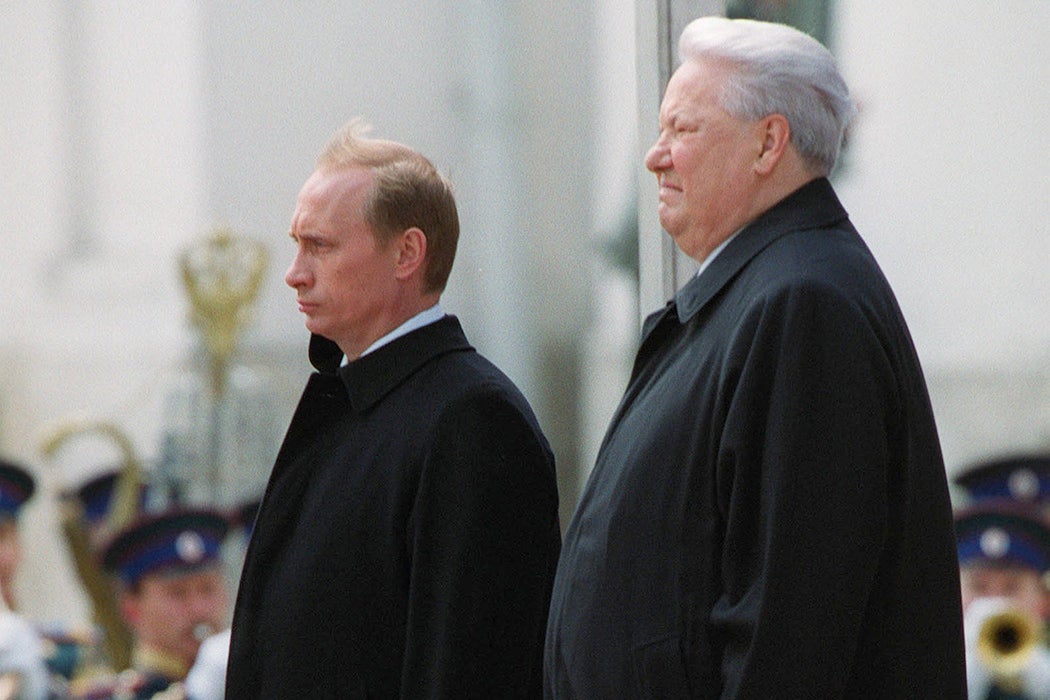
It is the early hours of Russia’s invasion of Ukraine. No one knows what will happen next, but we hope the following stories from our archives will help readers understand the military, economic, and geographic history that has preceded this moment, and provide the resources and context for teachers and students in the days ahead. As always, JSTOR Daily links to JSTOR sources offer free access to all readers.

Russian History

How American Slavery Echoed Russian Serfdom

The February Revolution: Why Didn’t They Shoot?
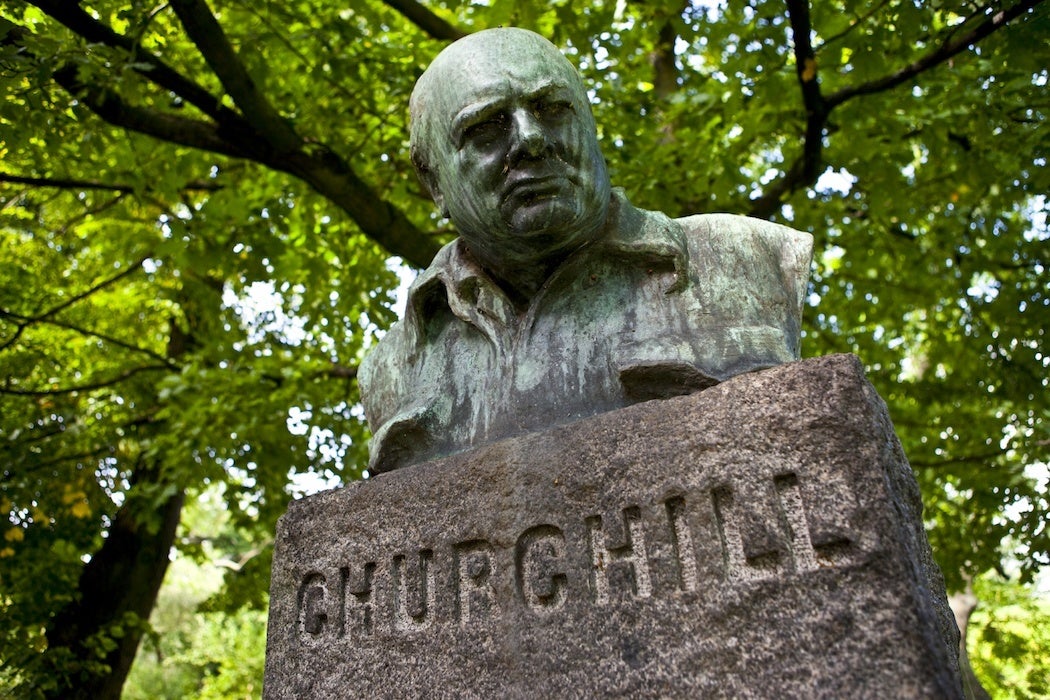
Revisiting Churchill’s “Iron Curtain” Speech
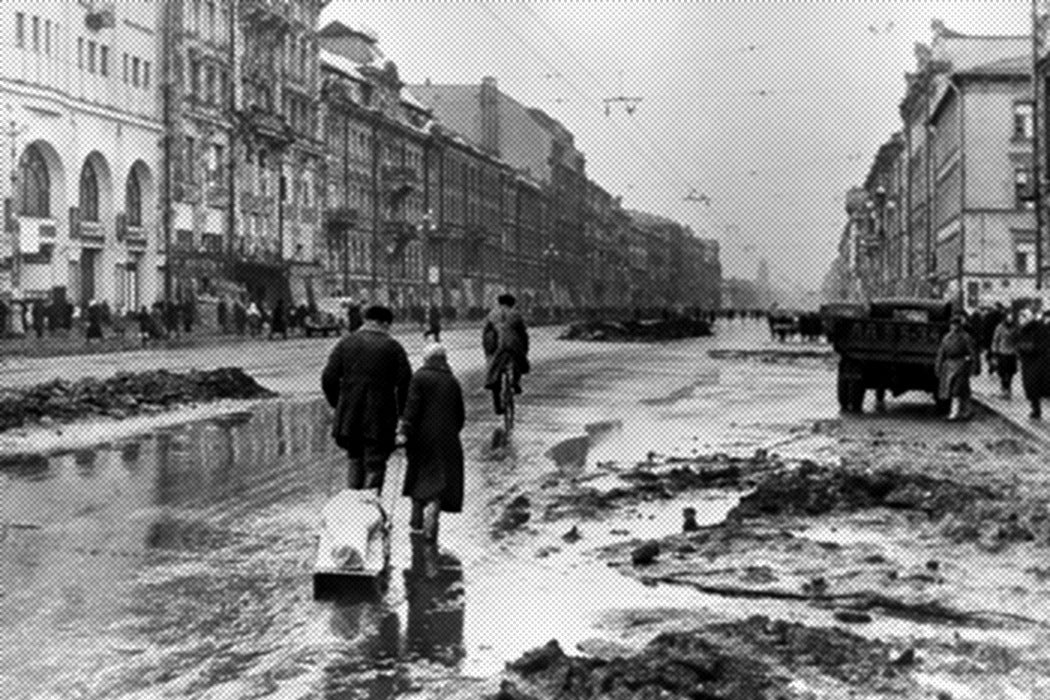
The Nazis’ Nightmarish Plan to Starve the Soviet Union
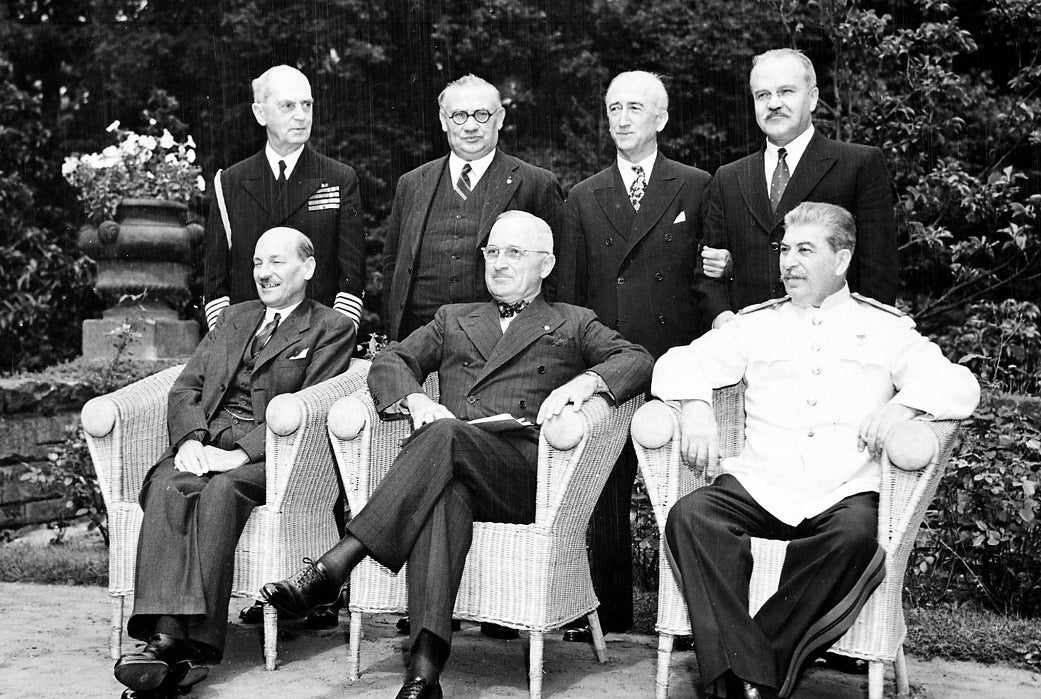
Potsdam and the Origins of the Cold War

The Unlikely Hippies of the USSR
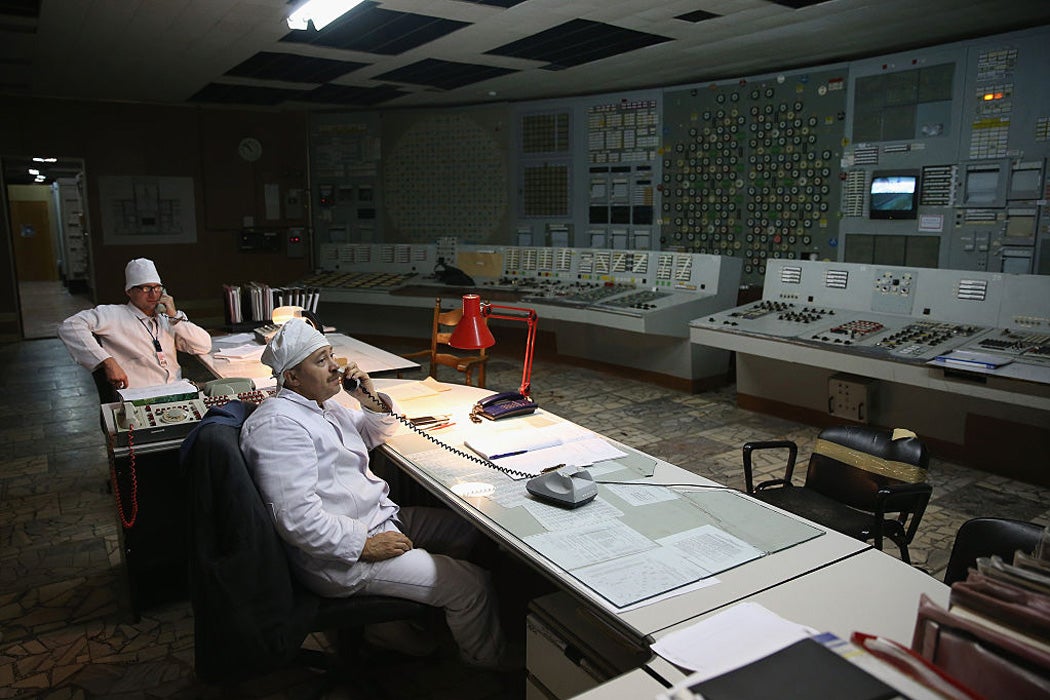
Chernobyl’s Control Room Is Open for Tourists
Russian/ussr leadership.

Peter the Great’s Beard Tax
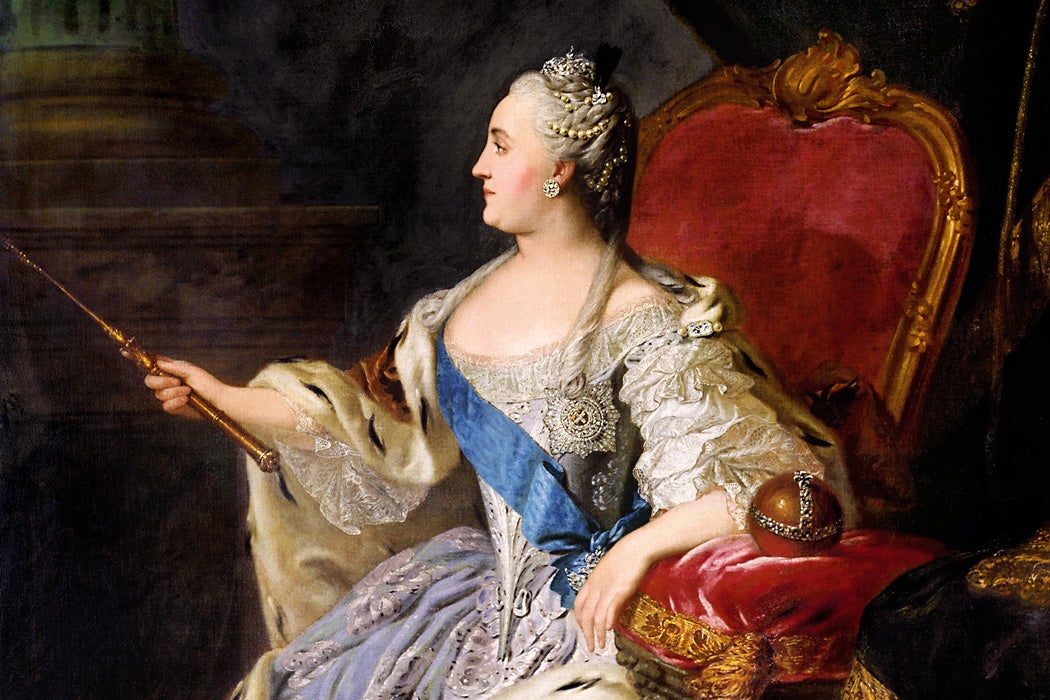
The Memoirs of Catherine The Great
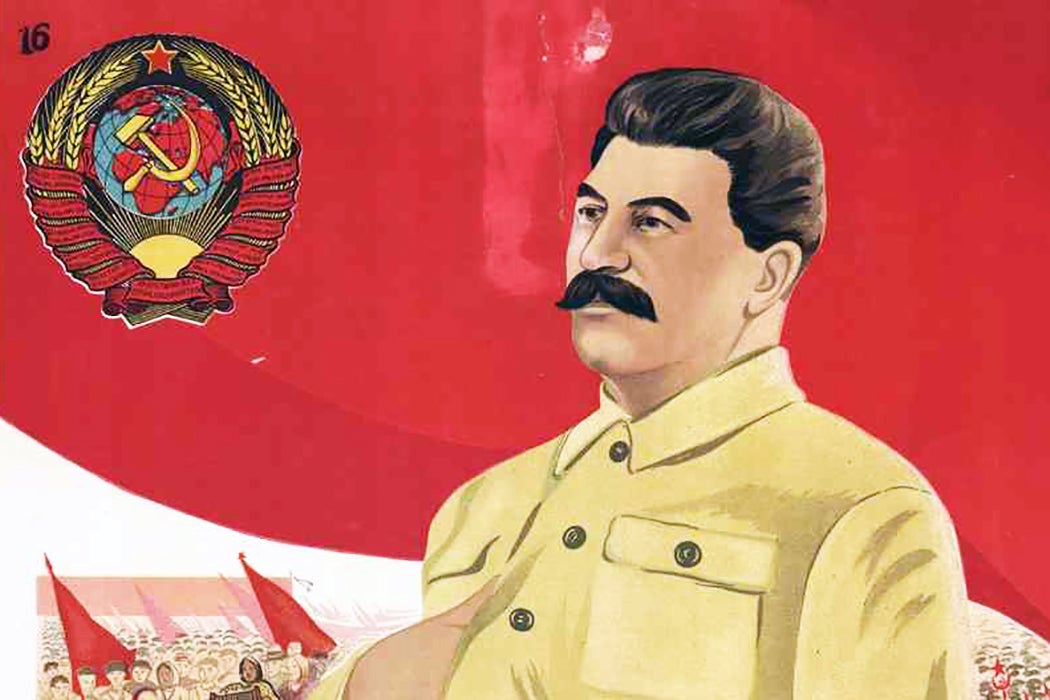
What Do We Really Know about Joseph Stalin?
Was russia destined to be an autocracy, censorship and human rights.
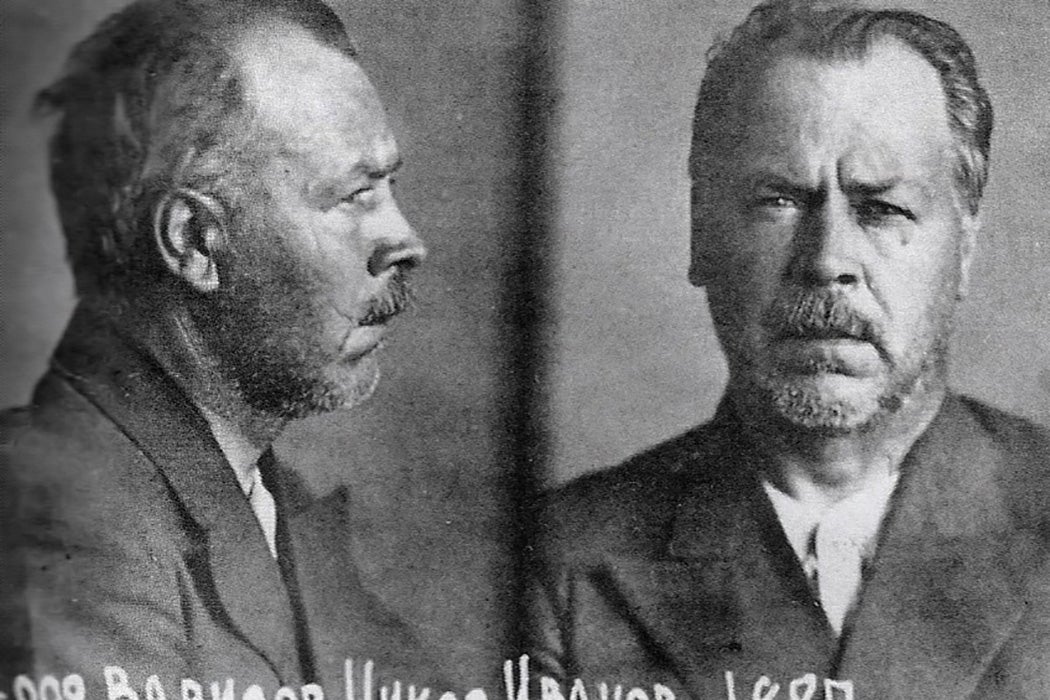
The Weed Scientist Who Brought Down the Wrath of Stalin
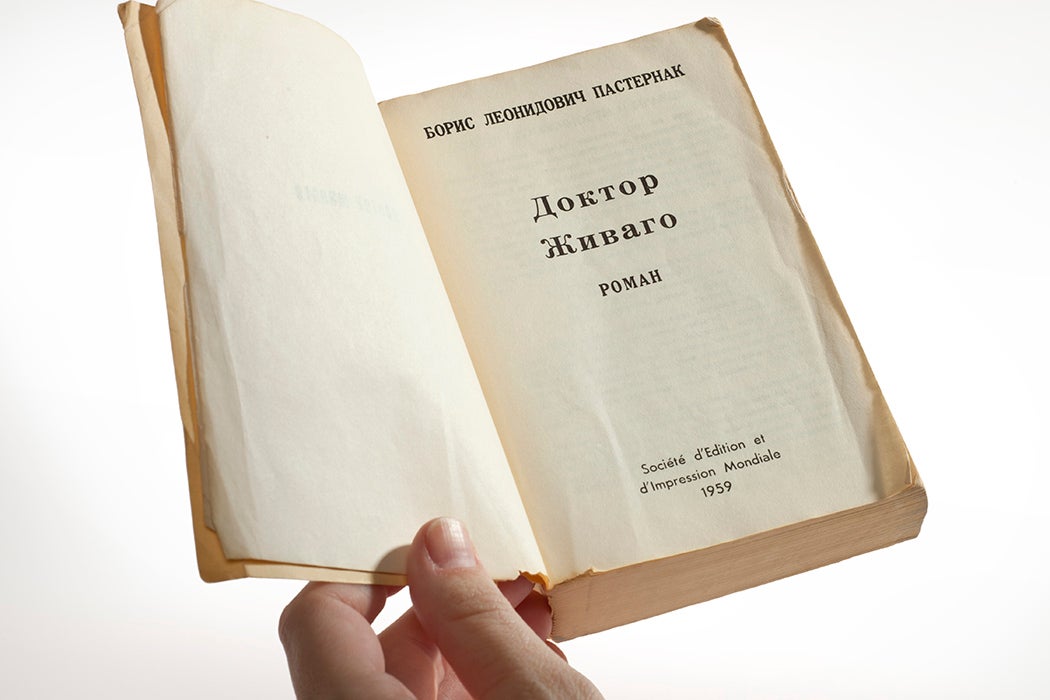
Why Boris Pasternak Rejected His Nobel Prize
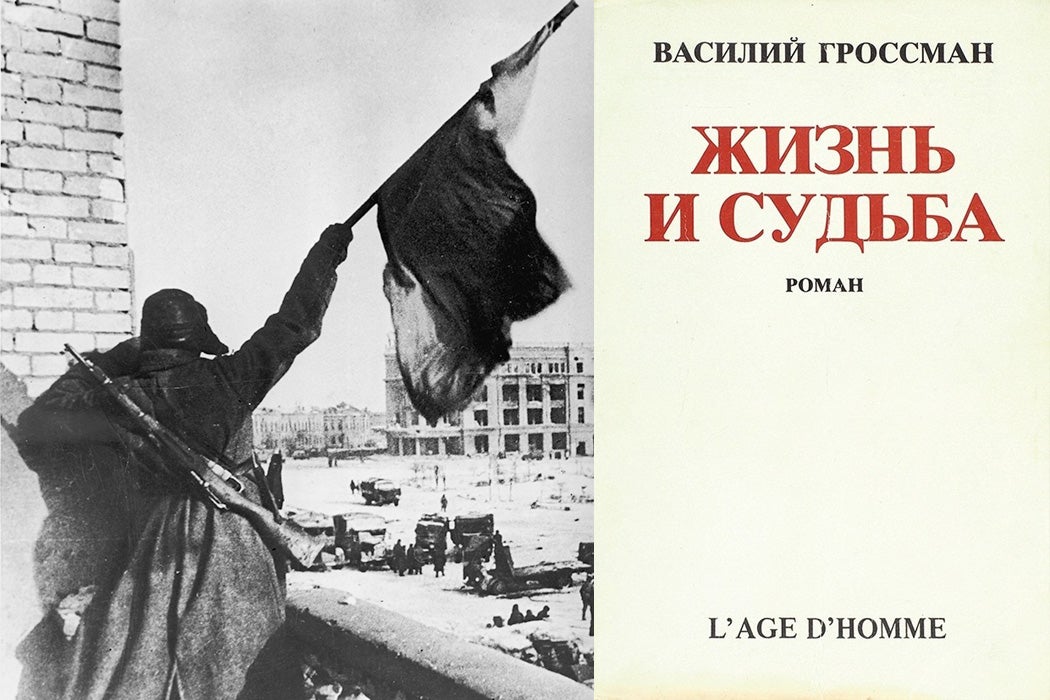
How a Forbidden Russian Epic Finally Got Published
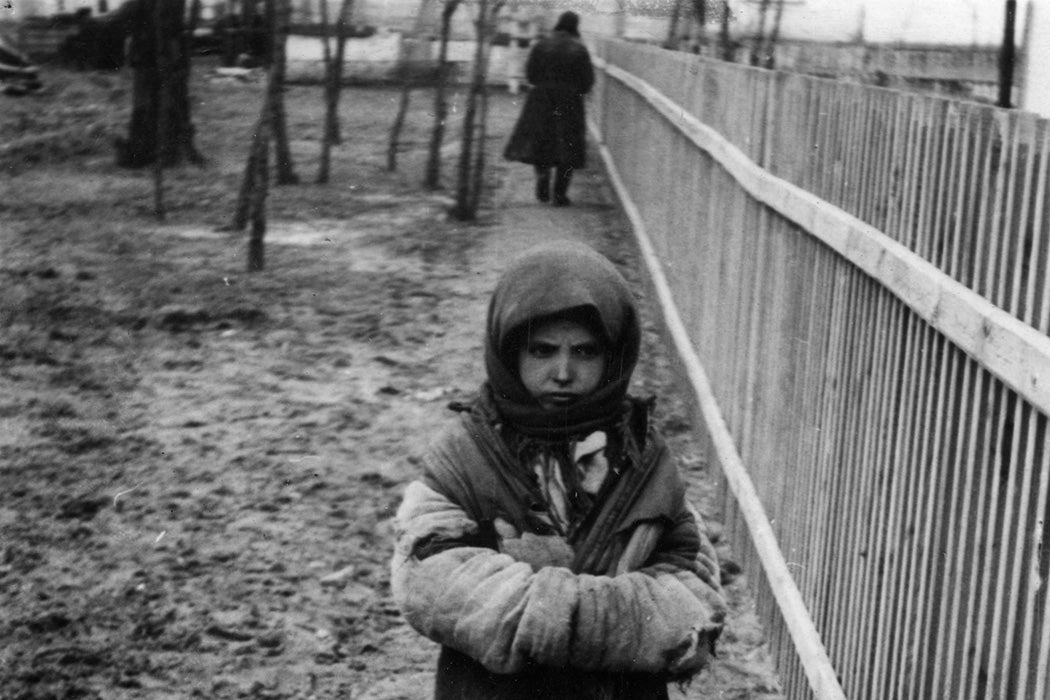
Memorializing Life Under Soviet Terror
International relations.
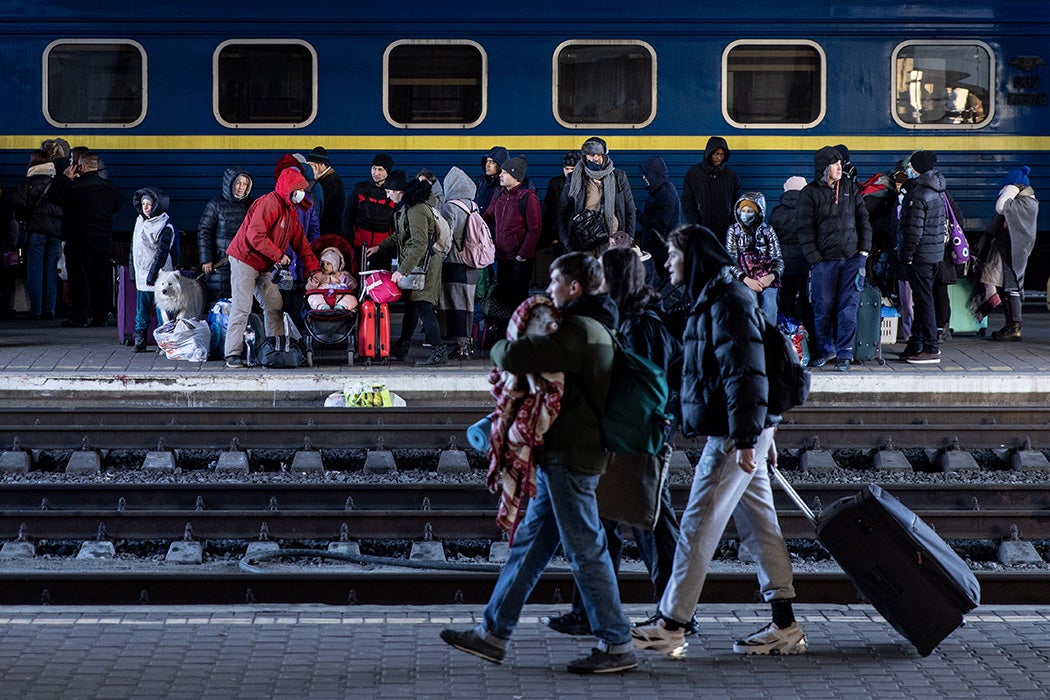
Ukraine, Russia, and the West: A Background Reading List
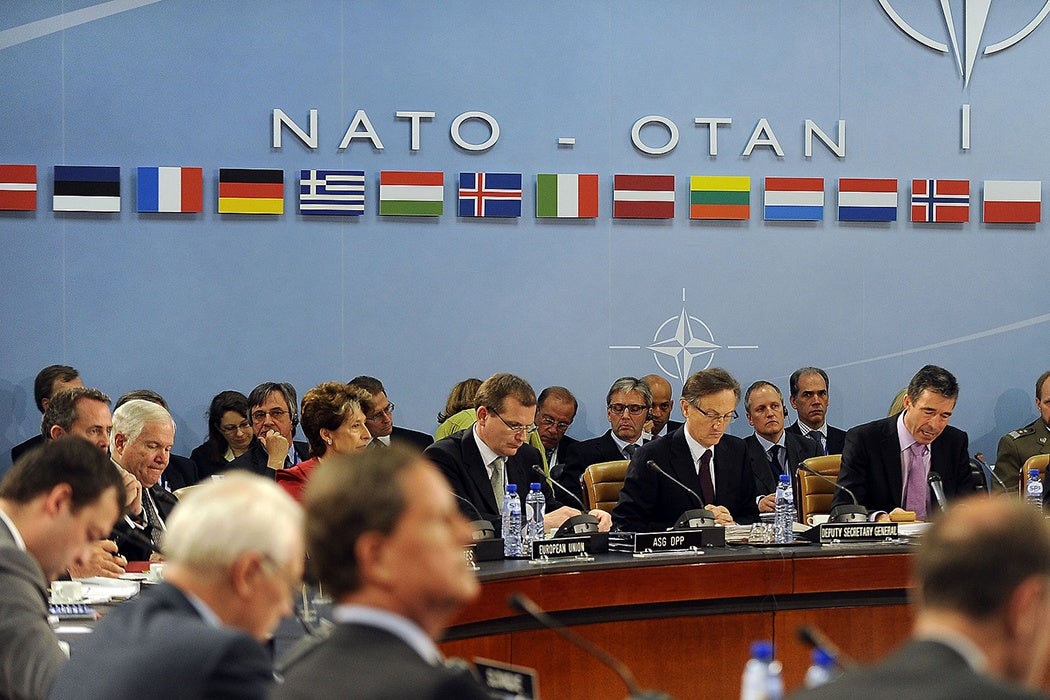
NATO Survives its Identity Crisis

The Real Meaning Behind Russia’s Eurovision Controversy
![russian history research topics Harem Pool Jean-Léon Gérôme [Public domain], via Wikimedia Commons](https://daily.jstor.org/wp-content/uploads/2016/03/Caucasus_1050x700.jpg)
The Other Orientalism: Colonialism in the Caucasus
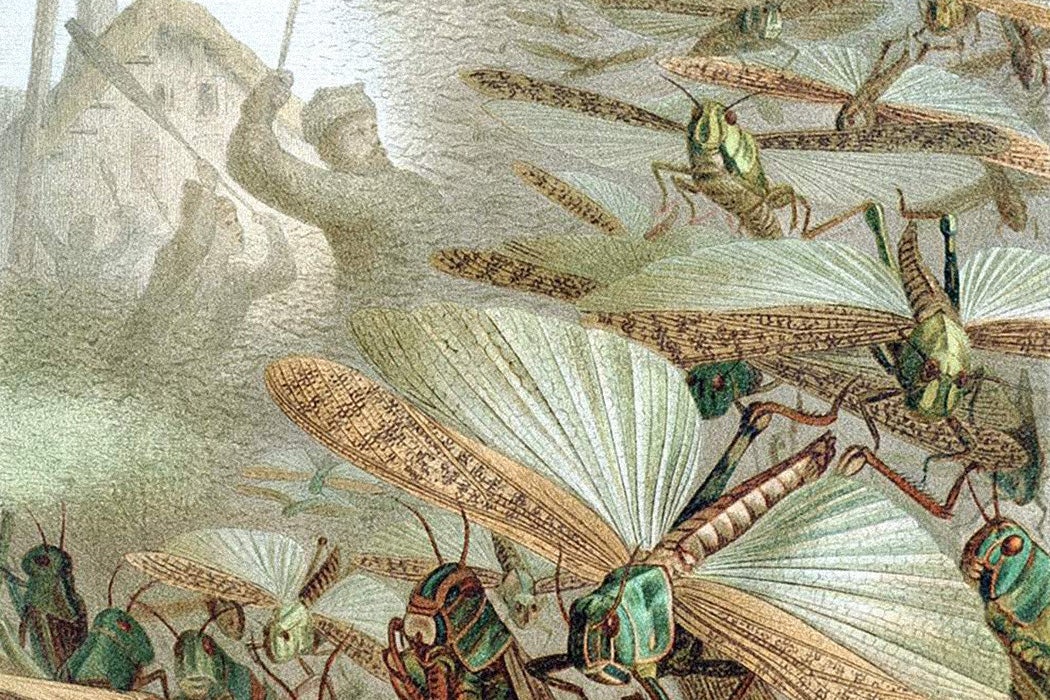
How the Soviet Union Turned a Plague into Propaganda
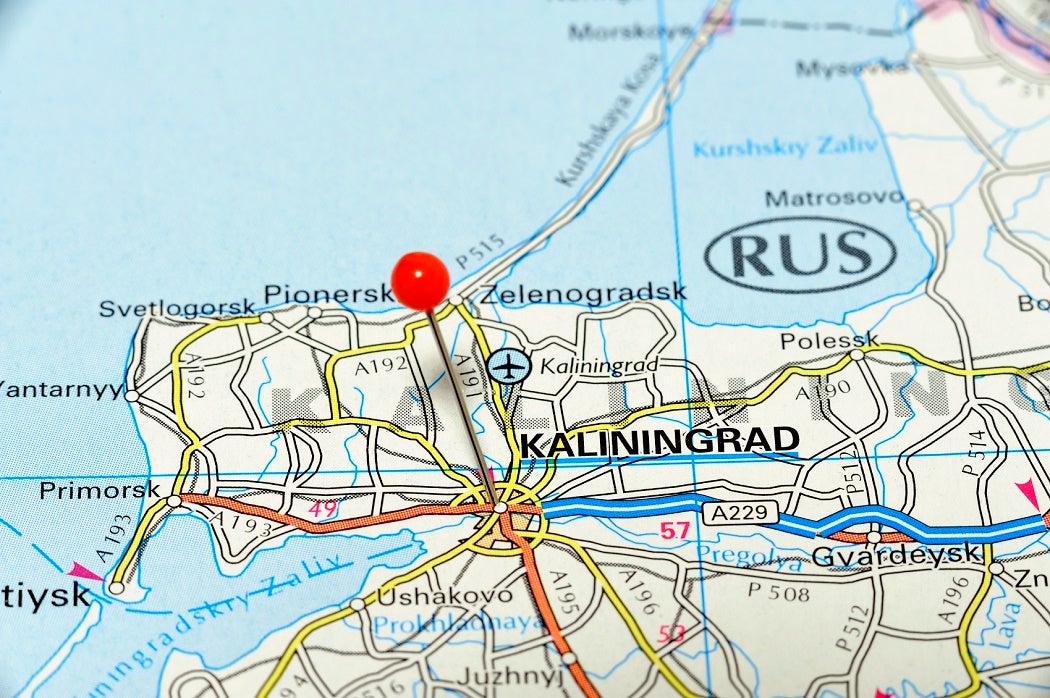
Kaliningrad for Beginners
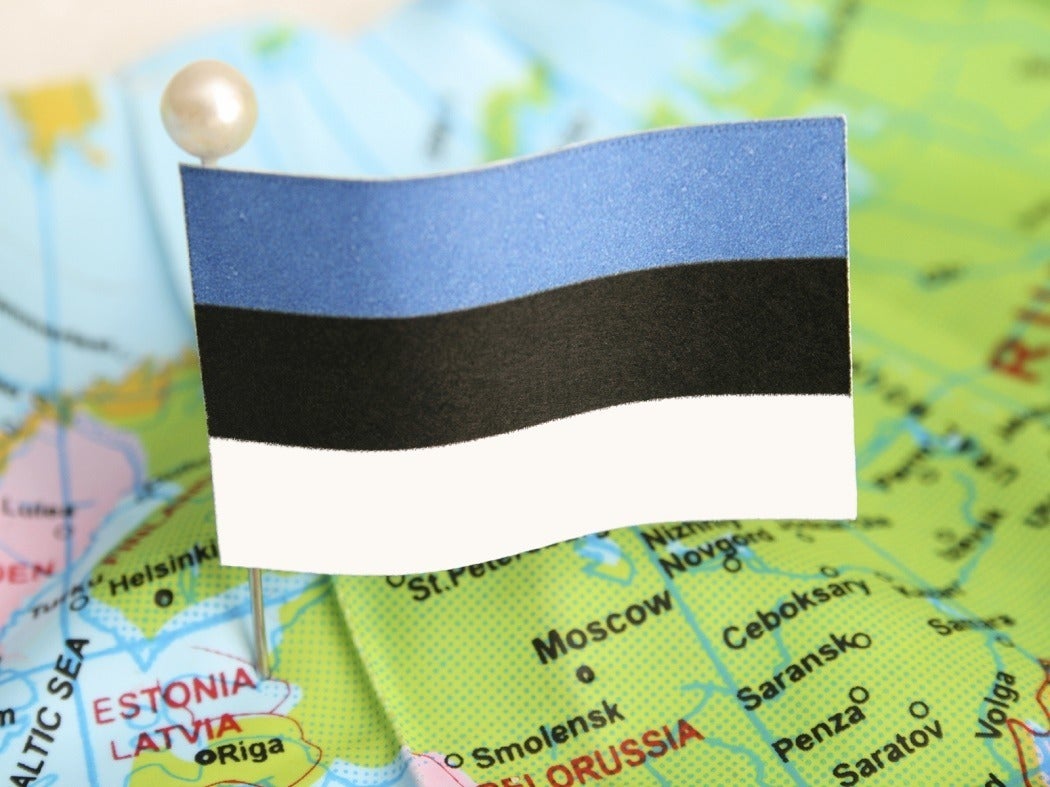
How Singing Started a Revolution in Estonia

Space Is The Place: The US, USSR, and Space Exploration

When Russia Conquered the World with White Oil
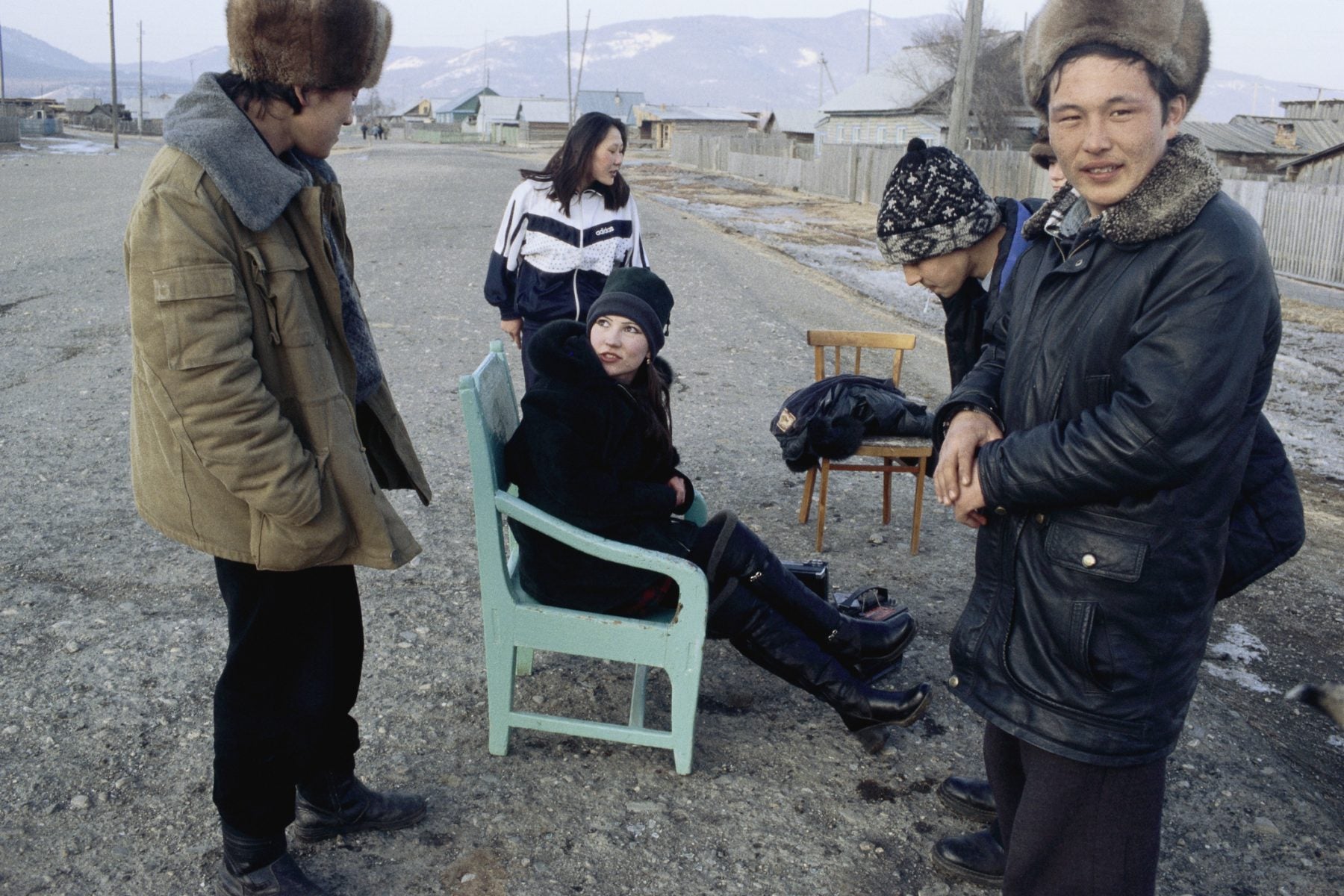
The New Siberians
Get our newsletter.
Get your fix of JSTOR Daily’s best stories in your inbox each Thursday.
Privacy Policy Contact Us You may unsubscribe at any time by clicking on the provided link on any marketing message.
More Stories

- Arakawa and Gins: An Eternal Architecture

Fredric Wertham, Cartoon Villain

Separated by a Common Language in Singapore
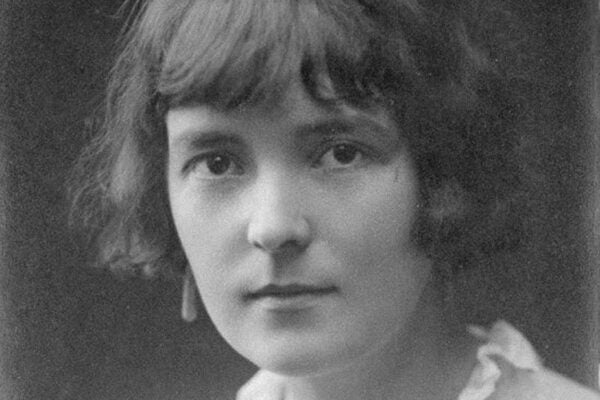
Katherine Mansfield and Anton Chekhov
Recent posts.
- Pakistan’s Ambiguous Islamic Identity
- Building Classroom Discussions around JSTOR Daily Syllabi
- Medieval Whalers, Smart Plants, and Space Mines
- Zheng He, the Great Eunuch Admiral
Support JSTOR Daily
Sign up for our weekly newsletter.

Intro to Russian History - HIS 231: Find Sources
- Find Sources
- Cite Sources
- Books in Begley Library
Find articles
Use these library databases to find articles on Russian history and other topics.
- Credo Reference This link opens in a new window Learn more about your topic. Use Credo to find background information, and identify key words to use as you continue your research. Credo is authoritative alternative to Wikipedia.
- JSTOR This link opens in a new window Start your research here. Find scholarly articles from history journals, generally from the first volume ever published, through three years ago.
- Humanities Source This link opens in a new window After you've tried JSTOR, use World History Collection. It includes magazines and scholarly journals pertaining to history.
- World History Collection This link opens in a new window Use Humanities Source next. This database contains peer-reviewed articles in all fields of the humanities, including history.
Search the library catalog or an ebook collection:
- Begley Library Catalog This link opens in a new window Use this to find books and DVDs in Begley Library, as well as ebooks to access online.
- eBook Central This link opens in a new window Use this to find ebooks in many academic subject areas. To search this and other ebook collections all at once, use the Begley Library catalog advanced search, limited to collection: electronic resources / ebook.
- eBook Collection This link opens in a new window Use this to find ebooks in academic subject areas. To search this and other ebook collections all at once, use the Begley Library catalog advanced search, limited to collection: electronic resources / ebook.
Ask Us 24/7
- Next: Cite Sources >>
- Last Updated: May 13, 2024 11:17 AM
- URL: https://libguides.sunysccc.edu/IntrotoRussianHistory

How Russian history—and human psychology—can explain the crisis in Ukraine
The Belfer Center's Paul Kolbe, a former CIA officer, shares his expertise as the volatile situation in the country unfolds.
Paul Kolbe is the director of the Intelligence Project at Harvard Kennedy School's Belfer Center for Science and International Affairs. His 25-year career in the CIA included operational and leadership roles in the former Soviet Union, and he has deep experience with the region and its people. “It's in these moments when you really do want to be in the fray, but that said, I think it's interesting to watch it from a different perspective,” he said of his current role at HKS. We spoke with Kolbe about the crisis in Ukraine, about Putin and his motivations, and about how Russians feel about a possible invasion.
Q: Aside from the significant humanitarian concern (the international aid organization CARE called Ukraine one of the “most under-reported humanitarian crises of 2021”), why would the United States be involved in this crisis?
Our involvement is critical for a number of reasons. From a principled standpoint, if the United States stands for democracy, if it stands for freedom of nations and peoples to choose their paths, if it stands opposed to aggression and efforts to change borders by force, then this is the ideal example of exactly where we should be walking the walk and not just talking the talk. Ukraine is an independent country, recognized by the United Nations, and it is being threatened by Russia in a campaign to subvert the government, undermine the economy and force it to constrain its choices with whom it chooses to associate, what organizations it joins, and how it defines its own national security.
No one wants a war on the European continent. It presents a global security threat, one that could easily escalate. It's an extraordinarily dangerous situation. And there is also the economic impact – an enormous disruption in the global energy markets, not just gas and oil flows to Europe, but in the exacerbation of inflation.
Q: How does this conflict differ from the annexation of Crimea in 2014?
The Crimean takeover came as a surprise to the West. Folks were watching what was happening in Kyiv, the revolution, the violence that was taking place there. I don't know of anyone back then who said, “What’s now going to happen is the Russians will take over Crimea.” Partly it was because of the way it was done. Russia already had a huge military presence in Crimea with its Black Sea naval base. It was an operation that could be executed in a way that disguised what was really happening. It was also ready to execute because they’d been preparing the ground to do that for many years in advance. With Ukraine, the West is clearly on alert with strategic warning of what’s happening. There has also been remarkable coordination and clarity to try to address the situation to help encourage de-escalation and to find a path of incentives and disincentives, which will prevent war.

“I think above all, Putin will want to negotiate from a position of strength, and he may believe occupying parts of Ukraine or being in a position where folks are forced to accommodate to his will, is that strength.”
Q: There has been so much disinformation from the Kremlin concerning Ukraine.
Yes, Russia is giving very different interpretations of what we all see is actually happening. The United States is using intelligence, which it is declassifying to help expose what it sees happening, as well as of pure open-source information. What we’ve seen in social media, in comments and postings, in commercial satellite imagery, all confirms and reinforces the facts on the ground. It’s as if a bulked-up boxer has his fist in your face, staring at you and uttering words which sound threatening and are threatening. While someone just behind him can say “nothing is going on here, there's no threat,” you know that fist could smash your face. The concern of an invasion is absolutely legitimate.
Q: What is Putin’s motivation?
The reasons behind this invasion are complex and multifaceted and include history and psychology, longstanding grievances and grudges, and a bitter resentment of NATO. History is extraordinarily important. Vladimir Putin, former KGB officer, second chief directorate based in East Germany during the collapse of the Wall and during the collapse of the Soviet Union, saw everything he was loyal to fall apart around him. He saw the chaos which followed the collapse of the Soviet Union.
Many Russians blame the West for that. I think it’s wrong. The West was working hard and with good intentions to pour billions of dollars into Russia to help it privatize, to help stabilize it with the anticipation that Russia would emerge at the end with a vibrant economy and democracy. Neither of those played out. Democracy came to be seen as a threat.
As for NATO, Russia believes it was lied to, that NATO poses a threat. They see USAID, different governmental and non-governmental institutions that work on democracy, even the Peace Corps, as part of plan to undermine the role of the leaders of the Kremlin.
One of the factors that is not talked about much with this crisis is how the Russian people feel about it. Recent polling shows there is no clamor for a war of choice with Ukraine. And there has been commentary in military circles of bewilderment about why Russia would go to war. There is no threat from NATO against Russia. Ukraine certainly poses no threat. Many experts feel this aggression masks the many domestic problems Russia is facing such as the mismanagement of the COVID crisis and the struggling economy under sanctions. If a full-scale war were to break out in Ukraine, I think while there would be an initial patriotic surge to support troops in action, once the true cost of that in terms of casualties and what it means for Russia for the next decades, could mean the beginning of the end of the Putin regime.
Q: Does this mean Putin may be open to negotiations?
I honestly don’t know. I think above all, Putin will want to negotiate from a position of strength, and he may believe occupying parts of Ukraine, or being in a position where folks are forced to accommodate to his will, is that strength. But I do believe there is room for negotiation. I believe it is clearly in the interest of everyone to find a set of agreements that can lead to enduring stability in Europe over the next decades. Overall, I think the Biden administration has a done a very good job with this extraordinarily difficult problem, one that has been growing and festering for the last 20 years. Some administrations have willfully ignored the situation, and some employed a policy to sideline Russia, which is a fundamental mistake. So for now, the prospects for a peaceful negotiation may seem dim but does that mean an invasion is inevitable? No. Decisions can always be changed. Views can change, even at the last instant.
— Banner image: Ukrainian civilian volunteers and reservists of the Kyiv Territorial Defense unit conduct weekly combat training in an abandoned asphalt factory on the outskirts of Kiev, as Russian forces continue to mobilize en masse on the Ukrainian border in February 2022. Photo by Justin Yau/Sipa USA/AP
More from HKS
Russia isn’t a dead petrostate, and putin isn’t going anywhere, a scholar’s diplomatic advice on what to do with russia, the ukraine-russia crisis: can diplomacy and democracy prevail.
Get smart & reliable public policy insights right in your inbox.
- Skip to search box
- Skip to main content
Princeton University Library
Russian & soviet history.
- Primary Sources: Published
- Primary Sources: Unpublished
- Online Library Catalogs
- Library of Congress Call Number Ranges for Russian/Soviet History
- Secondary Sources: Articles
Russian Revolution
By: History.com Editors
Updated: March 27, 2024 | Original: March 12, 2024

The Russian Revolution of 1917 was one of the most explosive political events of the 20th century. The violent revolution marked the end of the Romanov dynasty and centuries of Russian Imperial rule. Economic hardship, food shortages and government corruption all contributed to disillusionment with Czar Nicholas II. During the Russian Revolution, the Bolsheviks, led by leftist revolutionary Vladimir Lenin, seized power and destroyed the tradition of czarist rule. The Bolsheviks would later become the Communist Party of the Soviet Union.
When Was the Russian Revolution?
In 1917, two revolutions swept through Russia, ending centuries of imperial rule and setting into motion political and social changes that would lead to the eventual formation of the Soviet Union .
However, while the two revolutionary events took place within a few short months of 1917, social unrest in Russia had been brewing for many years prior to the events of that year.
In the early 1900s, Russia was one of the most impoverished countries in Europe with an enormous peasantry and a growing minority of poor industrial workers. Much of Western Europe viewed Russia as an undeveloped, backwards society.
The Russian Empire practiced serfdom—a form of feudalism in which landless peasants were forced to serve the land-owning nobility—well into the nineteenth century. In contrast, the practice had disappeared in most of Western Europe by the end of the Middle Ages .
In 1861, the Russian Empire finally abolished serfdom. The emancipation of serfs would influence the events leading up to the Russian Revolution by giving peasants more freedom to organize.
What Caused the Russian Revolution?
The Industrial Revolution gained a foothold in Russia much later than in Western Europe and the United States. When it finally did, around the turn of the 20th century, it brought with it immense social and political changes.
Between 1890 and 1910, for example, the population of major Russian cities such as St. Petersburg and Moscow nearly doubled, resulting in overcrowding and destitute living conditions for a new class of Russian industrial workers.
A population boom at the end of the 19th century, a harsh growing season due to Russia’s northern climate, and a series of costly wars—starting with the Crimean War —created frequent food shortages across the vast empire. Moreover, a famine in 1891-1892 is estimated to have killed up to 400,000 Russians.
The devastating Russo-Japanese War of 1904-1905 further weakened Russia and the position of ruler Czar Nicholas II . Russia suffered heavy losses of soldiers, ships, money and international prestige in the war, which it ultimately lost.
Many educated Russians, looking at social progress and scientific advancement in Western Europe and North America, saw how growth in Russia was being hampered by the monarchical rule of the czars and the czar’s supporters in the aristocratic class.
Russian Revolution of 1905
Soon, large protests by Russian workers against the monarchy led to the Bloody Sunday massacre of 1905 . Hundreds of unarmed protesters were killed or wounded by the czar’s troops.
The Bloody Sunday massacre sparked the Russian Revolution of 1905, during which angry workers responded with a series of crippling strikes throughout the country. Farm laborers and soldiers joined the cause, leading to the creation of worker-dominated councils called “soviets.”
In one famous incident, the crew of the battleship Potemkin staged a successful mutiny against their overbearing officers. Historians would later refer to the 1905 Russian Revolution as ‘the Great Dress Rehearsal,” as it set the stage for the upheavals to come.
Nicholas II and World War I
After the bloodshed of 1905 and Russia’s humiliating loss in the Russo-Japanese War, Nicholas II promised greater freedom of speech and the formation of a representative assembly, or Duma, to work toward reform.
Russia entered into World War I in August 1914 in support of the Serbs and their French and British allies. Their involvement in the war would soon prove disastrous for the Russian Empire.
Militarily, imperial Russia was no match for industrialized Germany, and Russian casualties were greater than those sustained by any nation in any previous war. Food and fuel shortages plagued Russia as inflation mounted. The already weak economy was hopelessly disrupted by the costly war effort.
Czar Nicholas left the Russian capital of Petrograd (St. Petersburg) in 1915 to take command of the Russian Army front. (The Russians had renamed the imperial city in 1914, because “St. Petersburg” sounded too German.)
Rasputin and the Czarina
In her husband’s absence, Czarina Alexandra—an unpopular woman of German ancestry—began firing elected officials. During this time, her controversial advisor, Grigory Rasputin , increased his influence over Russian politics and the royal Romanov family .
Russian nobles eager to end Rasputin’s influence murdered him on December 30, 1916. By then, most Russians had lost faith in the failed leadership of the czar. Government corruption was rampant, the Russian economy remained backward and Nicholas repeatedly dissolved the Duma , the toothless Russian parliament established after the 1905 revolution, when it opposed his will.
Moderates soon joined Russian radical elements in calling for an overthrow of the hapless czar.
February Revolution
The February Revolution (known as such because of Russia’s use of the Julian calendar until February 1918) began on March 8, 1917 (February 23 on the Julian calendar).
Demonstrators clamoring for bread took to the streets of Petrograd. Supported by huge crowds of striking industrial workers, the protesters clashed with police but refused to leave the streets.
On March 11, the troops of the Petrograd army garrison were called out to quell the uprising. In some encounters, the regiments opened fire, killing demonstrators, but the protesters kept to the streets and the troops began to waver.
The Duma formed a provisional government on March 12. A few days later, Czar Nicholas abdicated the throne, ending centuries of Russian Romanov rule.
Alexander Kerensky
The leaders of the provisional government, including young Russian lawyer Alexander Kerensky, established a liberal program of rights such as freedom of speech, equality before the law, and the right of unions to organize and strike. They opposed violent social revolution.
As minister of war, Kerensky continued the Russian war effort, even though Russian involvement in World War I was enormously unpopular. This further exacerbated Russia’s food supply problems. Unrest continued to grow as peasants looted farms and food riots erupted in the cities.
Bolshevik Revolution
On November 6 and 7, 1917 (or October 24 and 25 on the Julian calendar, which is why the event is often referred to as the October Revolution ), leftist revolutionaries led by Bolshevik Party leader Vladimir Lenin launched a nearly bloodless coup d’état against the Duma’s provisional government.
The provisional government had been assembled by a group of leaders from Russia’s bourgeois capitalist class. Lenin instead called for a Soviet government that would be ruled directly by councils of soldiers, peasants and workers.
The Bolsheviks and their allies occupied government buildings and other strategic locations in Petrograd, and soon formed a new government with Lenin as its head. Lenin became the dictator of the world’s first communist state.
Russian Civil War
Civil War broke out in Russia in late 1917 after the Bolshevik Revolution. The warring factions included the Red and White Armies.
The Red Army fought for the Lenin’s Bolshevik government. The White Army represented a large group of loosely allied forces, including monarchists, capitalists and supporters of democratic socialism.
On July 16, 1918, the Romanovs were executed by the Bolsheviks. The Russian Civil War ended in 1923 with Lenin’s Red Army claiming victory and establishing the Soviet Union.
After many years of violence and political unrest, the Russian Revolution paved the way for the rise of communism as an influential political belief system around the world. It set the stage for the rise of the Soviet Union as a world power that would go head-to-head with the United States during the Cold War .
The Russian Revolutions of 1917. Anna M. Cienciala, University of Kansas . The Russian Revolution of 1917. Daniel J. Meissner, Marquette University . Russian Revolution of 1917. McGill University . Russian Revolution of 1905. Marxists.org . The Russian Revolution of 1905: What Were the Major Causes? Northeastern University . Timeline of the Russian Revolution. British Library .
Photo Galleries

HISTORY Vault: Vladimir Lenin: Voice of Revolution
Called treacherous, deluded and insane, Lenin might have been a historical footnote but for the Russian Revolution, which launched him into the headlines of the 20th century.

Sign up for Inside History
Get HISTORY’s most fascinating stories delivered to your inbox three times a week.
By submitting your information, you agree to receive emails from HISTORY and A+E Networks. You can opt out at any time. You must be 16 years or older and a resident of the United States.
More details : Privacy Notice | Terms of Use | Contact Us
Russian and Slavic Studies resources
- Finding books
- Ebooks at NYU
- Open Access
- Articles and databases
- Dissertaions
- Online reference
- Data: stats, maps, GIS
- Politics/Current events
- Language learning
- Philosophy and Religion
- Blogs/DH projects
- Other Slavic resources
Primary sources at NYU
- Readex AllSearch This link opens in a new window Readex AllSearch allows users to cross search primary sources: books, pamphlets, newspapers, government documents, and more.
- Secret Files from World Wars to Cold War This link opens in a new window Secret Files from World Wars to Cold War contains British government secret intelligence and foreign policy files from 1873 – 1953. The content enables rich research into the intelligence, foreign policy, international relations, and military history in the period of Appeasement, through the Second World War, and into the early Cold War. Provides insights into Britain’s spies, security agents, codebreakers, and more.
- Cold War Eastern Europe This link opens in a new window Provides access to 6,000+ primary source files from the political departments of the U.K. Foreign Office. During the Cold War, the U.K. Foreign Office and their embassies and consulates throughout Eastern Europe were interested in every aspect of political, economic, cultural, social, and dissident life behind the “Iron Curtain.” Reports covered a hugely diverse range of issues, from state leadership to protest movements; agricultural output to international trade agreements; scientific progress to minority populations; religion to sporting events; and state run media to popular culture.
- Tamiment Collection: Guide to the CPUSA The Communist Party of USA archive contains documents, audio recordings and state-produced documentaries and amateur films from the former Soviet Union and other communist nations as well as documents related to the cooperation between communist parties of the USSR and USA.
History of the Russian Diaspora
- Russia Beyond Russia: The André Savine Digital Library Russia Beyond Russia: The André Savine Digital Library brings together André Savine’s research on the Russian diaspora, the holdings of the André Savine Collection at the University of North Carolina at Chapel Hill, and full texts from the ongoing digitization of Savine Collection materials.
- << Previous: Data: stats, maps, GIS
- Next: Politics/Current events >>
- Last Updated: Apr 13, 2024 9:07 PM
- URL: https://guides.nyu.edu/russian-and-slavic

- SHSU Library
- Research Guides
HIST 3365: Russian History Research Guide
- Find Articles
- Find Primary Sources
- Watch Videos
- Other Useful Tools
- Chicago Citation Style

This guide is intended to provide a starting point for researching various topics in Russian history.
This guide is not comprehensive; it does not list all of the resources on this topic or in related disciplines owned by the Library or available on the Internet. This guide serves merely as a starting point for research.
Dictionaries, Encyclopedias, and Other Reference Books
Search a selection of print and electronic encyclopedias, dictionaries, and other Reference books.
Search Input
Subject Headings
Subject headings allow you to find books according to broader and narrower topics.
Below are sample subjects. To browse for different, broader, or narrower subjects, go to the library catalog and click "Exact Search." Enter a term and click "subject."
You can start browsing for a broad subject like Education , then look for more specific subjects, such as Education England History 18th century .
Once you know some subject headings, you can also just use them as keywords during an advanced search, using the subject row.
- Russia History
- Russia History 17th Century
- Russia History 18th Century
- Russia History 19th Century
- Russia History 20th Century
- Soviet Union
- Soviet Union History Revolution, 1917-1921
- Soviet Union History Revolution, 1917-1921, Causes
- Soviet Union History Revolution, 1917-1921, Personal narratives
- Soviet Union History Revolution, 1917-1921, Sources
- Ivan IV, Czar of Russia, 1530-1584
- Peter I, Emperor of Russia, 1672-1725
- Lenin, Vladimir Il’ich, 1870-1924
- Stalin, Joseph, 1879-1953
- Gorbachev, Mikhail Sergeevich, 1931-
- Putin, Vladimir Vladimirovich, 1952-
Browse the Collection
An excellent way to discover additional resources is to browse for books in relevant call number ranges.
DK1 - DK949.5 - History of Russia, Soviet Union, Former Soviet Republics
DK70 - DK112.42 - Early history to 1613
DK112.8 - DK264.8 - House of Romanov, 1613-1917
DK265 - DK265.95 - Revolution, 1917-1921
DK266 - DK292 - Soviet regime, 1918-1991
DK293 - History, 1991--
DK500 - DK949.5 - Regional and local history and description (see link below for specific places)
To discover the call number ranges for broader, narrower, or different subjects, consult the Library of Congress Classification Outline .
Search the Library Catalog
Search for books and other items in the library catalog.
Search Catalog Search fields Keyword Author Title Subject Series Title ISBN Periodical Title Search Options All Ebooks Only
More Search Options
Video Refresher: Intro to Searching the Catalog
Click the icon in the bottom right corner of the video player to view it in full screen!
Books in the Main Collection - A Sampling
- Next: Find Articles >>
- Last Updated: Dec 11, 2023 12:15 PM
- URL: https://shsulibraryguides.org/russia
Newton Gresham Library | (936) 294-1614 | (866) NGL-INFO | Ask a Question | Share a Suggestion Sam Houston State University | Huntsville, Texas 77341 | (936) 294-1111 | (866) BEARKAT © Copyright Sam Houston State University | All rights reserved. | A Member of The Texas State University System
- Where can I find good samples?
- Main features of a skilled writer
- Quick ways to find a decent sample
- Getting cheap projects for sale
- Attributes of a good project
- 5 rules of a cover page
- Getting sample with citations
- 5 ways to write cover page in APA
- How to get custom reseach papers
- How to properly cite sources
- Writing a project on bullying
- US literature paper examples
- Writing a marketing project
- Citing sources in APA paper
- Writing paper in a day
- Elements of a college paper
- How to order term papers
- Finding a well-qualified writer
- Getting custom term papers
- Introduction for paper on abortion
- William Shakespeare
- Tips on Holocaust
- Project on nutrition
- Ideas in economics
- Russian history
- Ethics in finance
- 18 topics on European history
- Autism interventions
- Thesis for paper on interior design
- English customs & traditions
Interesting Russian History Research Paper Topics To Choose From
Russia is a large country with a rich history. There are plenty of topics to write an interesting history research paper related to Russia. Unfortunately, not all students can come up with excellent ideas for their projects. If you’re struggling with generating a topic for your own paper, you may need to take a look at sample topics for inspiration.
Topics for a History Research Paper about Russia
- The Novgorod Republic.
In the 12th-15th centuries, The Novgorod Republic was considered to be a center of intelligence and art.
- Peter the Great and the Navy.
The Russian Navy was significantly modernized during the rule of Peter the Great. What was his influence on the industry?
- Trans-Siberian railway.
The construction of this railway was very important for Russia. Discuss the reasons for building it and results of this process.
- Modern Russia and democracy.
Discuss in your paper whether Russia can be considered a democratic country. Compare it to other East European countries.
- Catherine the Great and her rule.
The empress has contributed significantly to the expansion of Russian borders. Describe the features of her rule.
- Joseph Stalin and the Industrialization.
Analyze the positive and negative effects of this economic rehabilitation in your term paper. Could it have been done in a different way?
- Russian mafia.
After the fall of the USSR, a lot of criminal organizations have appeared. Analyze the reasons for their emergence and history of their evolvement.
- The Cold War.
For a long time, the Soviet Union was in the state of a cold war with the Western world. Describe these times in your history project.
- The USSR in World War II.
Study the contribution of the Soviet Union to destroying the forces of Nazi Germany and the impact of the war on the country.
- Russo-Chinese cooperation.
Russia and China engaged in military cooperation after the Cold War had ended. What are the reasons for these countries to be allied?
Writing Your History Research Paper
Many students start writing some parts of their papers before they’ve conducted their study. This often leads to either poorly written papers or plenty of changes and amendments in their first drafts. Gather and analyze information to achieve some results and only then start making your outline and composing your history project. It’s advisable to complete the main body chapters in the beginning and only then move on to writing an introduction and conclusion. Don’t forget to create a section for appendices.
This site uses third party services that need your consent. Learn more
This website requires Javascript for some parts to function properly. Your experience may vary.
3 Questions: Russian intellectual history as a practice and project (Historia Nova Interviews)
What kinds of intellectual projects would be most beneficial for our shared fields?
Nancy Condee is Professor of Slavic and Film Studies at the University of Pittsburgh. She also directs Pitt’s REES Center, one of eleven US federally-funded resource centers.
Background: On the fifth anniversary of the Historia Nova Prize, Irina Prokhorova poses three questions to the HN winners on the current state of intellectual history in Russian studies. Established in 2012 by the Mikhail Prokhorov Foundation, the Historia Nova Prize r ecognizes the best scholarly work in English.
Debates on intellectual history have been waged in Russia’s lead journals, including New Literary Observer , most notably in the Issue 66 (“Paradigms of Intellectual History”) and Issue 140 (“Arguing about Modernity”). Here we offer five brief responses to questions on intellectual history posed by NLO Editor-in-Chief Irina Prokhorova. Widely regarded as a literary critic, cultural historian, and director of the NLO publishing house, Ms. Prokhorova has been internationally recognized—the Chevalier de l’Ordre des Arts et des Lettres (France), laureate of the Andrey Belyi Prize for Literature (Russia), AATSEEL Prize for Outstanding Service to the Profession (US)—as a colleague whose vision, creativity, and erudition has had a lasting impact on US Slavic studies for a quarter century.
Part One features the current Historia Nova winner Michael David-Fox , author of Crossing Borders: Modernity, Ideology, and Culture in Russia and the Soviet Union (University of Pittsburgh, 2015), with comments by the two finalists, Slava Gerovitch ( Soviet Space Mythologies: Public Images, Private Memories, and the Making of a Cultural Identity , University of Pittsburgh Press, 2015) and Ilya Vinitsky ( Vasily Zhukovsky's Romanticism and the Emotional History of Russia ; Northwestern University Press, 2015). Part Two offers comments by two publishers associated with the most recent award. Peter Kracht (University of Pittsburgh Press) and Igor Nemirovsky (Academic Studies Press), who collaborates with the Mikhail Prokhorov Foundation.
Part Two will be posted on Wednesday.
PART ONE: THE AUTHORS
The term “intellectual history” is, of course, a term of debate. How do you understand the legacies of intellectual history, their disciplinary engagements, and your scholarship as part of that project? What are the limitations of such a characterization for the work you do?
Michael David-Fox. It is an honor to receive the Historia Nova Prize. To me, intellectual history engages ideas and intellectual activity within a broader political or social context. Among historians in the postwar period it emerged out of the history of ideas, which continues to imply a more exclusive focus on the ideas themselves and such areas as the history of philosophy. But even though I have always leaned toward exactly the kind of contextualization implied in the notion of intellectual history—after all, my first lengthy academic work, my PhD dissertation on the Soviet 1920s, had “the transformation of intellectual life in the Soviet Union” in its subtitle, and almost every work I’ve written until recently dealt in some way with the history of the intelligentsia in Russia and the USSR—I do not consider myself to be only a practitioner of intellectual history. I’ve always done archival research, for example, on political and cultural history. For me, the most fascinating conceptual payoff in the Soviet field right now lies in seeking out the realm where ideas and ideologies interact and overlap with other causal factors.
Slava Gerovitch. Recent scholarship in my field, history of science and technology, reflects more general trends in intellectual history. Moving beyond the initial insights about ideas as gendered, ideology-laden, and culturally constrained, the scope now expands to include (1) the mutual shaping of memory and identity, and (2) non-verbal forms of articulation and circulation of ideas, such as technical skills, instruments and other material objects, and various symbolic representations. In my study of Soviet space mythologies, I look at several professional groups—the cosmonauts, the engineers, and the military—through the lens of their group cultures, studying a fascinating mix of written documents, visual imagery, and oral tradition, which reflected the practices that shaped their professional and public identity.
Ilya Vinitsky. I take the fact [of the award] not only as a sign of my book’s recognition by the authoritative jury, but also as a sign that books on literature (and I am a literary scholar) can successfully compete with historical studies in this category. In my research I focus on a literary text or a group of texts as the intersection and interplay of various historical forces – ideology, politics, psychology, law, etc. To paraphrase Roman Jakobson’s definition of literary language, I consider literature as intellectual and cultural history in its aesthetic function. My “shortlist” of major scholarly influences includes the “historical poetics” of Aleksandr Veselovskii (especially his 1902 book on the emotional background of early 19th-century Russian literature), the cultural semiotics of Yurii Lotman (which had, I believe, along with Yurii Tynianov’s theory of literary evolution, a major influence upon Russian scholars of my generation), as well as the works on cultural poetics and emotional history of Russian literature by Boris Gasparov and Andrei Zorin.
In my book on the “father of Russian Romanticism” Zhukovsky, I introduce the concept of “emotional biography” as an essential part of Russian emotional history. By “emotional biography” I mean not a fictionalized “history of the soul,” not a narrative of the poet’s creative, intellectual, or cultural evolution and, even less, a medical “psychography,” but a reconstruction of his emotional life in the historico-cultural context of high Romanticism [1790-1840s]—a period in which psychological experience was interpreted as a fundamental ideological category. In brief, I believe that the reconstruction of the poet’s emotional self-making allows us not only to trace the assimilation of Western literary forms of sentimentalism in Russian culture of this period, but also to follow—almost in the style of a daily journal—the formation of a specific personality type, new for Russian culture and not reducible to its varied Western sources. The limitations of this approach are obvious: emotions are so unreliable and misleading.
We are acutely aware that the current conjuncture is a fraught time for scholars of Russian studies. What kinds of intellectual projects would be most beneficial for our shared fields—e.g. history, cultural analysis, anthropology, cinema studies, sociology—in this region? What kinds of research would you most want to advocate supporting at the current time?
Michael David-Fox . Marc Bloch once said that the past not only informs the present, but the present informs the past. To invoke the old Soviet anecdote, it’s a bit hard to predict how the past will change… To me as an historian, there are a number of topics in Russian history that for several years, in light of current political transformations, have appeared as relatively neglected and more important to investigate. These include the history of Russian nationalism and nationalist ideology especially in its international dimensions, as well as left-right entanglements across national borders. The rise of the populist, authoritarian Right in Europe and the U.S. only makes these questions even more aktual’nye , or topical. No doubt many individual scholars coming from different disciplines can also find examples of important topics that the current conjuncture brings to the fore. But I would say this: the development and maintenance of international academic, institutional, and cultural cooperation across the boundaries erected by political nationalists and their parochial academic counterparts is more important than specific thematic projects. There are going to be mounting pressures on scholars and scholarship in the years ahead and there may be many impediments against continuing cooperation among critical intellectuals, including those in Russia and the U.S. I believe this must be our first priority.
Slava Gerovitch. In our time, widely described as a “post-truth era,” new media foster new forms of social organization, new types of public personality, and new mechanisms of collective memory—highly selective, instantly sharable, and profoundly malleable. This time calls for scholarship that would deconstruct these processes, draw revealing historical and cultural parallels, and most importantly, provide ways to stop the erosion of the notion of truth. The challenge is to counter mythologized simplifications mass-produced by politicians and the media with scholarship which does not merely debunk myths, but traces their genealogy to the ideological commitments that produced them, and also restores the fascinating complexity of social and cultural phenomena.
Ilya Vinitsky. As we know, all genres are good except the boring ones. Yet, I'm afraid that humanities in general (and literary and cultural studies in particular) are getting too serious, elitist, politically engaged and sometimes (this is my personal judgment) boring. The vocabulary seems to become quite limited: post + something, geo + anything, and something + trauma. I think that what we need now are refreshing approaches, energetic and lucid individual voices, less reliance on terminology and theoretical schemes, more taste for historical and cultural nuances and paradoxes that make human history so unpredictable and fascinating, as well as a good dose of self-irony and even a sense of humor as an antidote against academic pride (in my new book, I playfully call for an “internal canalization” of academic scholarship). Good scholarship should be intellectually joyful and (to borrow Tolstoy’s term) infectious. I don’t think that we compete with mathematics, chemistry, or philosophy. We compete with literature and the arts.
This is actually the core theme of my scholarly-parodical book, recently published by NLO, Count of Sardinia: Dmitry Khvostov and Russian Culture , in which I focus on the works and reputation of the “worst poet” of the Golden Age of Russian poetry (and beyond) and examine the phenomenon of “anti-poetry” in Russian culture. I would wholeheartedly welcome launching a new book series, provisionally entitled “La Gaya Scienza,” which will deal with parodic treatments of our shared fields, such as history, cultural analysis, anthropology, cinema studies, sociology, and literary criticism.
What are you working on at the present time? How does it fit into a longer research plan, either by design or by serendipity?
Michael David-Fox . I am writing a big book on Smolensk oblast in the 1930s and 1940s—before, during, and after the German occupation of 1941-1943. It’s a very different kind of history than anything I’ve ever done: the history of a largely rural territory with an emphasis on the war years. It did grow out of my longstanding interest in political violence and the entangled histories of Stalinism and Nazism. Although it is a major departure from my previous work, its focus is on power, ideology, and individual lives, so there are continuities. I personally believe that intellectual life should develop organically, and my own historical scholarship is driven by sources. There is no master plan!
Slava Gerovitch. Throughout my scholarly career, I have been studying how Soviet communities of knowledge—from the early cyberneticians and computer scientists to the cosmonauts and space engineers and now to the mathematicians—creatively adapt to their political and social environment and develop unique professional cultures and forms of knowledge. In my current project, I explore the informal social infrastructure created by Soviet mathematicians in response to various restrictions and discrimination practiced at established institutions. Through interviews with more than 80 mathematicians, I attempt to reconstruct the lifeworld of Soviet mathematics in such diverse settings as open research seminars, free evening courses, specialized math schools, and even private kitchens and dachas, where social and intellectual activities intertwined. Despite common stereotypes, mathematical activity proves to be profoundly social, and Soviet mathematics especially so!
Ilya Vinitsky. Although I have always been driven by my interest in emotional history, my own research odyssey has been directed by a series of fortunate serendipities – a “sudden” discovery of an illuminating source of an unfinished poem on melancholy by Vasily Zhukovsky; an accidental encounter with a deliciously awkward sentimental book on melancholy; a discovery of even more bizarre Pushkin’s “posthumous poems” received by Russian spiritualists in the second half of the 19th century (one was from paradise, whereas the other one came from hell); or terrible poems and surprisingly convincing manifesto of bad art composed by a super-minor poet of the 1830s. A happy serendipity led me to the discovery of my new hero, Ivan Narodny, a Russian-Estonian-American “revolutionist,” journalist, writer, art critic, modernist playwright, “friend” of Roosevelt, Gorky, Lenin, Tolstoy, Roerich, and Sibelius, arms dealer, con-man, madman, and Theosophist. The founder of the United States of Russia and author of its Declaration of Independence, he was also a creator of a number of literary frauds and mystifications, which spread all over the world via the agency of the Hearst papers. My new book project is a “cultural psychography” (or, in terms of Narodny, the mental drama) of this colorful individual as reenactment of certain cultural trends and ideas characteristic of the American society of the 1900-40s. To conclude, these happy serendipities have opened to me new areas of study, ranging from the 18th-century Russian sentimental culture to the American Modernist movement and newspaper industry of the 1910-30s.
Related articles
Separatism and the russian solution: baja california, here we come, russia’s break with the international liberal order and consequences for arctic cooperation, updates right in your inbox.
Keep up-to-date on all upcoming events.
There are problems with your form input:
Thank you, we received your message and will contact you as soon as possible..
90 Soviet Union Essay Topic Ideas & Examples
🏆 best soviet union topic ideas & essay examples, 📌 simple & easy soviet union essay titles, ❓ questions about the soviet union.
- Compare and Contrast the Totalitarian Regimes of Germany and the Soviet Union The two regimes had one political party that normally suppressed all the others claiming to represent the interest of the vast majority of their population.
- Classical American Cinema and Soviet Montage Eisenstein is regarded to be the author of five montage methods disclosed in his work “Word and Image”. The methods of montage developed by Eisenstein are considered to be used in Soviet theories.
- How Theater was used in the Soviet Union The formation of the Soviet Union can be traced back in 1917 when the people got tired of the monarchy system which, was led by Czar Nicholas II.[1] In those times, most people in the […]
- Soviet Wellness System: Sanatoriums and Bathhouses The healthcare system in the USSR was largely based on using water procedures for the treatment and prevention of various ailments, and a special attitude to water became part of not only the physiological but […]
- Stalin’s Rise to Power: Influence, Machinations, and Purges in the Soviet Union A new post of the General Secretary was proposed by Kamenev to oversee and co-ordinate the different arms in the Communist Party.
- Cuban Missile Crisis: Roles of the Soviet Union and the US The tensions between the two world powers were at an all-time high, as the development of nuclear weapons and a rise in militarization increased the stakes of the conflict between the USSR and the USA.
- Researching of Soviet Ideology This failed regressive ideology serves the leaders or those in top positions in the government as it impoverishes the masses. Soviet ideology reflected in the style of architecture was characterized by abundant use of highly […]
- Nazism in Germany and Communism in the Soviet Union In particular, it is essential to note that they were characterized by totalitarian thinking as one of the distinguishing features of the first half of the twentieth century and the times of faith in science […]
- Soviet Spacecraft and the Image of Venus Surface People remember the Space Race mainly as the struggle between the United States and the Soviet Union for the Orbit of, the Moon, and Mars.
- “The Soviet Conquest of the Arctic” by Josephson The thesis in Chu’s article suggests that in regard to Arctic exploration and industrialization there was a difference between the rhetoric of aggressive conquest propagated by the Soviet government for social purposes and the realities […]
- Researching of Soviet Domestic Surveillance The goal was to gather information for the authoritarian regime about the local political-military situation in the annexed lands. In the Baltic territories, the surveillance lasted about nine months before they were annexed; the NKVD […]
- “Circus” and “Bright Way” Soviet Movies At the same time, in the film, the Soviet Union is a country where culturally diverse people of different nationalities live all together peacefully, and Marion’s “racial crime” does not bother anyone.
- Soviet and American Perspectives on World War II Through Movies The theme is the same to show the rise and fall of the German Nazi empire. The first remarkable feature of the movie is the humor with which Mikhail Romm, the director of the movie, […]
- American Enemies in Soviet Films’ Agenda The films created images of the U.S.enemy using cinematic illustrations of American masculinity and femininity. USSR used sex to describe the American enemy to the audiences and validate the superiority of the Soviet lifestyle.
- The Fall of the Soviet Union and the US’ Role It was as a result of declaration 142-H, which led to the acknowledgment of the former Soviet republics during the creation of The Commonwealth of Independent States. The major external forces included the intervention of […]
- The Role of Islamic Rhetoric in the Afghanistan-Soviet War of 1979 – 1989 It is the resilience of the people and harshness of the terrain that made it difficult to conquer the country that borders Pakistan to the South, Iran to the West, Turkmenistan, Tajikistan to the east.
- Life in the United States and Soviet Union in 1960s The 1960s was a defining moment for many nations including the United States and the Soviet Union. There were a lot of tensions as the United States and the Soviet Union rushed to conquer and […]
- Place of Art in the Period of Soviet Socialism The art place in the period of Soviet socialism was formed on the basis of proletarian ideology and cultural movements; constructivism was considered to be the background movement influencing the formation and promotion of art […]
- Soviet Strategy Before World War II A closer look at the soviet strategy before WWII reveals that the government has almost destroyed the ability of the people to become the army as the program of collectivism, hunger, and the increasing dissatisfaction […]
- Communism in the Soviet Union In order to understand the processes which occurred in the Soviet Union and led to its disintegration and collapse, it is necessary to consider the development of the state, form of government, the state regime, […]
- Rise and Fall of Soviet Union: Khrushchev and Gorbachev Through the origins of the ideas of Nikita Krushchev, Russia continued to undo the great misfortune and struggle that Stalin had imposed on the country.
- Stalin’s Contributions to the Soviet Union Stalin was the forth child of Ekaterina and was born healthy, tough, and determined boy in the city of Gori in Georgia.”At baptism he was given the name of Joseph; and so the local Greek […]
- Age of Dictators Soviet Russia and Nazi Germany Only one party existed, and the leader of it was the head of the state. Propaganda was spread to inspire the people to work hard for the prosperity of the new state.
- Soviet Union’s Fall and New Russia’s Start The last blow that marked the end of the Soviet Union and the beginning of self-governed nations was a result of a combination of a lot of factors.
- Communism of Karl Marx and the Soviet Union The seizure of Winter Palace by the Bolsheviks gave birth to the communist movement in 1917, when and died in 1989, with the fall of the Berlin Wall and in 1991, when the Soviet Union […]
- Soviet Baby Boomers and Their Lives In this paper, the issues surrounding the notion of Soviet baby boomers are examined; it will be shown what makes that generation differ from the others: how the events of that time affected or changed […]
- Soviet: Russia Life, Nature and Culture They directed the forces in the state and were also part of the working class. The CPSU was bound to the working class and its goals were of worker’s interest.
- Afghanistan and The Soviet Invasion The very existence of the civil Government in Afghanistan is with the active assistance of the reigning National Alliance, needs the support of foreign powers and NATO allies to stay in power.
- Cold War Between the United States and the Soviet Union The matters of the cold war have been regarded by historians from both sides of the ocean for the years, and everyone accuses the opposite side of starting the cold war.
- Trade Aspects of Russia After Collapse of Soviet Union A remarkable feature in the trade aspects of Russia is the surge in the foreign trade volumes subsequent to the demise of the Soviet Union.
- Human Security and Collapse of the Soviet Union The topic of interest is the collapse of the Soviet Union since it marked the end of the Cold War and the polarization of the world.
- How the Soviet Union Caused War Using Communism The idea of communism lied on the basis of the organization of any sphere of life in the Soviet Union. Utilizing militarization of the national manufactory, propaganda, and terror, the Soviet Union leaders, managed to […]
- Post-Soviet Eurasia’s Conflicts and Reconciliation As far as the political reasons are concerned, the lack of emphasis on the nationalities policy, the lack of support in the military conflicts against the states’ opponents, and few possibilities for further development in […]
- Chinese View on the Soviet Union After the end of World War II, the USSR acquired the status of one of the leading world powers and led a specific world block promoting the ideas of socialism.
- Sellers’ Commercial Activities in the Soviet Union The purpose of this paper is to describe the case study related to the shadow economy in the Soviet Union with reference to the fact that, in the 1970s, this was a hidden transcript that […]
- Soviet Union’s Suppression of the Eastern Europe Uprisings Therefore, the containment of the uprising in Eastern Europe after 1945 by the Soviet Union is an important problem that may be analysed in the context of the discourse of international relations with reference to […]
- Socialist Realism Limitations in Soviet Music As far back as 1917, communist leaders realized the importance of the persuasive power of culture and employed it in the machinery of a new government.
- The Soviet Union Missiles Deployment in Cuba According to Nathan, the deployment of the missiles by the USSR in Cuba represented an essential and triumphant retort to the vital interests of the Americans in Cuba that caused challenges to the Soviet Union.
- Soviet Policy’s Patterns Toward the Middle East When analyzing the goals of the USSR in relation to the Middle East, it becomes obvious that the nature of the policy was most offensive.
- Operation Lemon-Aid: United States v. Soviet Union The motive of the plot was to discover strategies used by KGB to gather intelligence about U.S.military operations and plans and to arrest Soviet spies operating within the United States.
- The Soviet Space Program Role in the Cold War The paper will begin by providing an overview of the Cold War in order to highlight the conditions that led to the space race between the US and the USSR.
- History of Soviet Union The key mandate of United Nations Organization was to promote political, economical and social stability in the world. The European nations were in the process of recovering from the after math of the First World […]
- The Fall and Demise of the Soviet Union After the fall of the Soviet Union, the countries that had unified under it emerged as independent states and Russia took all the rights of the Soviet Union. They discussed the Treaty of the Creation […]
- Afghan Communism and Soviet Intervention The purpose of this paper is to get a better perspective and understanding of Afghan communism and the Soviet intervention by critically analyzing the communism ideology and how it aided the Soviet Union to join […]
- The Heritage of the Soviet Union Thus, to understand the future of these countries, it is important to consider political systems within the countries and define factors which resulted in the development of such regimes.
- Cuba and Soviet Missile During the events of the Cold War in 1962, Cuba experienced rough relationship with the United States over the relationship between Castro and Khrushchev, which to the United States was a threat to international security.
- History of Soviet Union and America in 20th Century In order to be successful in any armed conflict, a country must be stable in a number of ways and some of the key aspects to observe here are things such as economical status and […]
- The communist Party in the Soviet Union and China This paper explores some of the factors that may account for the failure of the communist party in Russia, as well as factors contributing to the success of the Communist party in China2.
- The Ostpolitik in the Soviet Empire: the Clash of Different Viewpoints When the idea took certain shapes and the process of creating links with the Soviet Union was launched, Egon Bahr, the man who conducted the whole procedure and was in charge of the changes that […]
- Fall the Soviet Union There were political, economical, and cultural reasons that led to the collapse of the USSR. This led to the collapse of communism as it had lost favor among people in the east.
- The Cold War Between the United States and the Soviet Union Klaus and Lane state that this war came to be known as the cold war because the two sides: the Soviet Union and the United States never engaged in a physical fight. In conclusion, the […]
- The Major Causes of the Cold War Between the Soviet Union and the United States According to Leffler in his book “The Specter of Communism” the cold war was a political and economical war between the United States and the Soviet Union, which started few years after the end of […]
- Reasons of the Cold War Between the Soviet Union and the US Furthermore, before the war, the US described the USSR as a reincarnation of the devil but the feeling was mutual; the USSR did not see the US any different from the devil.
- Totalitarianism and Soviet Russia In the same month, Finland was attacked by the Soviet Union and this led to Emergence of Winter war. However, these policies were ineffective and the fall of USSR was witnessed in 1991.
- United States and Soviet Union Relationship Throughout the Cold War Soon after the end of the Second World War, the signs of tensions and mistrust reappeared even though the two nations had been allies during the war and the US had even supplied Russia with […]
- The Cold War’s Developments in the Relations Between the US and the Soviet Union The cold war was fueled by mistrust between the USSR and the U.S. At the end of the World War II, USSR was the only power centre that nearly equaled the U.S.
- A Review of the United States Containment Strategy Regarding the Soviet Union One of the major results of the Second World War was the emergence of two world super powers; the United States of America and the Soviet Union.
- The Cold War Between the Union Soviet Socialist Republic and the United States of America The Americans believed in the principles of democracy and free enterprise while the Russians believed that the whole world must convert to a system of governance according to the teachings of Karl Marx and Lenin.
- Why Did the Soviet Union Decide to Place Missiles in Cuba?
- How Did the Soviet Union Develop Its Atomic Bomb?
- Why Did Relations Between the United States and the Soviet Union Change in 1943-1947?
- What Was the Relationship Between the United States and the Soviet Union During the Cold War?
- How Did Mikhail Gorbachev’s Social Reforms During Glasnost Cause the Collapse of the Soviet Union in 1985-1991?
- Why Didn’t the Soviet Union Invade Poland?
- What Methods Did Stalin Use to Control the Soviet Union?
- How Effectively Did the Soviet Union Control Eastern Europe from 1945 to 1968?
- Why Did the Soviet Union Intervene in Hungary and Not Poland in 1956?
- To What Extent Were Ideological Differences the Cause of the Growing Hostility of Us Policy Toward the Soviet Union in 1944-1946?
- What Are the Differences Between the Women of the Soviet Union and the Women of Western Europe?
- Why Did the Soviet Union Collapse?
- How Did the Construction and Collapse of the Soviet Union Take Place?
- Why Did the Communist Party Reform in China but not in the Soviet Union?
- What Turning Points Kept Relations Between the Soviet Union and China Hostile for More Than 20 Years?
- How Did the United States and the Soviet Union Use Science?
- Why Did Relations Between the Soviet Union and the United States Change in 1970-1985?
- How and Why Did the Bolsheviks Gain Control of the Soviet Union by 1922?
- What Were the Major Reasons for the Collapse of the Soviet Union in 1991?
- Why Did Communism Collapse During the Soviet Union?
- How Did Stalin’s First Five-Year Plan Affect the Economy and Population of the Soviet Union?
- Why Was Stalin Able to Retain Power in the Soviet Union?
- What Political and Economic Changes Took Place in Russia After the Collapse of the Soviet Union?
- Did Democracy Contribute to Economic Transitions in the Former Soviet Union?
- Why Did the Soviet Union Sign a Non-Aggression Pact in 1939?
- How Did Russia and the Soviet Union Modernize from the Bolshevik Revolution of 1917 to 1941?
- What Did Cuba Gain or Lose from Its Relations with the Soviet Union?
- Why Did the Soviet Union Lose the War in Afghanistan?
- How Did Ronald Reagan Play an Important Role in the Collapse of the Soviet Union?
- Why Did Germany Attack the Soviet Union in 1941?
- Chicago (A-D)
- Chicago (N-B)
IvyPanda. (2023, September 27). 90 Soviet Union Essay Topic Ideas & Examples. https://ivypanda.com/essays/topic/soviet-union-essay-topics/
"90 Soviet Union Essay Topic Ideas & Examples." IvyPanda , 27 Sept. 2023, ivypanda.com/essays/topic/soviet-union-essay-topics/.
IvyPanda . (2023) '90 Soviet Union Essay Topic Ideas & Examples'. 27 September.
IvyPanda . 2023. "90 Soviet Union Essay Topic Ideas & Examples." September 27, 2023. https://ivypanda.com/essays/topic/soviet-union-essay-topics/.
1. IvyPanda . "90 Soviet Union Essay Topic Ideas & Examples." September 27, 2023. https://ivypanda.com/essays/topic/soviet-union-essay-topics/.
Bibliography
IvyPanda . "90 Soviet Union Essay Topic Ideas & Examples." September 27, 2023. https://ivypanda.com/essays/topic/soviet-union-essay-topics/.
- Dictatorship Topics
- Totalitarianism Questions
- Ronald Reagan Topics
- Tyranny Research Topics
- World History Topics
- Socialism Ideas
- Conflict Research Topics
- Cuban Revolution Ideas
- International
- Schools directory
- Resources Jobs Schools directory News Search

Russia and its Rulers Thematic Topics Collection Pack (1-4)
Last updated
11 May 2024
- Share through email
- Share through twitter
- Share through linkedin
- Share through facebook
- Share through pinterest
Resources included (4)

Russia and its Rulers Topic 4: Empire, Nationalities and Satellite States - OCR A-Level History

Russia and its Rulers Topic 3: Impact of War and revolution on development in Russia

Russia and its Rulers Topic 2: The Impact of dictatorial regimes on economy and society

Russia and its Rulers Topic 1: The Nature of Government - OCR A-Level History
A MindMap that compiles the content from OCR A-Level History: Russia and Its Rulers 1855-1964
- Save 25% through purchasing this bundle!
- Specifically created for the OCR examination board, but may prove useful for other specifications
- Covers Russia and Its Rulers All Thematic Topics (Topic 1, Topic 2, Topic 3, Topic 4) Note: This pack does not contain the depth study summary mindmaps, to access those please see the Russia and its Rulers complete collection
- Perfect for revising
- Can be printed, but due to large size it prints well on A3 or larger
- Ideal for visualising the topic content
Tes paid licence How can I reuse this?
Your rating is required to reflect your happiness.
It's good to leave some feedback.
Something went wrong, please try again later.
This resource hasn't been reviewed yet
To ensure quality for our reviews, only customers who have purchased this resource can review it
Report this resource to let us know if it violates our terms and conditions. Our customer service team will review your report and will be in touch.
Not quite what you were looking for? Search by keyword to find the right resource:
- About American Ancestors/NEHGS
- Visit and Contact
- Help Center
- Annual Report and Governance
- Staff Directory
- Work or Volunteer With Us
- Create a Tree

Using Probate Records in Family History Research
Probate records are crucial—but sometimes overlooked—sources for family historians. Hiding in these legal documents may be full family groups, immediate and extended family connections, origins, and even maiden names. These sources may also be used as vital record substitutes and provide a glimpse into your ancestor’s property and worldly possessions. This three-week online course will provide an in-depth tutorial on how to understand, locate, and leverage wills, inventories, guardianships, and other probate records in your family history research.
This course includes three 90-minute classes; exclusive access to handouts and recordings of each presentation; and in-depth q&a sessions with the instructor.
May 29 - Class 1: The Basics Presented by: David Allen Lambert, Chief Genealogist
Probate records refer to more than just wills; they can include guardianships, inventories, administrations, accounts, bonds, and more. All probate records have specific functions and terminology. This first class will lay the groundwork for the later classes providing you with the tools to understand and navigate these legal documents, critical to your family history research.
June 5 - Class 2: Locating and Navigating Probate Records Presented by: Melanie McComb, Senior Genealogist
The laws governing probate in America changed over time—from colony to colony, state to state—affecting where you’re likely to find certain records. A few states are also arranged by probate district that are distinct from county boundaries. This class will help you determine how to locate probate records by jurisdiction and navigate online and in-person resources.
June 12 - Class 3: Leveraging Probate Records in Your Family History Research Presented by: Rhonda R. McClure, Senior Genealogist
Probate records can act as vital record substitutes, provide family connections, contain maiden names, and more. A single probate document, however, rarely provides the full story. You need to use the record alongside other resources to build your case and think creatively to fully understand its value. Using several case studies, this final class will provide you with strategies for getting the most out of probate records and demonstrate how they can be used to break down genealogical brick walls.

Articles on Western Australian history
Displaying all articles.

‘Westralia shall be free!’ How Western Australia’s secessionists stoked British fears the Empire was at risk
Benjamin Wilson Mountford , Australian Catholic University and Robert Fletcher , University of Missouri-Columbia

The boab trees of the remote Tanami desert are carved with centuries of Indigenous history – and they’re under threat
Sue O'Connor , Australian National University ; Brenda Garstone , Indigenous Knowledge , and Jane Balme , The University of Western Australia

WA’s first governor James Stirling had links to slavery, as well as directing a massacre. Should he be honoured?
Georgina Arnott , The University of Melbourne
Related Topics
- Australian history
- British Empire
- Indigenous Australian culture
- James Stirling
Top contributors
Professor of History and Kinder Professor of British History, University of Missouri-Columbia
Associate Professor in History, Australian Catholic University
Distinguished Professor, School of Culture, History & Language, Australian National University
Postdoctoral Research Associate in History, The University of Melbourne
CEO, Yura Yungi Medical Service Aboriginal Corporation, Indigenous Knowledge
Professor Emerita of Archaeology, The University of Western Australia
- X (Twitter)
- Unfollow topic Follow topic

IMAGES
VIDEO
COMMENTS
Each volume of this bibliography focuses on a different topic or time period in Russian history, as viewed by Western historians. The first volume, published in 1964 is devoted to general works on Russian history up to the 18th century. ... This is a valuable new source for anyone doing research on Imperial Russia and planning research in the ...
A collection of articles on Russian Revolution topics, prepared by Alpha History authors, focusing on major issues and events from the 1800s to 1924. Russian Revolution. Search. Primary Menu ... These topic pages have been written by Alpha History authors. If you would like to contribute or suggest a topic for inclusion on this site, please ...
Russian History 's mission is the publication of original articles on the history of Russia from different perspectives: intellectual, economic and military history, domestic, social and class relations, relations with non-Russian peoples, nutrition and health, all possible events that had an influence on Russia. Journal information.
The author examines the collisions of the Soviet nation-building which are actively debated in modern historiography. The source base for the research is the published materials, as well as the archival documents of the Russian State Archive of Socio-Political History and the Archive of the President of the Republic of Kazakhstan.
In the Meantime the Duty From Turkish and Crimean Merchants is Not Lost": Foreign Trade in Southern Russia in the Middle of the Eighteenth Century. I. V. Toropitsyn. Article | Published online: 19 May 2023. Explore the current issue of Russian Studies in History, Volume 60, Issue 1-4, 2021.
Wikimedia Commons. Studying Russian history from its founding in the ninth century until the beginning of the era of Peter the Great in the late 17th century illustrates how this emerging nation-state navigated complex processes such as building a national political order, sustaining an evolving cultural identity, and legitimizing power through ...
This guide provides a brief overview of Russian history and culture. In the timeline feature below, suggested research topics are bolded. On each subsequent page, relevant books from the CWU library catalog are also suggested, as are some external resources.
The second volume of The Cambridge History of Russia covers the imperial period (1689-1917). It encompasses political, economic, social, cultural, diplomatic and military history. All the major Rus-sian social groups have separate chapters and the volume also includessurveysonthenon-Russianpeoplesandthegovernment's policies towards them.
As this chapter has demonstrated, using topic modeling in studies of Russian and East European history is useful and can provide new ways to understand the past. For this, understanding the context, the specifics of the data, how the algorithm works, and the stage that the research literature is currently at is extremely important.
Russia's national history and origin story remain unclear. 'A Sorcerer Comes to a Peasant Wedding,' a 19th-century painting by Russian artist Vassily Maximov. Tretyakov Gallery/Wikimedia ...
February 24, 2022. 1 minutes. The icon indicates free access to the linked research on JSTOR. It is the early hours of Russia's invasion of Ukraine. No one knows what will happen next, but we hope the following stories from our archives will help readers understand the military, economic, and geographic history that has preceded this moment ...
Intro to Russian History - HIS 231: Find Sources ... Find articles. Use these library databases to find articles on Russian history and other topics. Credo Reference This link opens in a new window. Learn more about your topic. Use Credo to find background information, and identify key words to use as you continue your research. Credo is ...
International Relations & Security. How Russian history—and human psychology—can explain the crisis in Ukraine. By Susan A. Hughes. February 23, 2022. Paul Kolbe is the director of the Intelligence Project at Harvard Kennedy School's Belfer Center for Science and International Affairs. His 25-year career in the CIA included operational and ...
A database of dissertations and theses from institutions in 141 countries. PQDT indexes millions of dissertations dating back to 1861. The majority are available for full-text viewing and downloading. Note that the coverage of dissertations submitted to institutions in Russia/ the Soviet Union is scant. These should be searched using the ...
The Bloody Sunday massacre sparked the Russian Revolution of 1905, during which angry workers responded with a series of crippling strikes throughout the country. Farm laborers and soldiers joined ...
History of Russia in Photographs (История России в фотографиях) is a photobank of Russian photographs from 1860-1999, with captions, tags, and a search engine. It is sponsored by the Russian Ministry of Culture, and the Russian search engine Yandex. The photos come from museums, public archives, and personal collections.
An excellent way to discover additional resources is to browse for books in relevant call number ranges. DK1 - DK949.5 - History of Russia, Soviet Union, Former Soviet Republics DK70 - DK112.42 - Early history to 1613 DK112.8 - DK264.8 - House of Romanov, 1613-1917 DK265 - DK265.95 - Revolution, 1917-1921 DK266 - DK292 - Soviet regime, 1918-1991 DK293 - History, 1991--
Topics for a History Research Paper about Russia. The Novgorod Republic. In the 12th-15th centuries, The Novgorod Republic was considered to be a center of intelligence and art. Peter the Great and the Navy. The Russian Navy was significantly modernized during the rule of Peter the Great. What was his influence on the industry?
The author of this book defines the following frames: "The timespan of the Russian Revolution runs from February 1917 to the Great Purge of 1937-8. The first theme is the Bolsheviks' vision of the revolution […] We will write. a custom essay specifically for you by our professional experts. 809 writers online.
- Expansion history of Russia (Siberia, Caucasus, Balkan, Alaska etc.) - Geography and its influence on Russian culture/politics/history. The borders of Russia have been defined heavily by geographical realities. An example that comes to mind is the search for ice-free ports, which plays a role even today in the Ukraine war.
This title has ceased (2022). Russian Studies in History publishes thematic issues featuring translations of scholarly articles selected from diverse Russian sources and introduced by an expert guest editor. Issue topics range over all periods and subfields of Russian and Soviet history as well as more general theoretical and historiographical questions of interest to historians of many ...
Debates on intellectual history have been waged in Russia's lead journals, including New Literary Observer, most notably in the Issue 66 ("Paradigms of Intellectual History") and Issue 140 ("Arguing about Modernity"). Here we offer five brief responses to questions on intellectual history posed by NLO Editor-in-Chief Irina Prokhorova. Widely regarded as a literary critic, cultural ...
Get started with research in Russian history. Bosnian War (1992-1995): Intelligence and Clinton's Presidency CIA, State Department, Department of Defense & White House Files. 343 declassified documents dating from 1990-1997. Highlights the accomplishments of the Clinton Administration in brokering the 1995 Dayton Peace Accords, which resolved the 1992-1995 Bosnian War, and the role the ...
The communist Party in the Soviet Union and China. This paper explores some of the factors that may account for the failure of the communist party in Russia, as well as factors contributing to the success of the Communist party in China2. The Ostpolitik in the Soviet Empire: the Clash of Different Viewpoints.
Hi, if possible can you give any recommendations for a research paper to cover one problem in Russia from the period of the Kyvian Rus to the Rise of Putin. Preferably something that I can write a lengthy amount about, thank you in advance because I'm generally stumped on what to write about.
Covers Russia and Its Rulers All Thematic Topics (Topic 1, Topic 2, Topic 3, Topic 4) Note: This pack does not contain the depth study summary mindmaps, to access those please see the Russia and its Rulers complete collection; Perfect for revising; Can be printed, but due to large size it prints well on A3 or larger
Since Russia's invasion in February 2022, Ukraine has become far and away the top recipient of U.S. foreign aid. This marks the first time that a European country has held the top spot since the ...
June 12 - Class 3: Leveraging Probate Records in Your Family History Research Presented by: Rhonda R. McClure, Senior Genealogist. Probate records can act as vital record substitutes, provide family connections, contain maiden names, and more. A single probate document, however, rarely provides the full story.
Topics. Arts and Humanities. Date May 15, 2024 2024-05-15. Media Contact. Jenna Pelletier [email protected] 401-863-5450 All News. Share ... the students received funding to explore the building's history under the research supervision of Damien Mahiet, director of academic programs for the Cogut Institute.
Distinguished Professor, School of Culture, History & Language, Australian National University Georgina Arnott Postdoctoral Research Associate in History, The University of Melbourne